August 5, 2018
Martha O'Kennon
As I said last week, we had rain. One day at noon, the sky seemed punctured and poured for about 10 minutes. Then it stopped. That's just one permutation of the weather. You know what I'm not saying. But we are going to talk bugs and flowers today -- what they are doing and how many there seem to be this August as opposed to last August. Here is a sampling of the pretty flowers: First, that Black-Eyed Susan that had volunteered last year seems to be back this year. Maybe that means those Escargots have died off after a dynasty of nearly thirty years. That may mean I can plant Rudbeckia and Echinacea in the ground. Who knows? Here is a non-pristine picture of a greenish-white water lily that almost never appears in the image exactly as it looks in the sun. Third is that Hosta flower that was only just budding last week. The focus is on a very small hitch-hiker.
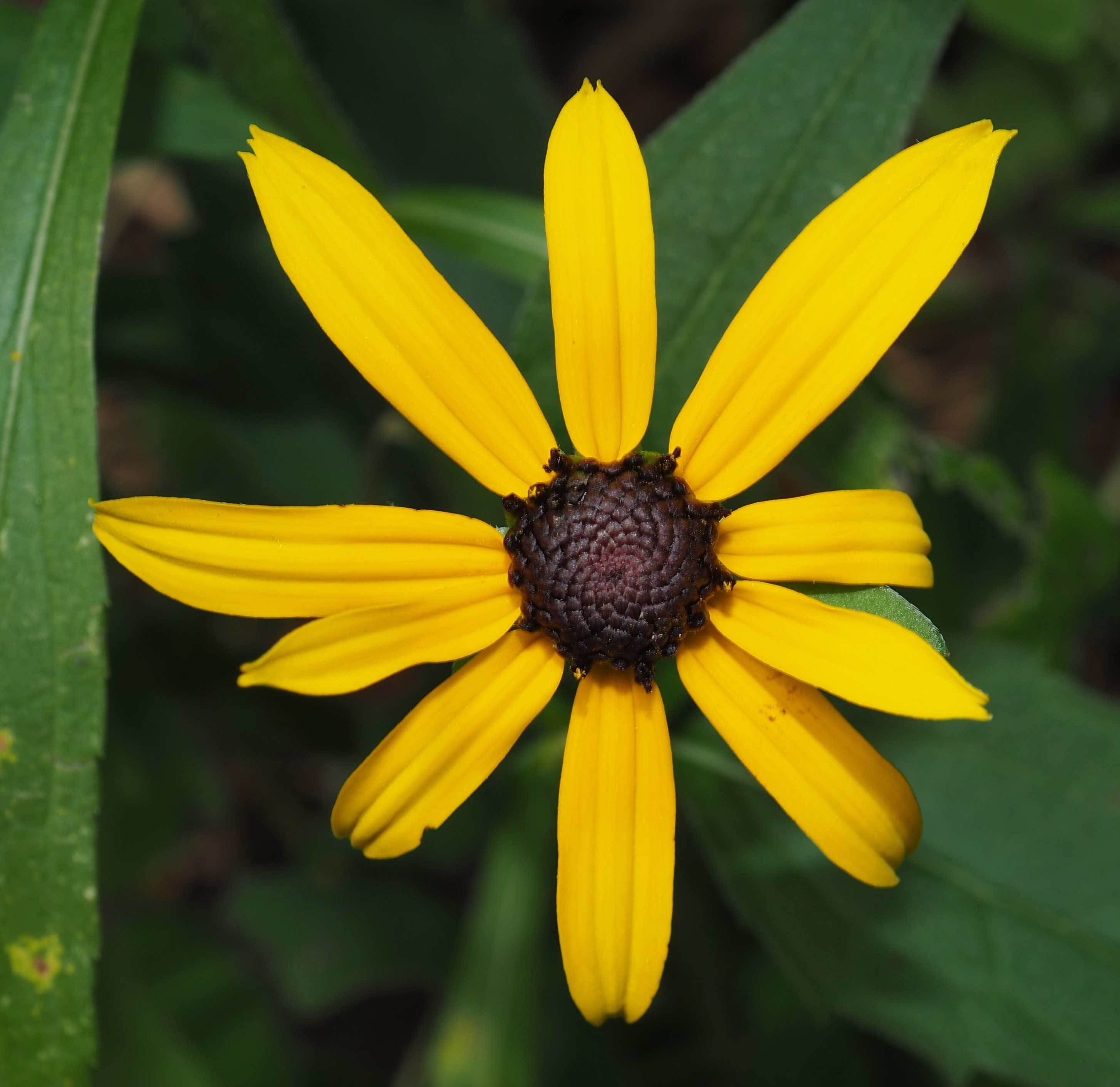

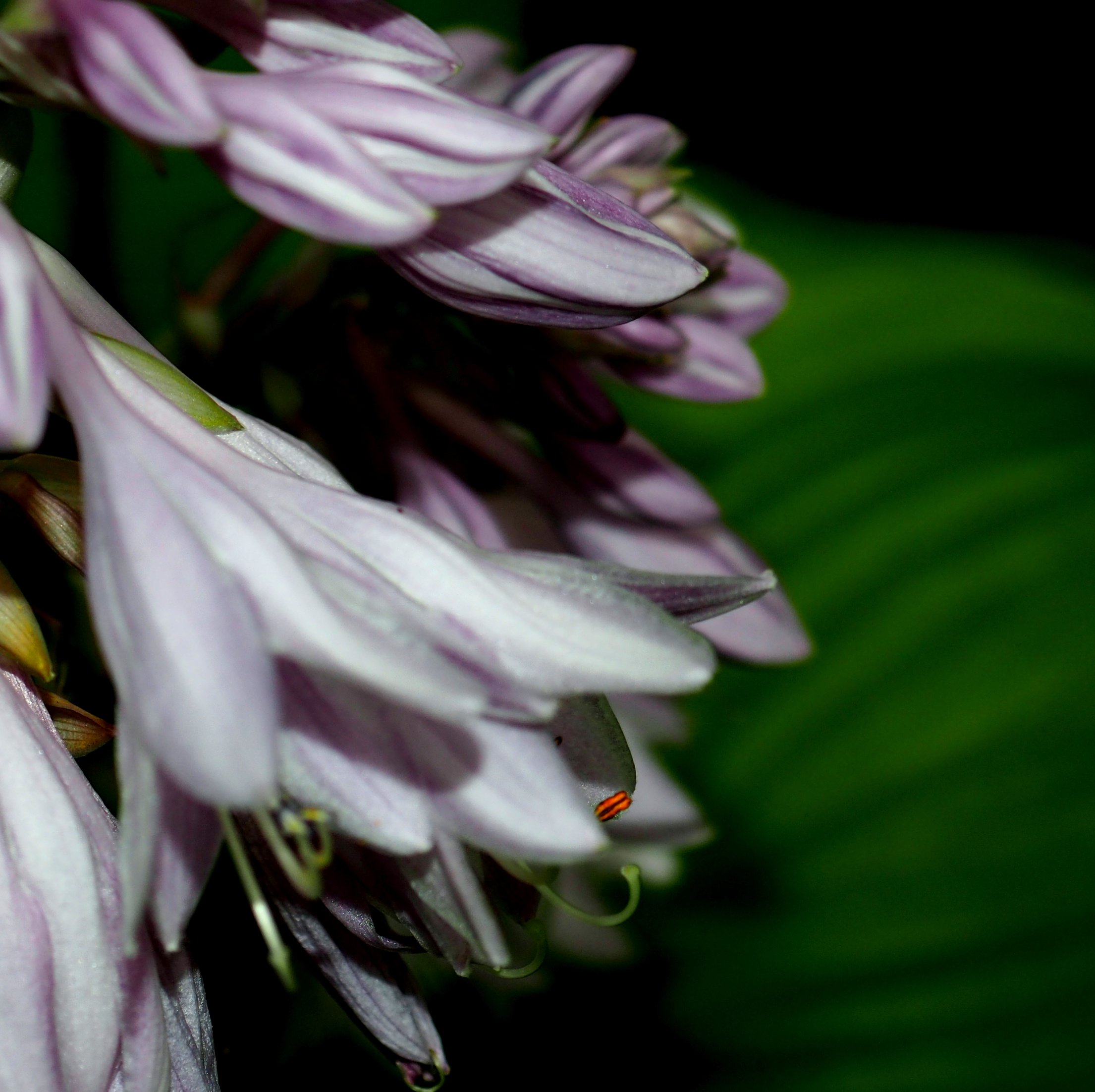
Remember that there is information in the name of the file for each image. You can see it by mousing over the image - look at the lower left of the screen. Or you can click on the image to get to the (usually) larger image. Then the info is displayed in the address line above. Sometimes the second click will actually display a different view of the original image.
The ants continue to fascinate me. We're starting out with a couple of carpenter ants, and one that at first convinced me it was a diapriid and not an ant at all because of its long abdomen until I realized part of the length of the abdomen was SHADOW!
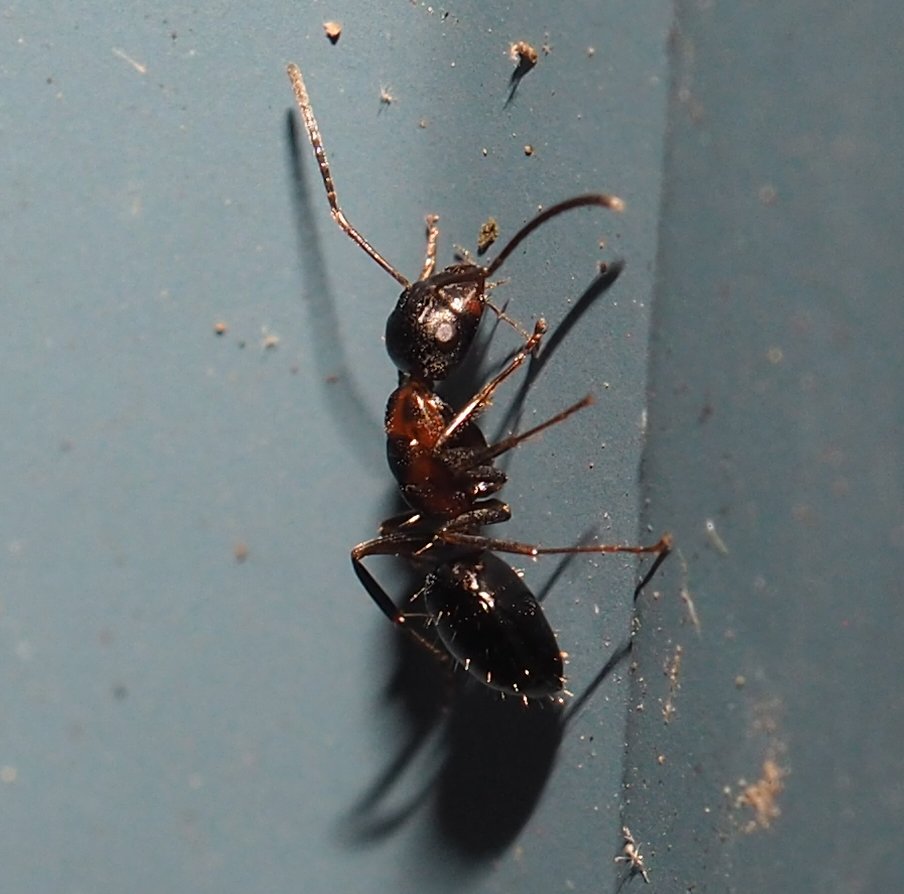
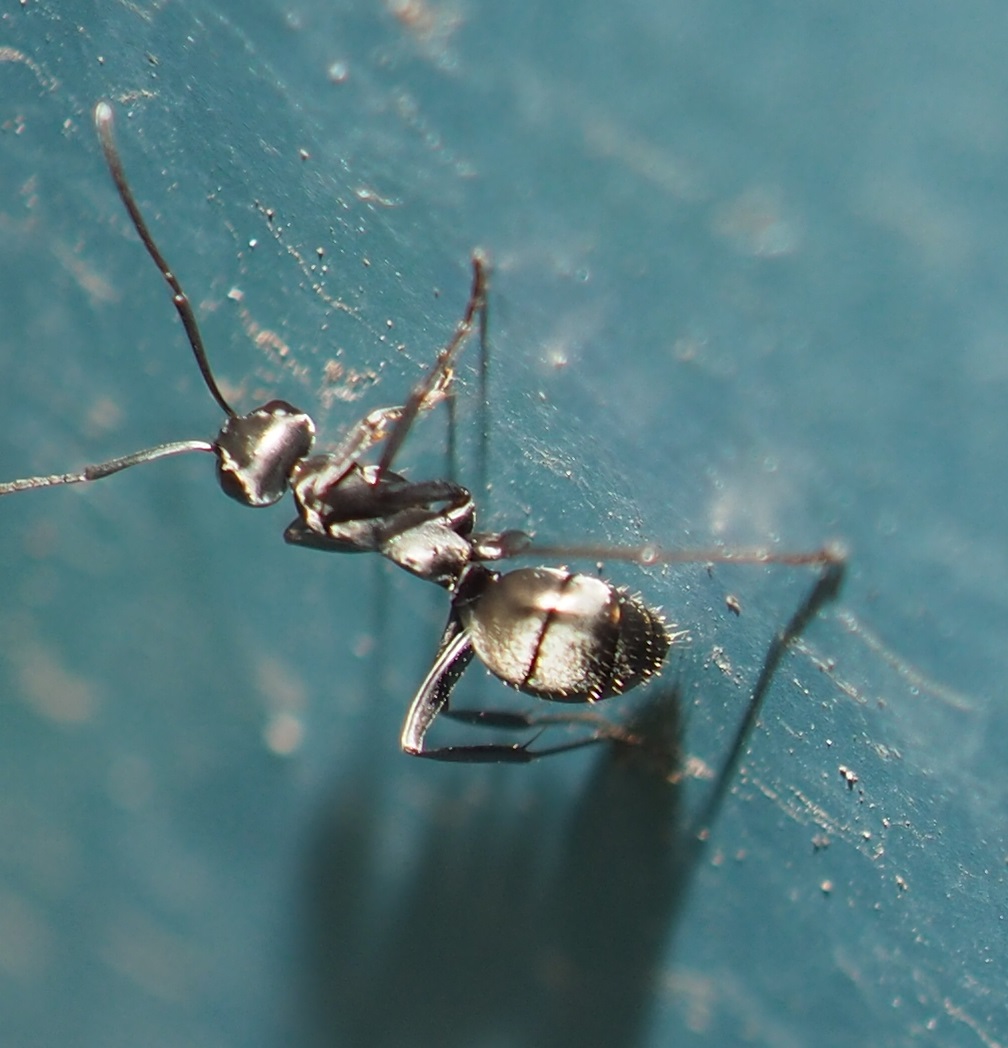
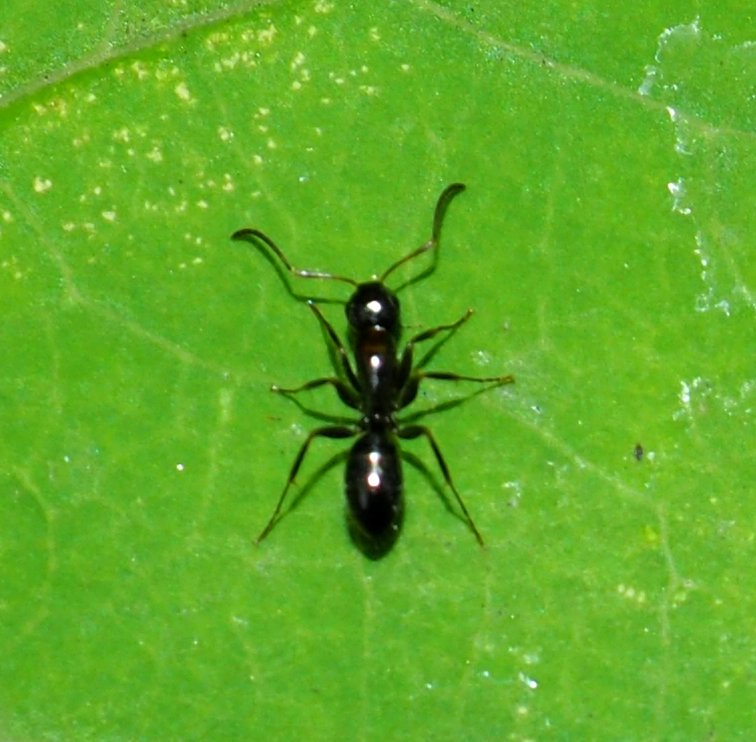
This first lovely ant on an oak leaf was actually not alone. Please note that it seems to have just discovered the ovoid shape at top (even though the ant has turned itself to seem to be walking away with it (the ovoid). While I was cropping this picture, I finally saw the brownish version of it way over on the left margin of the picture (image 2).

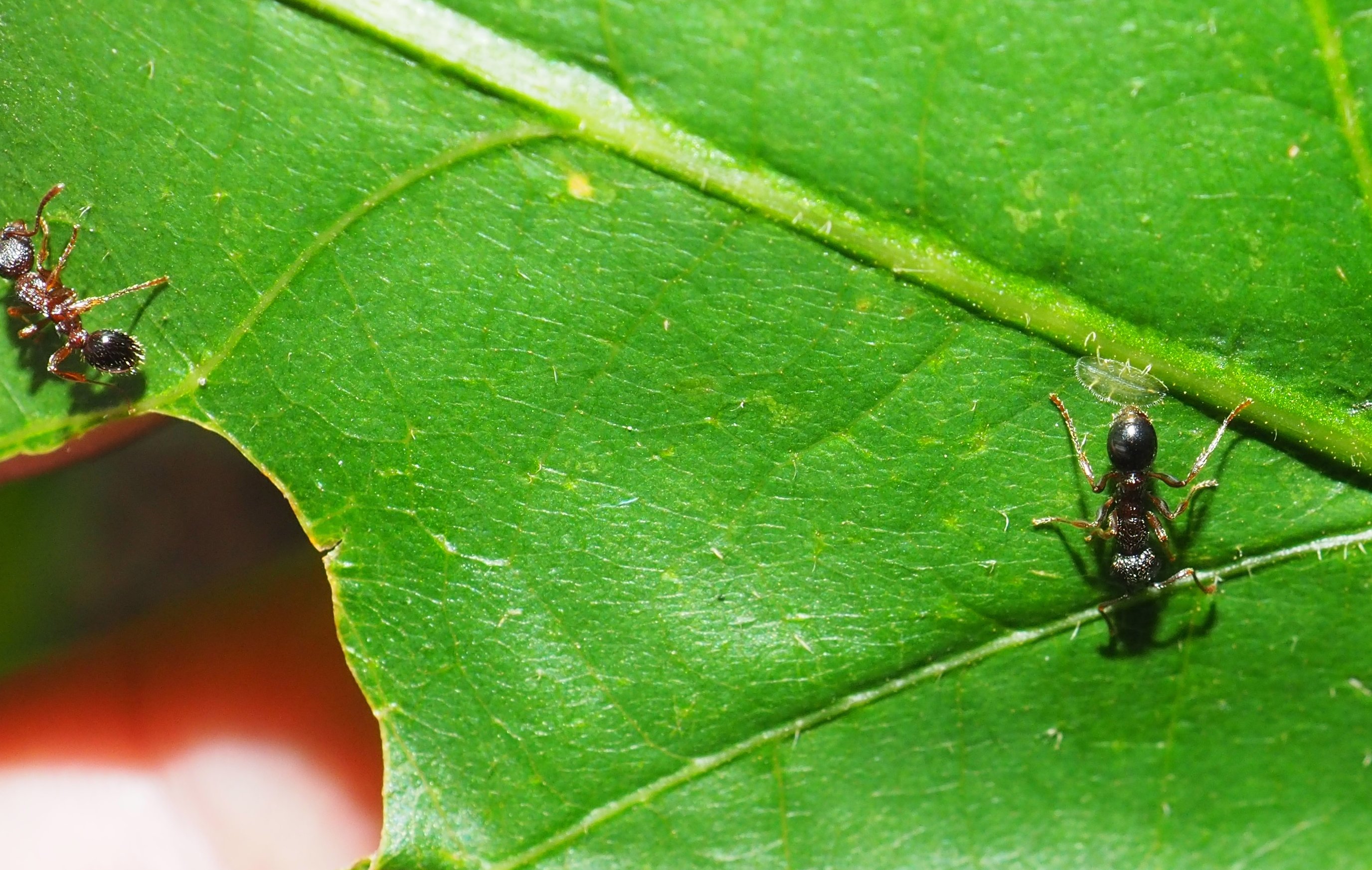
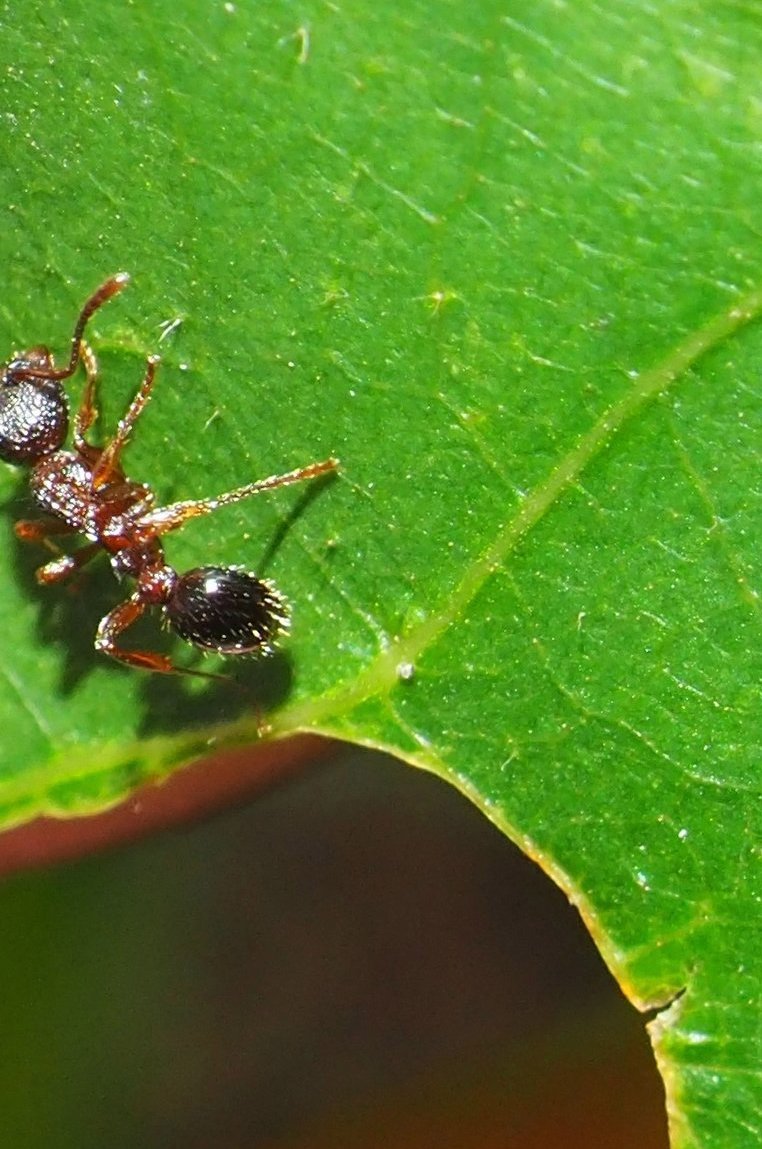
If you are puzzled with this ant of gorgeous brown features, so am I. It looks as if someone had sprayed a coating of brown over a black version of itself. The first picture was taken on aster or goldenrod. Second and third are Camponotus subbarbatus, a very colorful Carpenter.
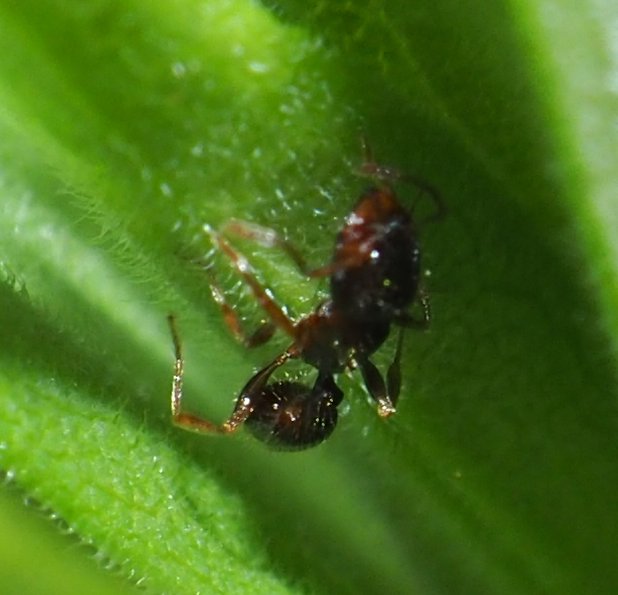
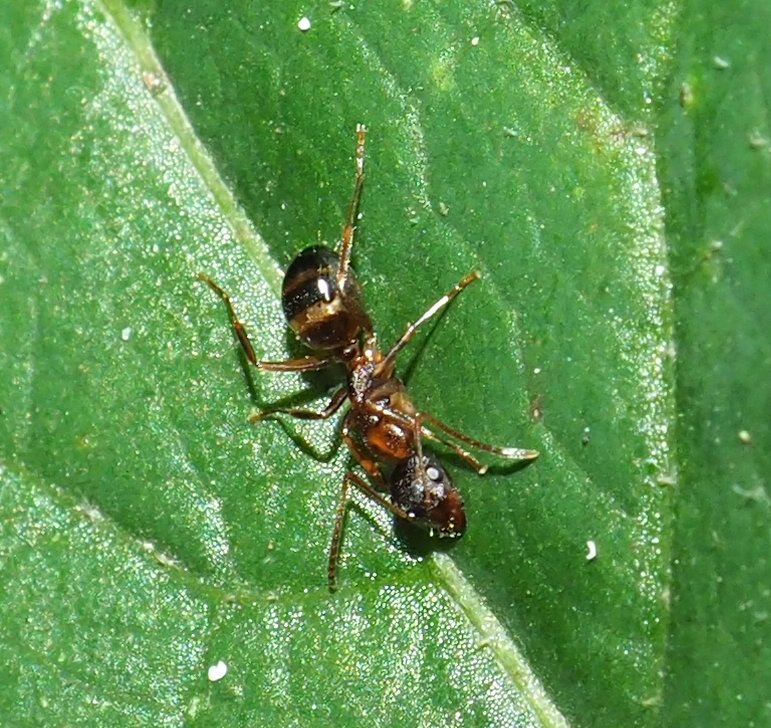
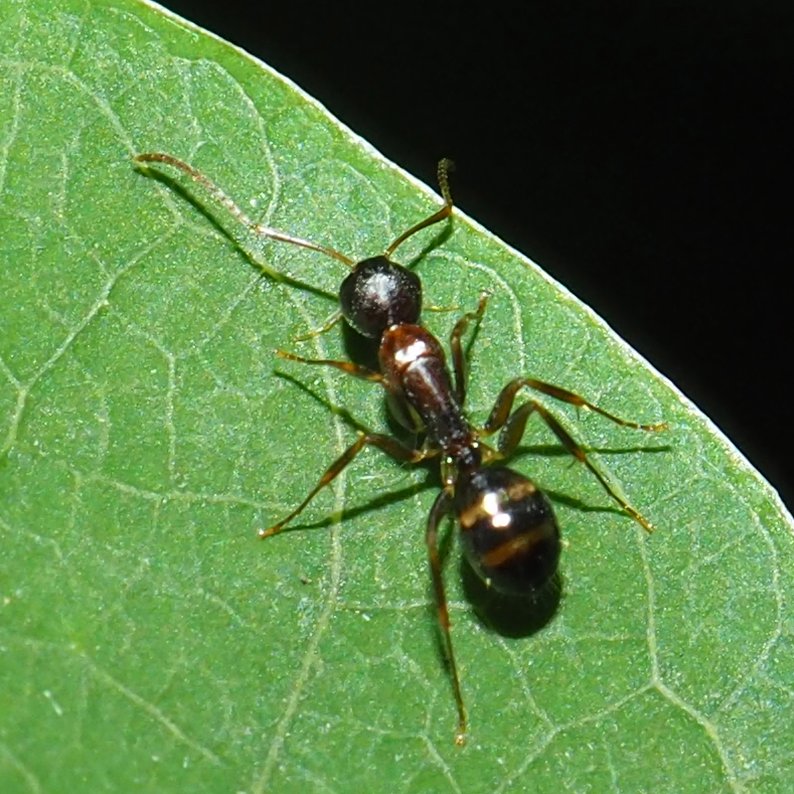
I only spotted two barklice on the workshop siding this week. Here is the hairy-wiwnged Polypsocus corruptus and its improbable cousin Polypsocus cruciatus, our favorite "tigery" barklouse. Go figure. I suppose if we were all to watch a few dozen episodes of "Finding Your Roots", maybe we'd be able to figure out how family trees work. Well, since for some reason most of the beetles hid out when they saw or heard me come close, so I only got this one Weevil, the Redbud Bruchid. I'm tempted to pull off a pod and open it to see if there are any baby beetles (grubs) inside. Maybe you can try too! Cheat sheet: In picture 3, the mouth is down and to the right. Look down there for long greyish blue eyes. Oh- I lied. Here is a shiny tiny blue-black beetle I shot yesterday so it goes with the others.
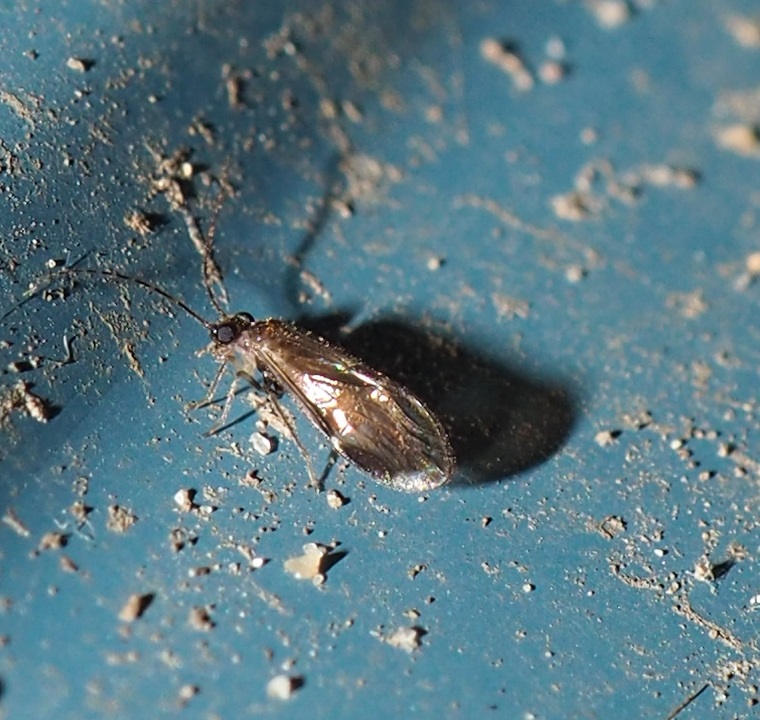

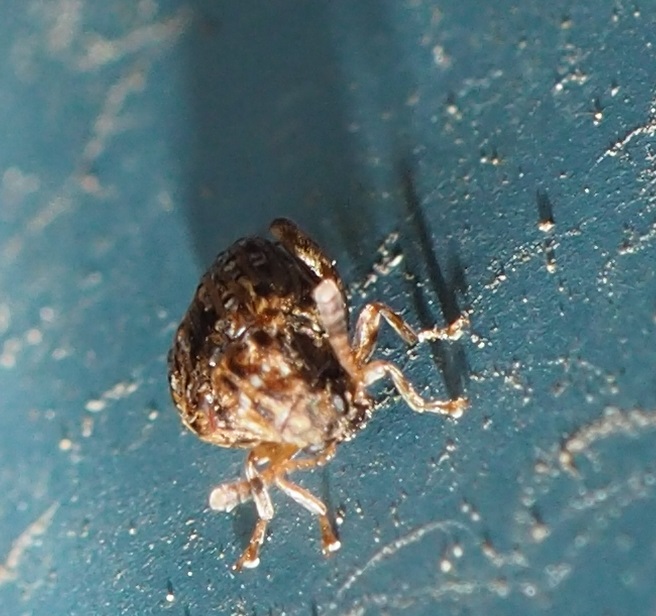
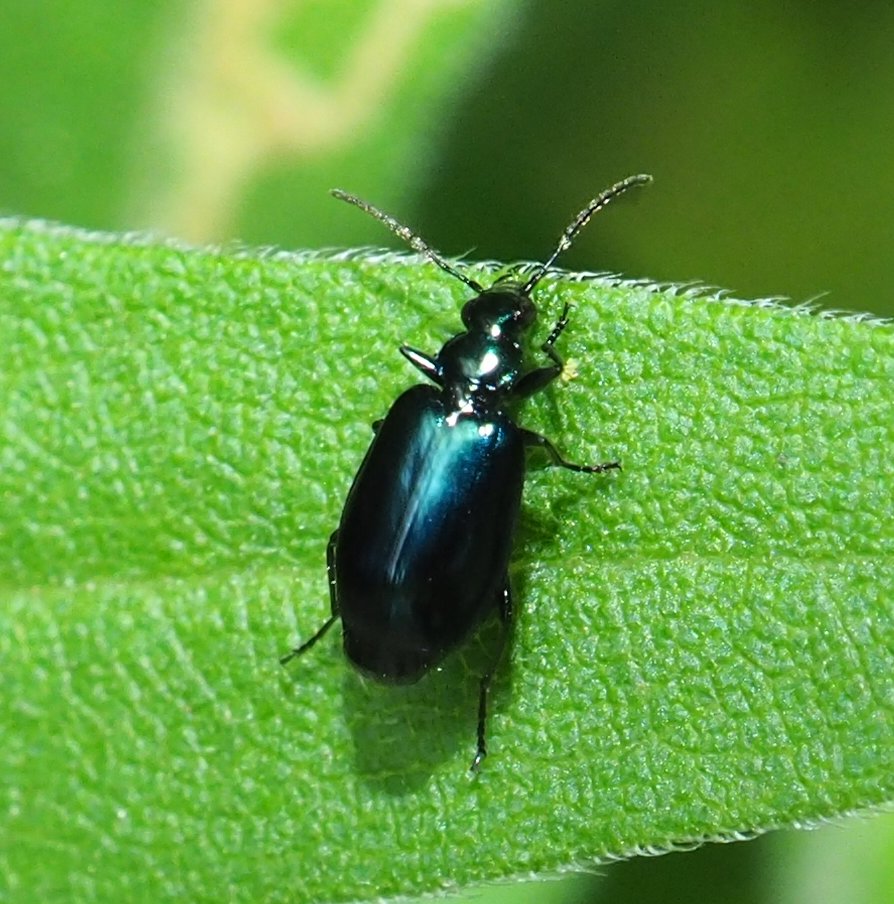
Coming around the beetles back to the bees, Here is a blue-green metallic bee. It could be a sweat bee, or it could be an Andrena bee (take a look especially at the pattern of yellow on the legs). In the third picture, here is another picture showing a very tiny pair of wings down in the lower right part of the picture. In fact, if you enlarge these bee-in-coneflower pictures, you may spot an interesting number of tiny creatures that seem to appear and disappear. Now do the same experiment off of drugs!

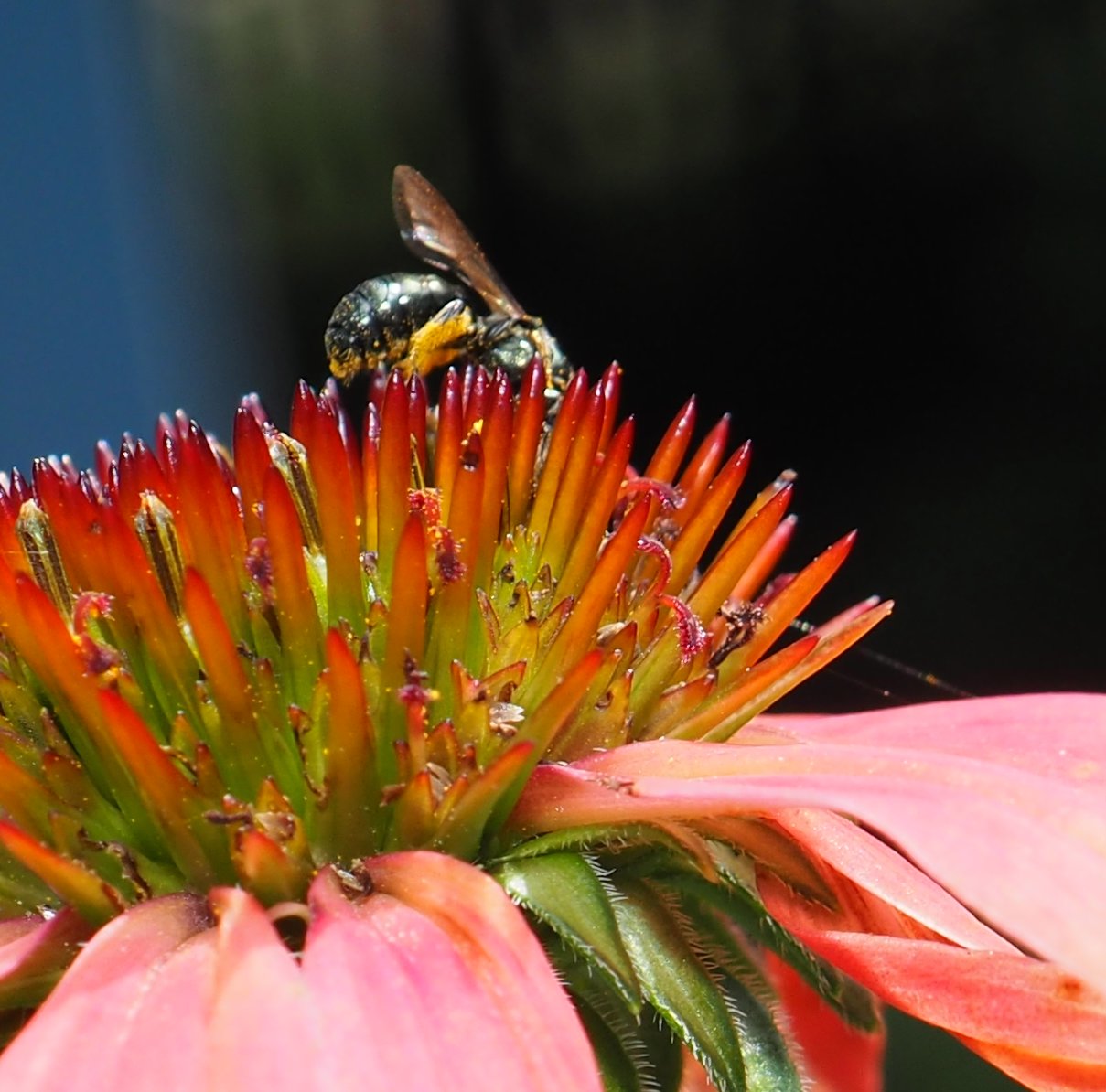
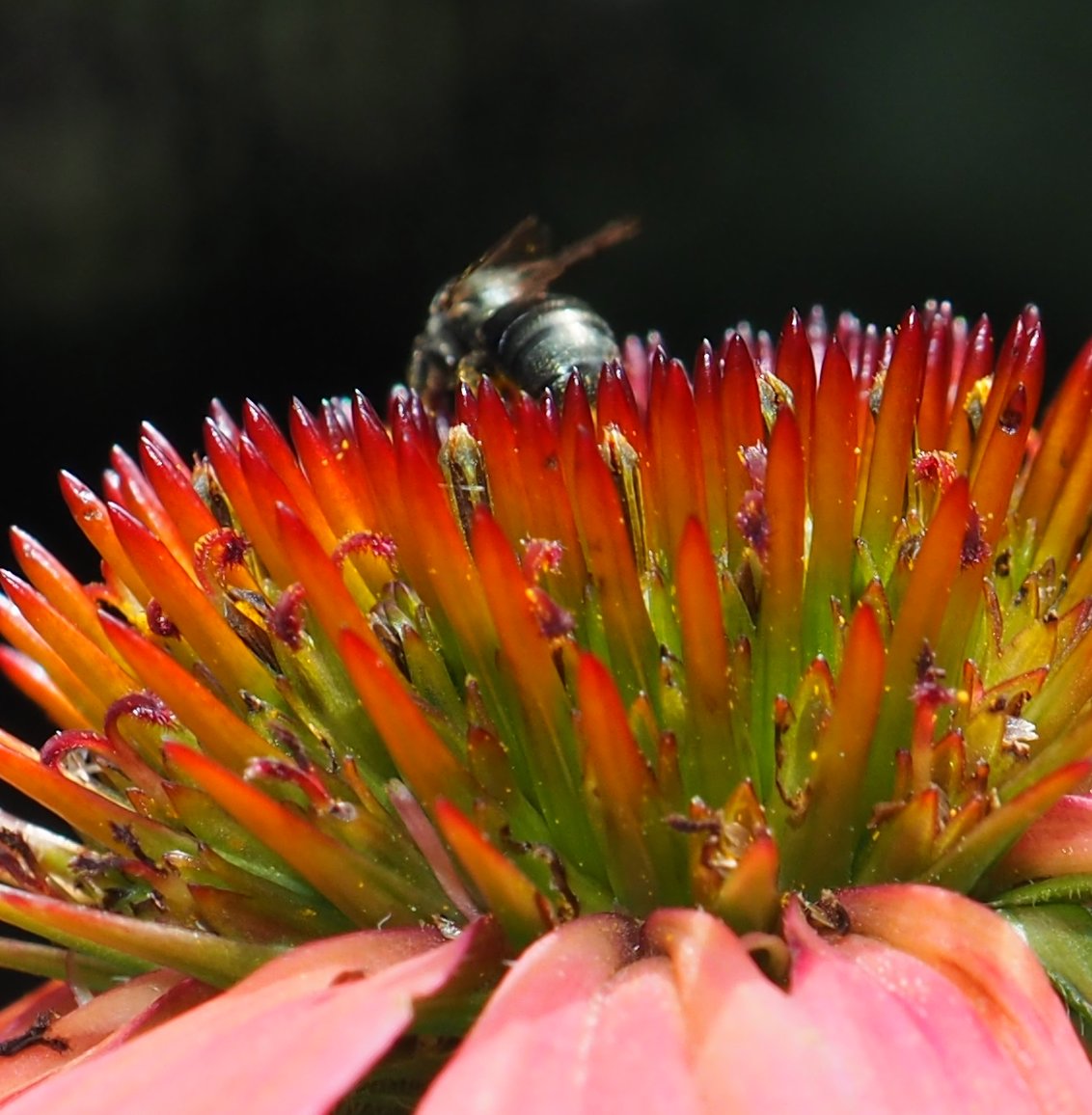
This must mean it's time for the bugs. We did pretty well this week, thanks to the leafhoppers. The assassin babies were easy to find too. There were at least 4 separate ones one day. This second one was quite the stunt-man-or-woman. Then comes what can only be a Lace Bug, though the last picture (from July 31, 2016!) is a lot clearer. Almost exactly to our date.

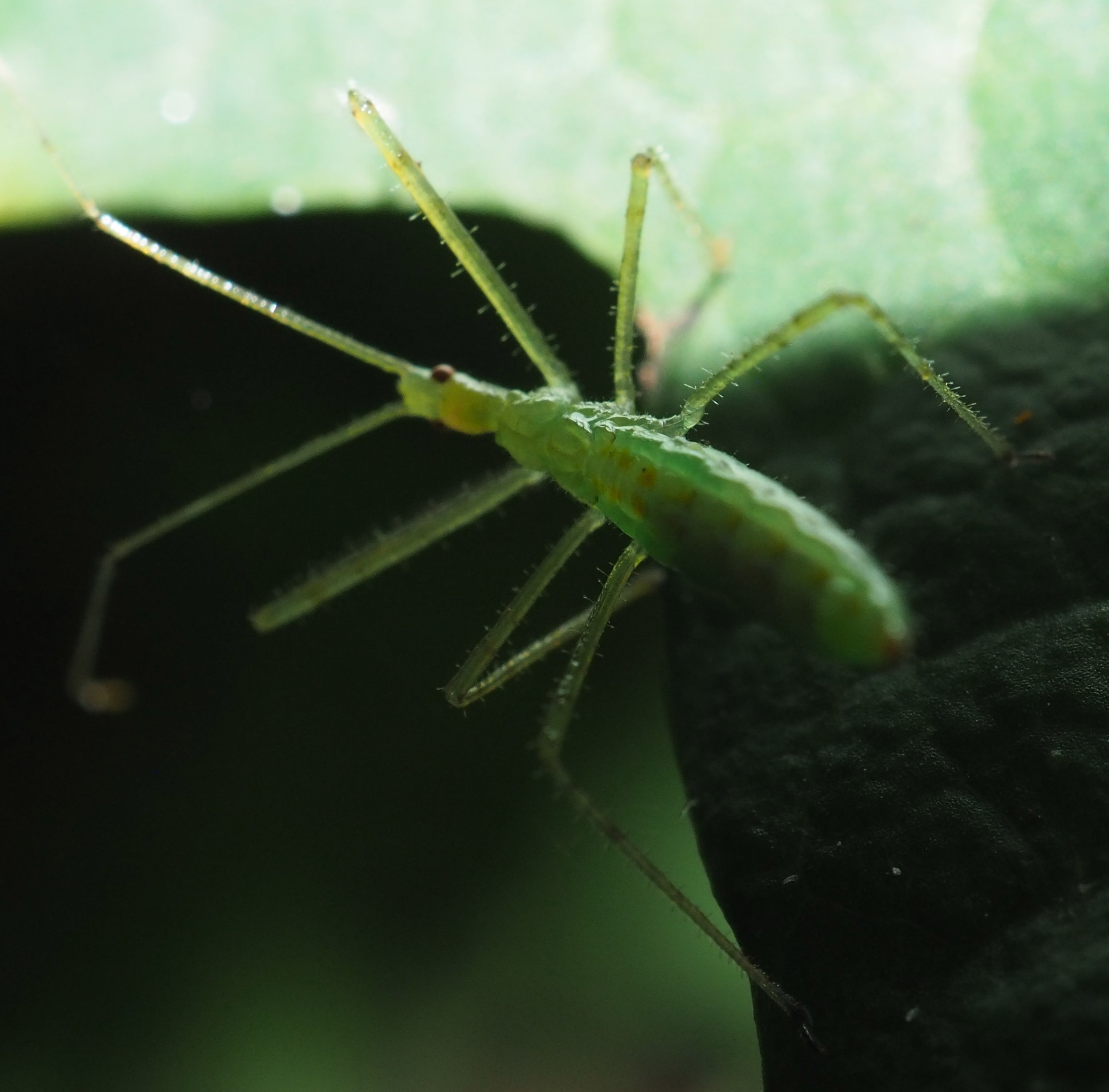
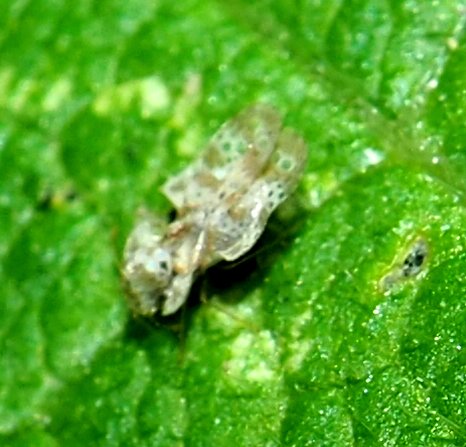
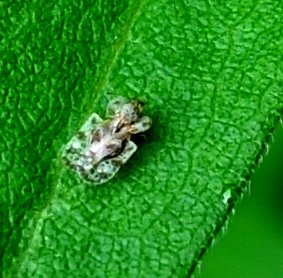
This leafhopper or whatever it is - I got such a strange angle on it - is a new one to me. The second one we saw before. The third is a brand new one in a brand new Zoot Suit. Remember them? Then you are OLD...
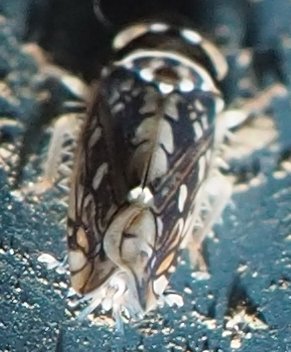
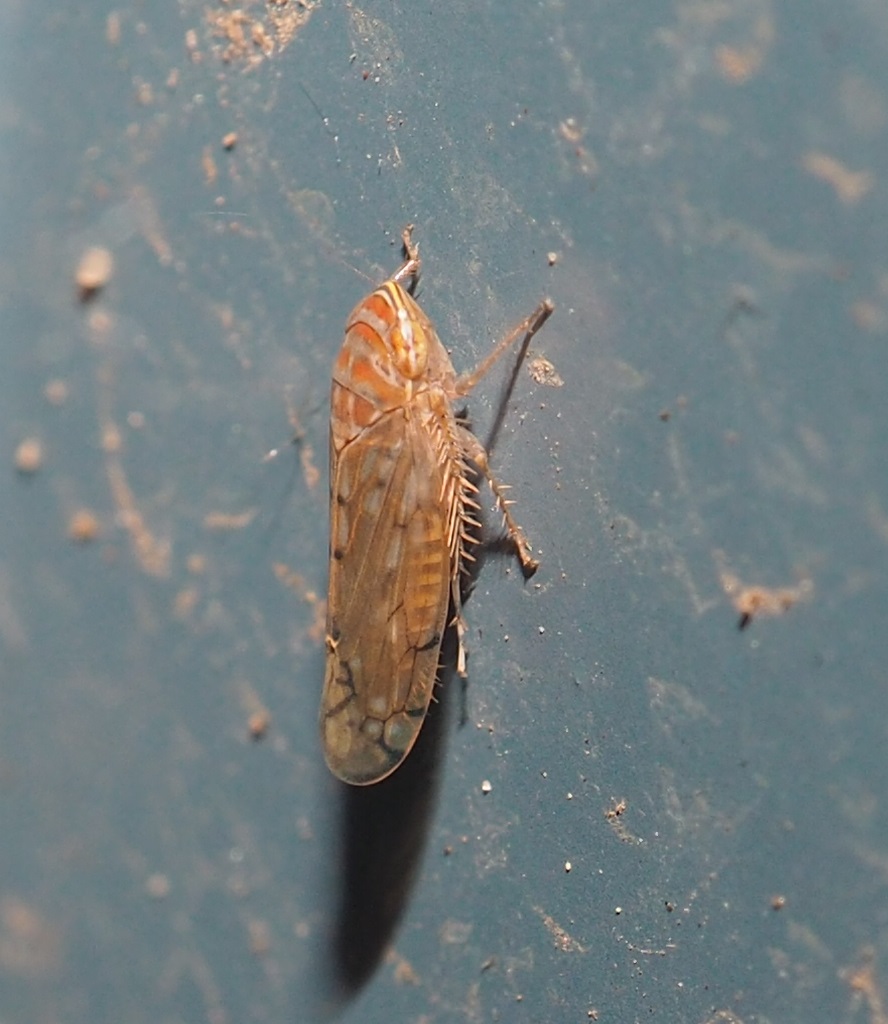

Here's one of those Candy-stripers in a slightly less blue, more green in their wings. Second is one we saw for the first time a few weeks ago.
Third is one I used to see regularly - it's in the genus Scaphoideus and often shows a flower print pattern on the back end of its wings.
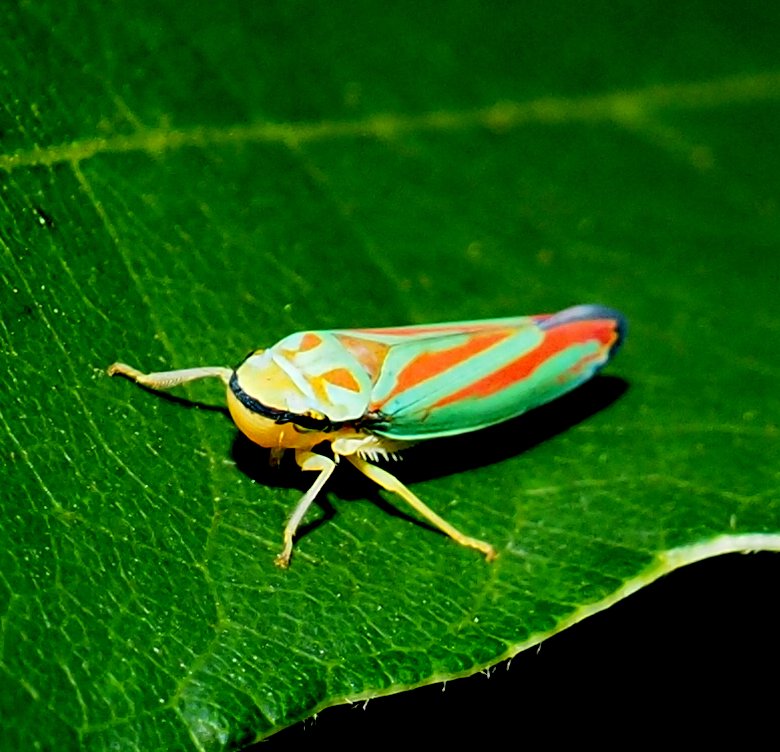
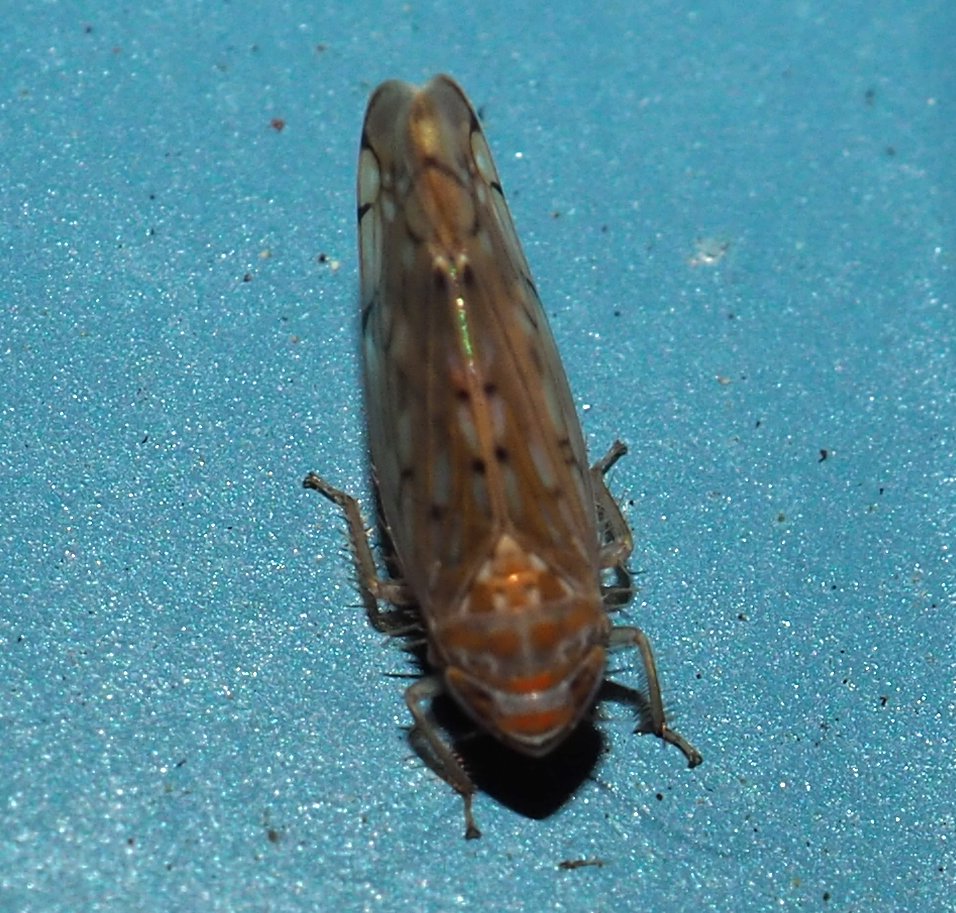
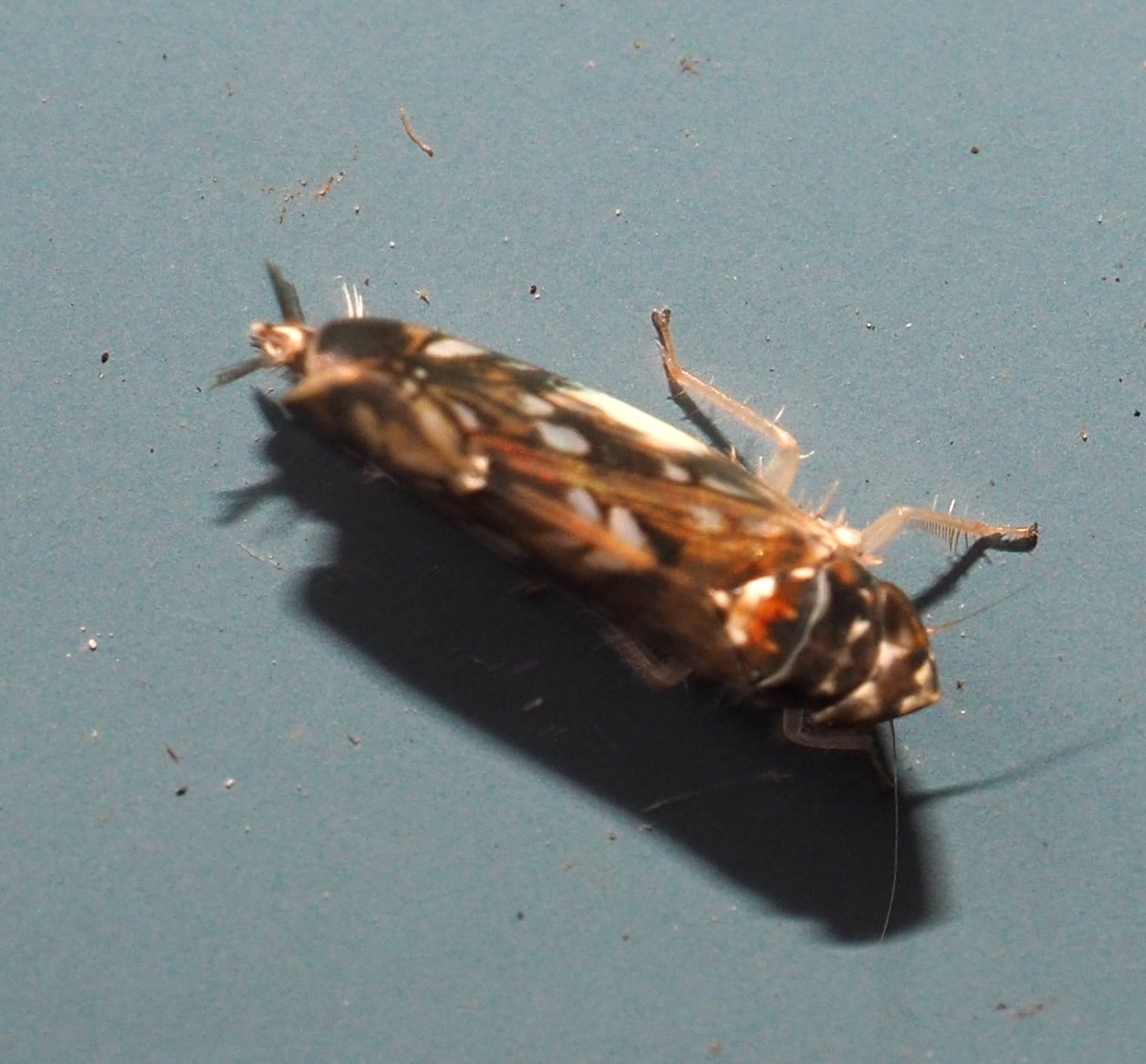
This yellow leafhopper (It seems to have spiky rear legs) is common on the goldenrod. The next is the Meadow Spittle Bug, not a leafhopper.
The next one SEEMS more spittly to me. The fourth picture is of it standing up behind the goldenrod.

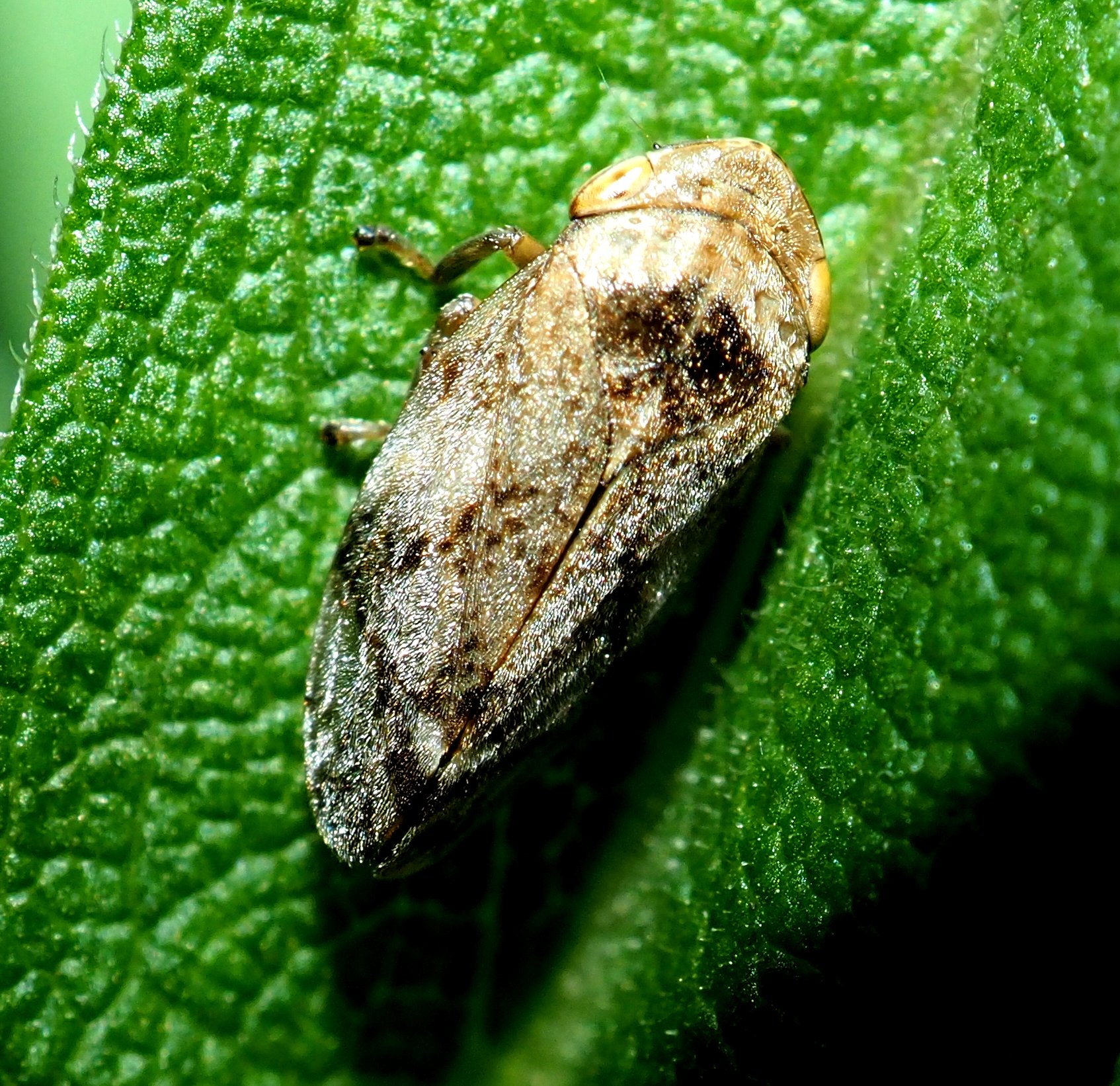
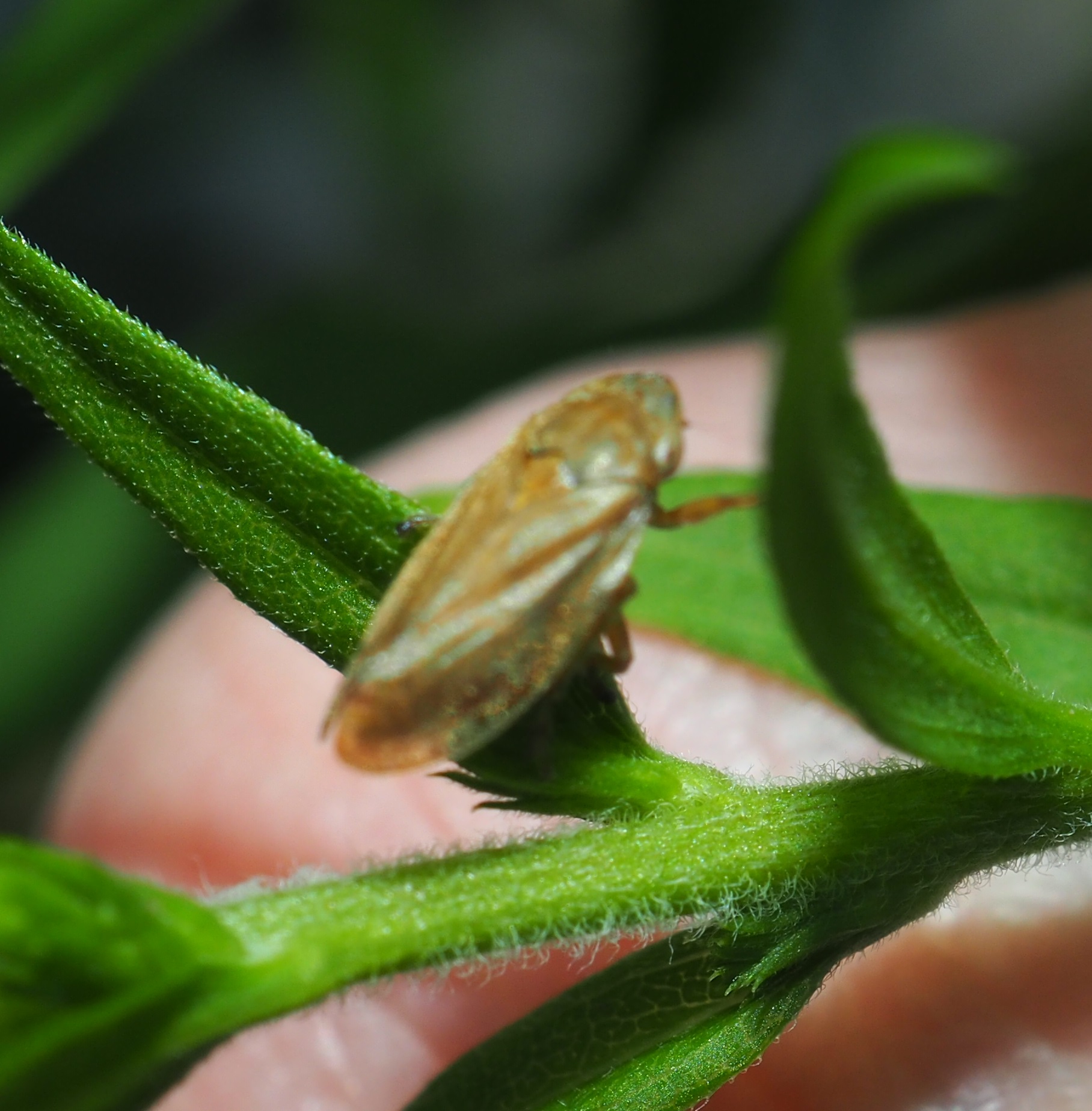
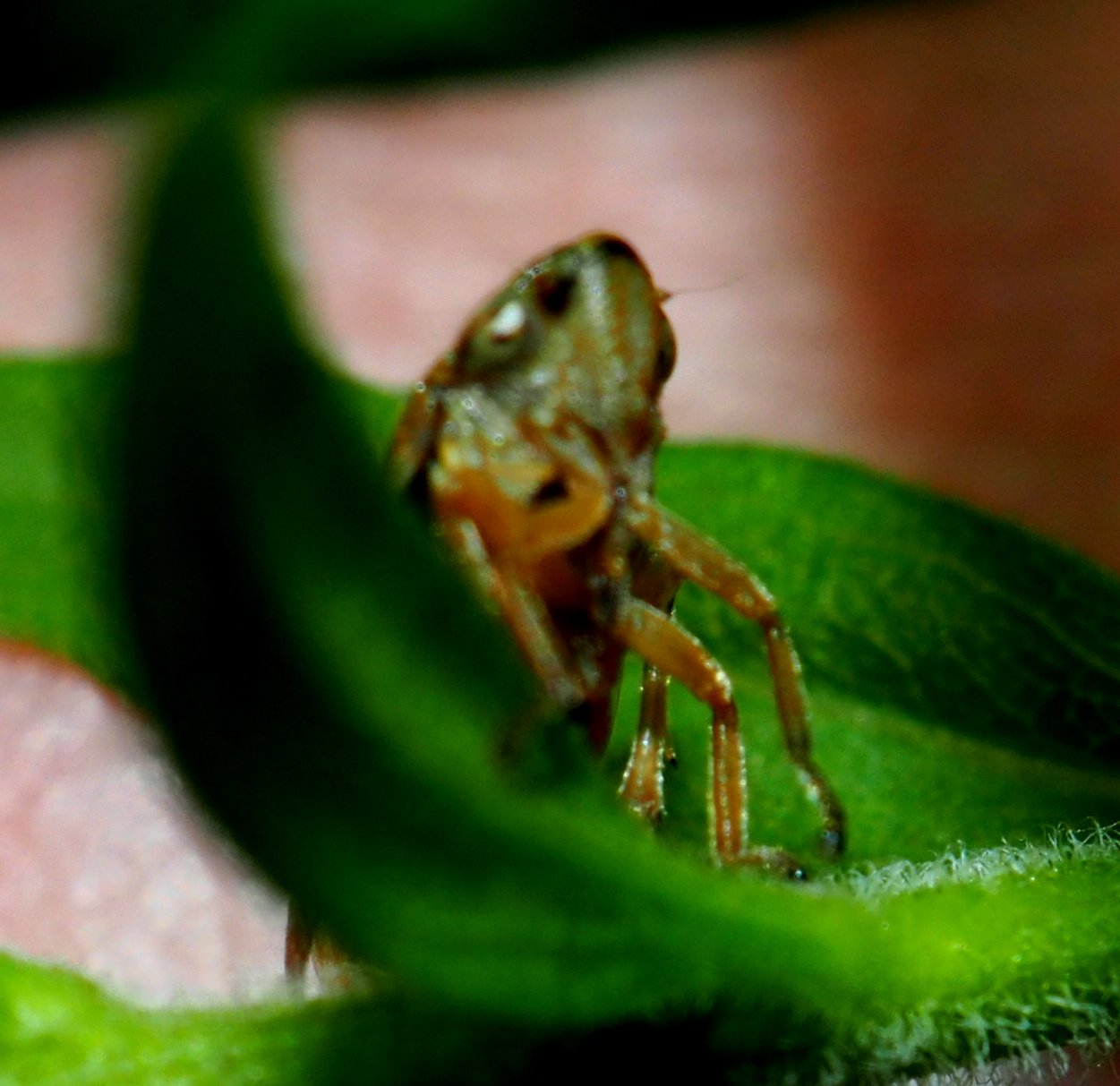
Let's see what we can make out of the stink bugs. This big one is probably the last instar before it shows its true colors as the Brown Marmorated Stink Bug, may I just write BMSB? The second one is probably the instar before the first one. Third seems to be a yet one earlier instar. But the earliest yet are the just-hatched ones, surrounded by their empty shells, in the next next row.

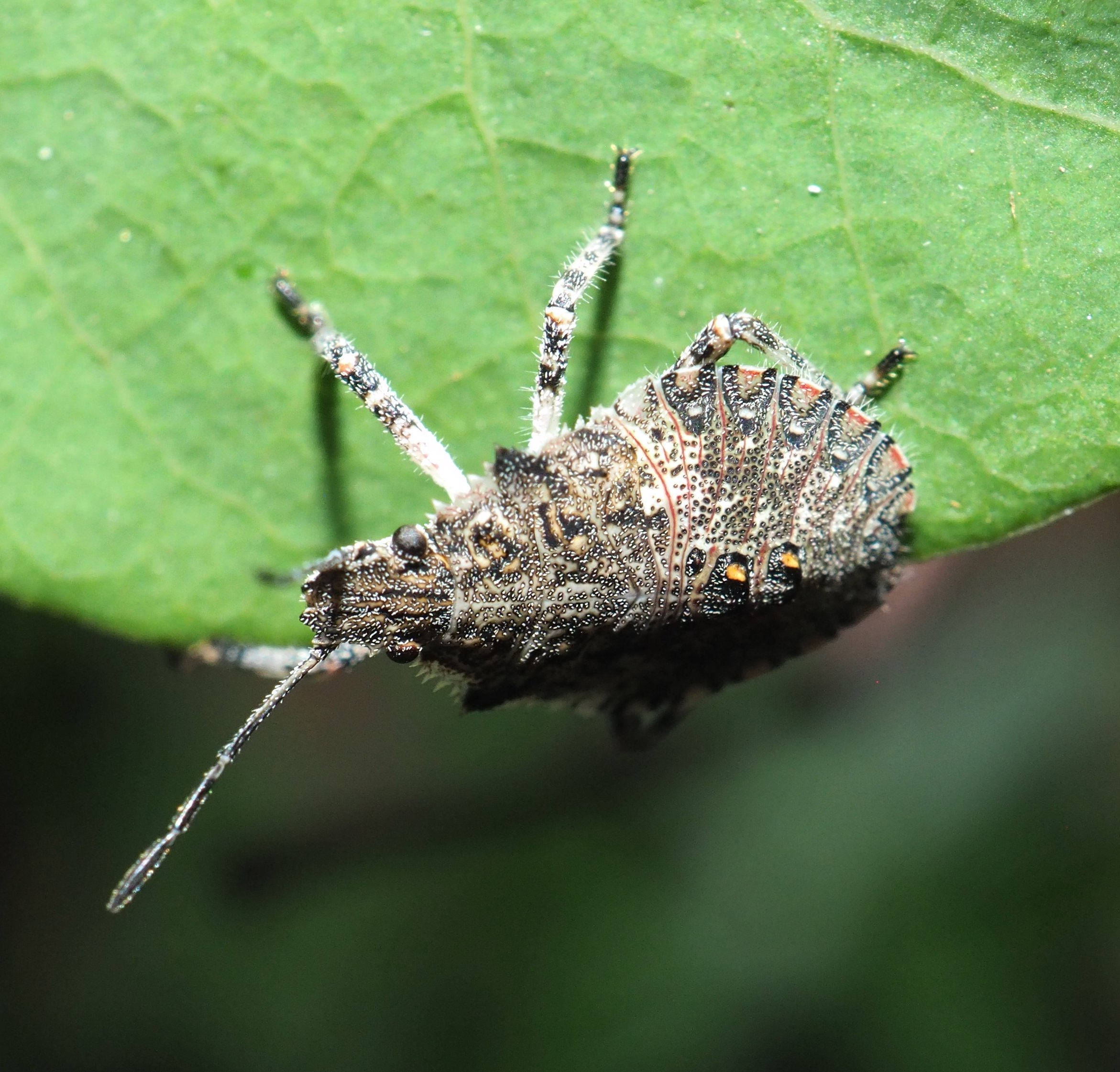
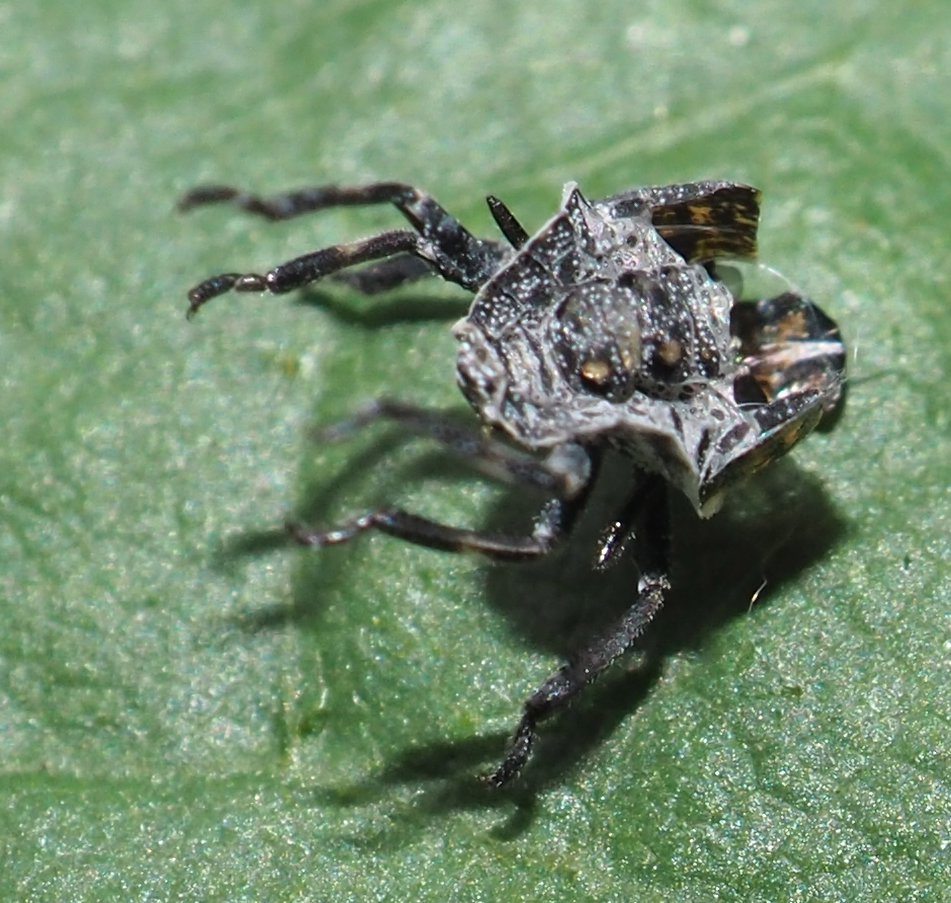
The following picture of eggs and just-hatched little red and black bugs I found in Bugguide.net - and they truly are what I was afraid of: BMSB's. But the following set of hatched egg shells are different. You can compare the differences in the two sets of eggs - the pattern of breaks in the two kinds of eggs convinced MOI that the first set are BMSB's!
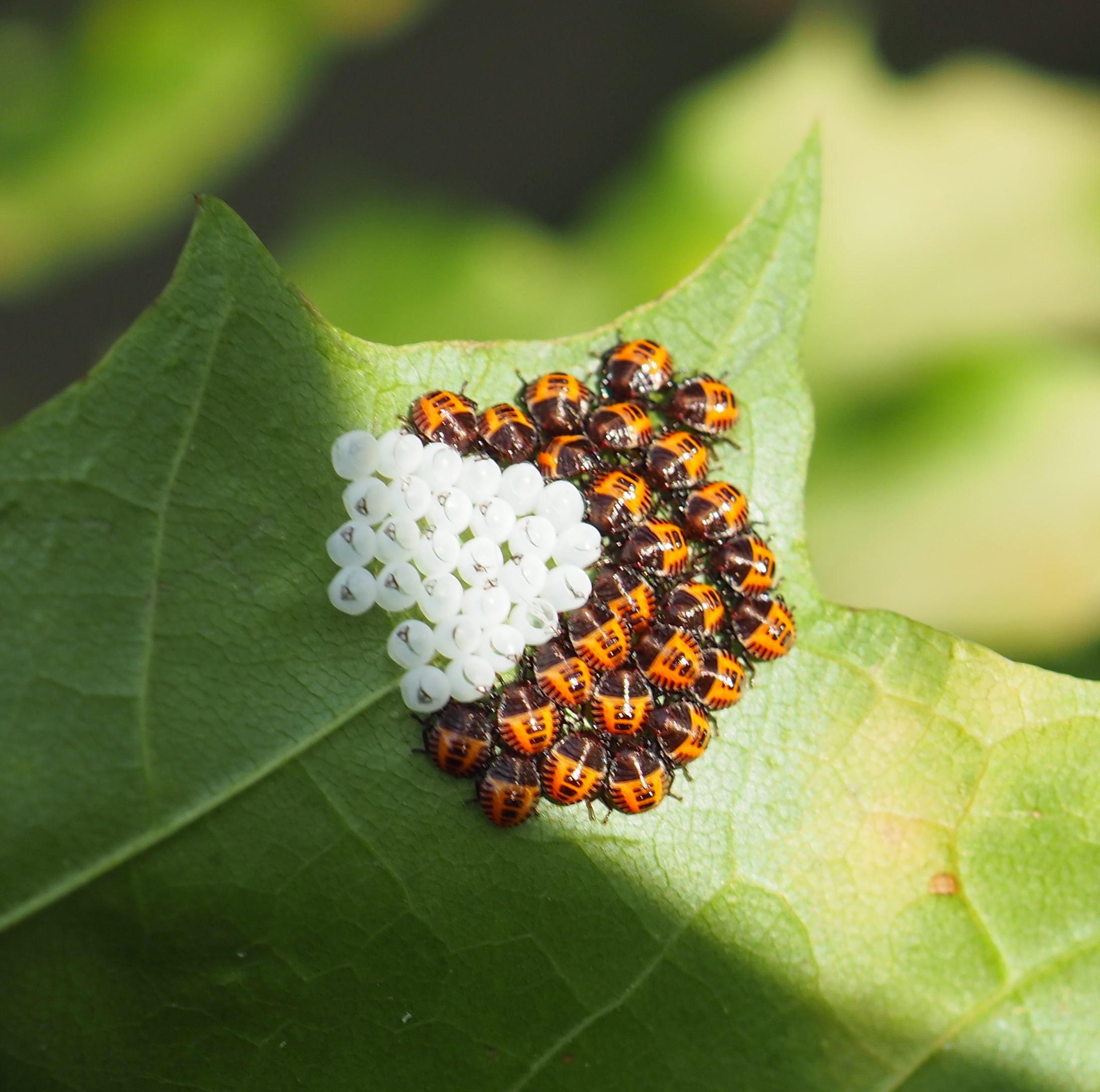
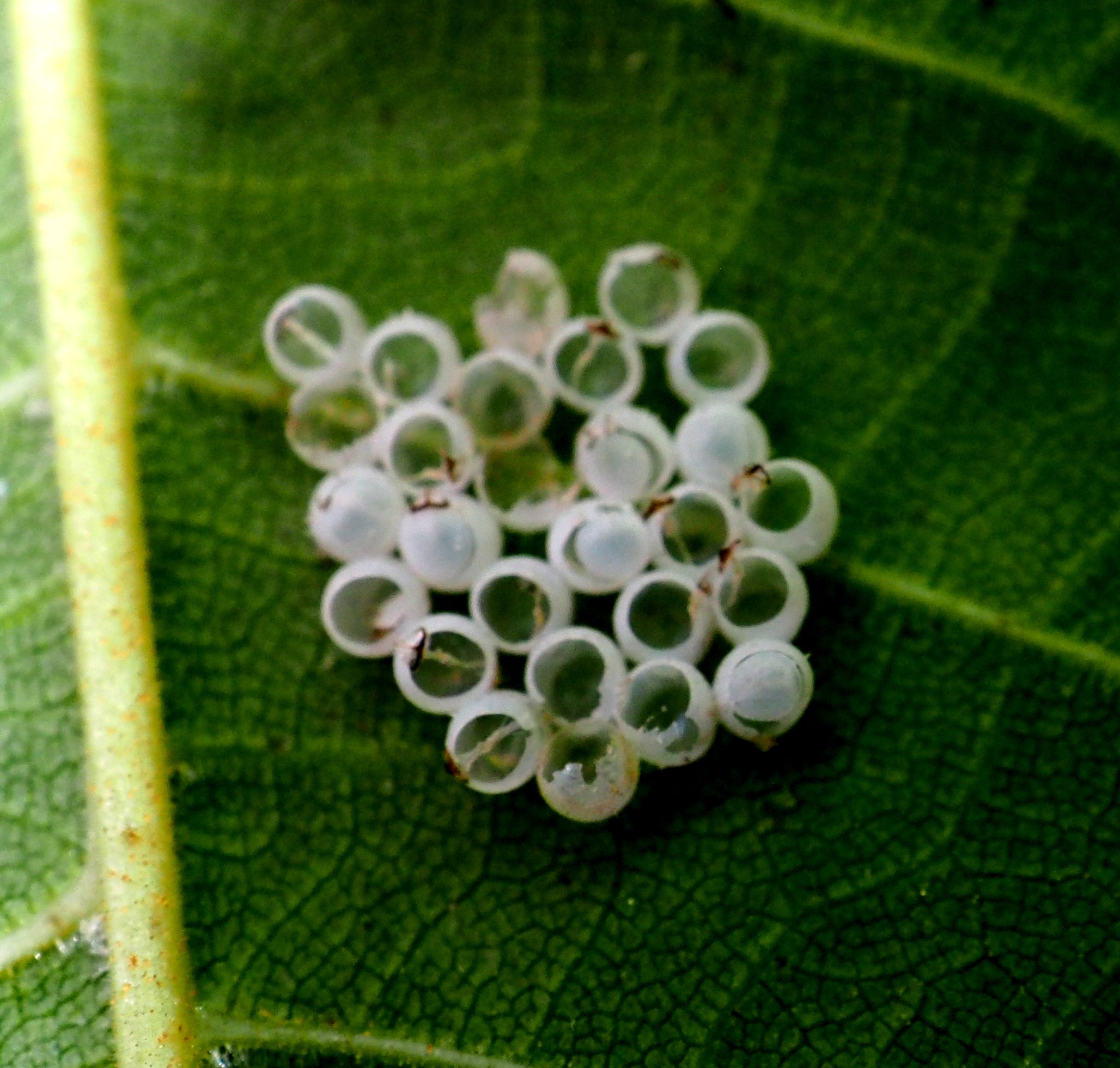

We made it to the flies! So many flies of many kinds. Here is what I think of as the generic FLY. It is in flight and so is a lttle fuzzy. But all three of the flies in this row are in the midst of flight. The third is a Moth Fly.
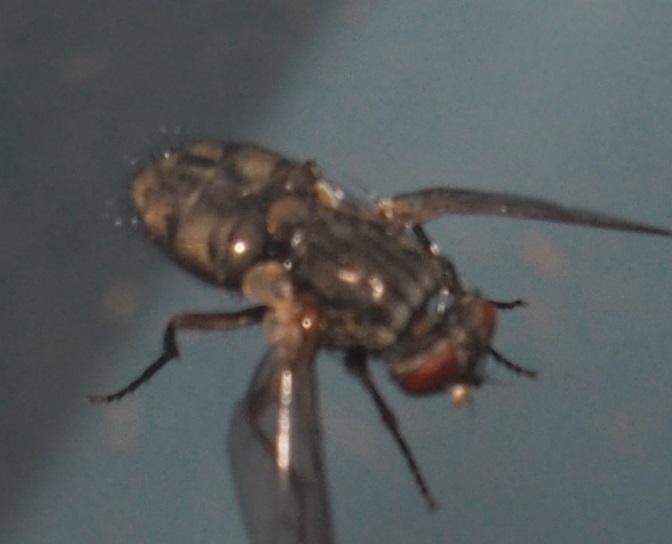
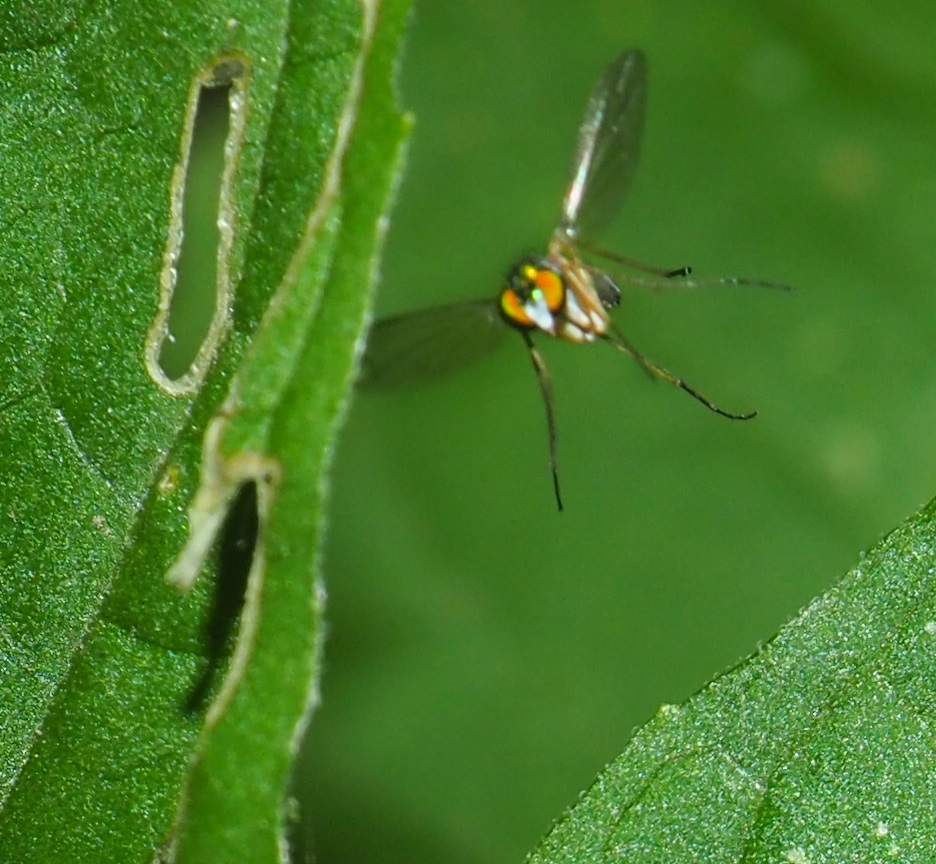
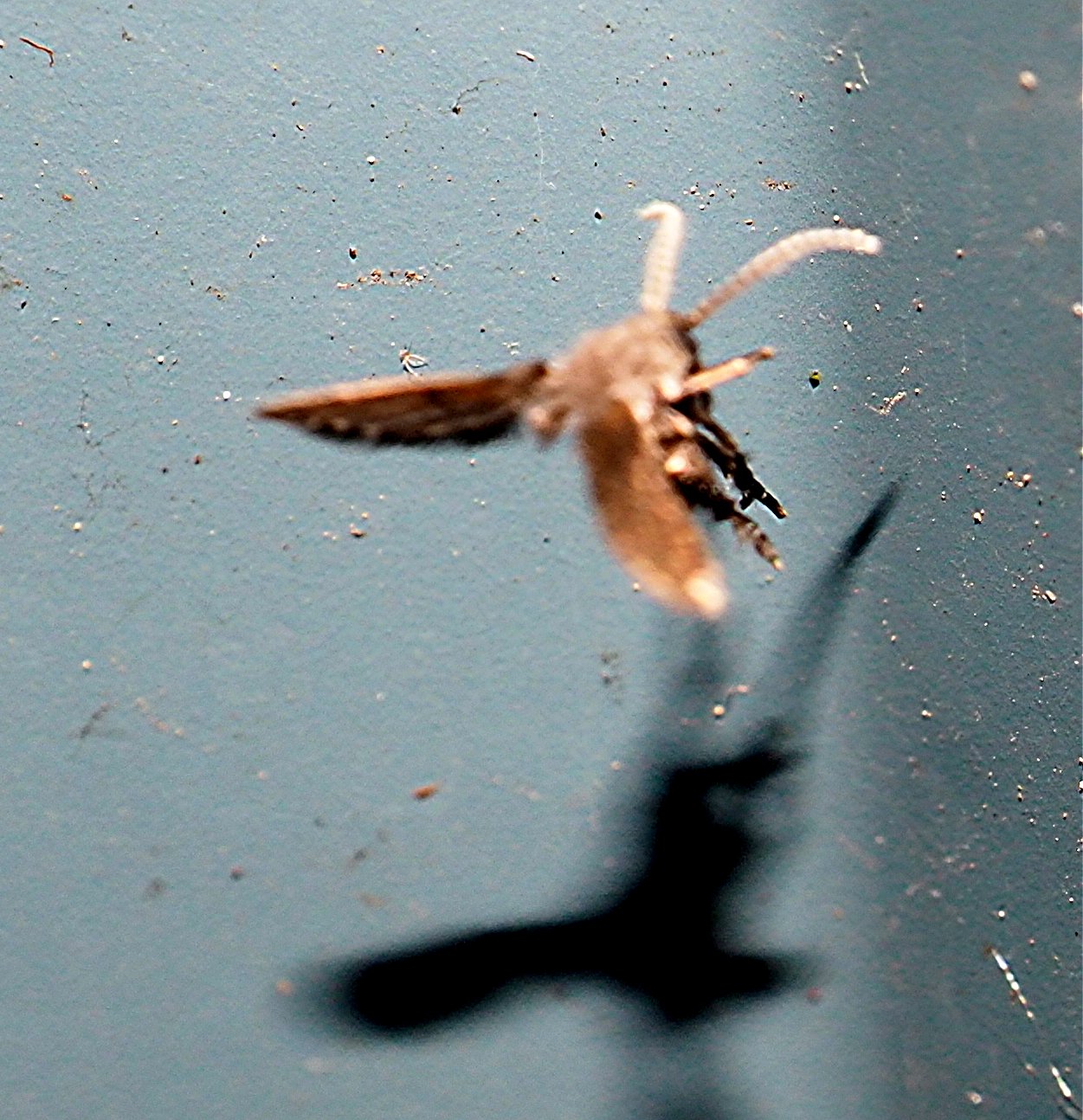
Here are a few of the flies we've see more than once. Minettia lupulina is very pretty and easily recognizable (Red eyes, blue thorax, yellow abdomen). And the one with rows or columns of black and white - a Flesh-eating fly.
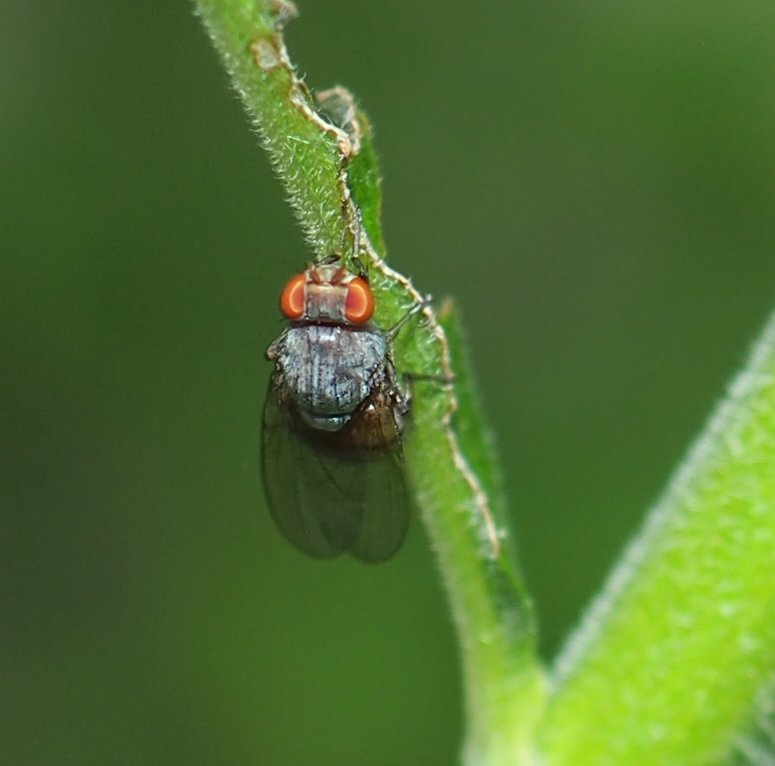
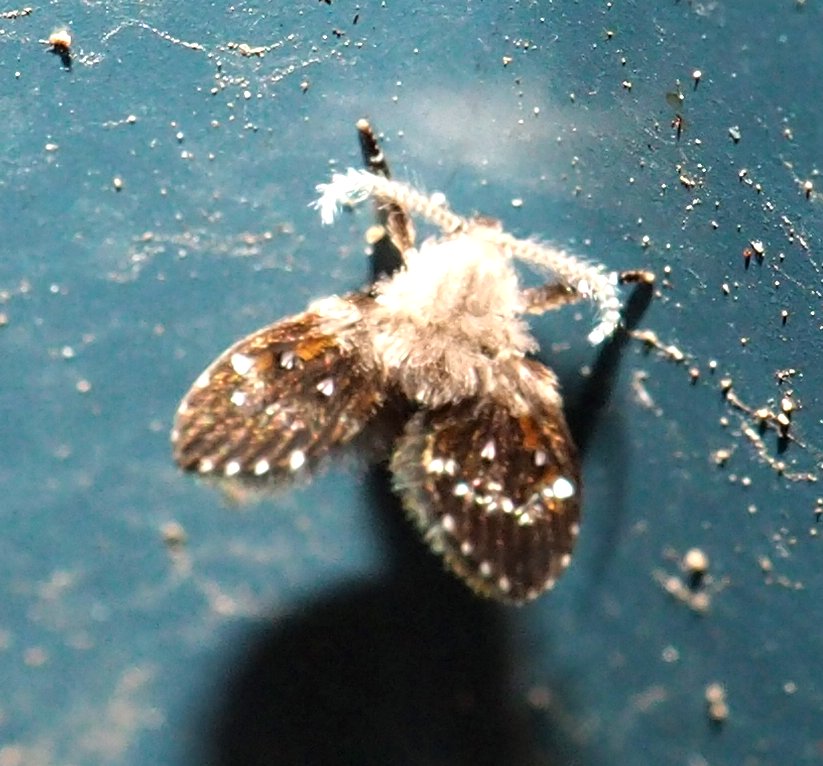
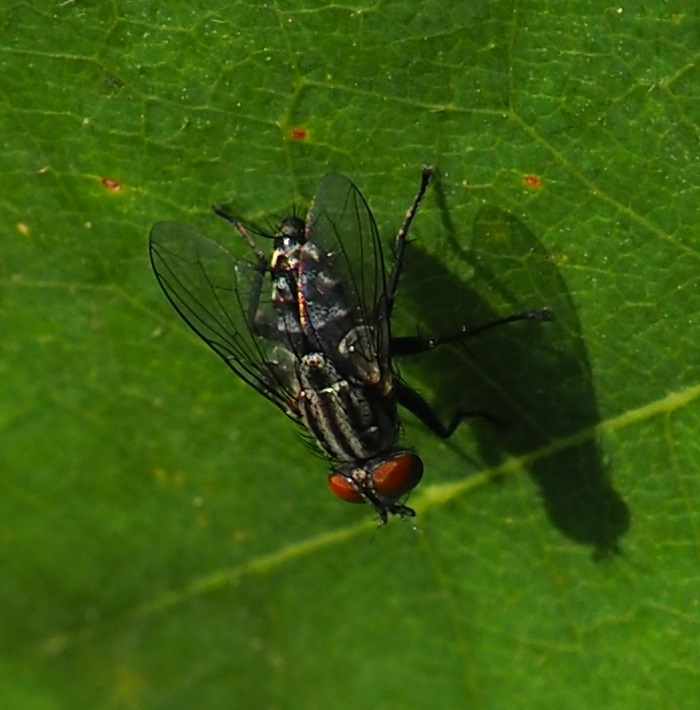
This mosquito had been flying around me but I thought we understood each other. I guess not! Here is one of those little bright orange flies, followed by another that looks a bit less brilliant orange. They might be the same species but if so there is a lot of variation in the various individuals.
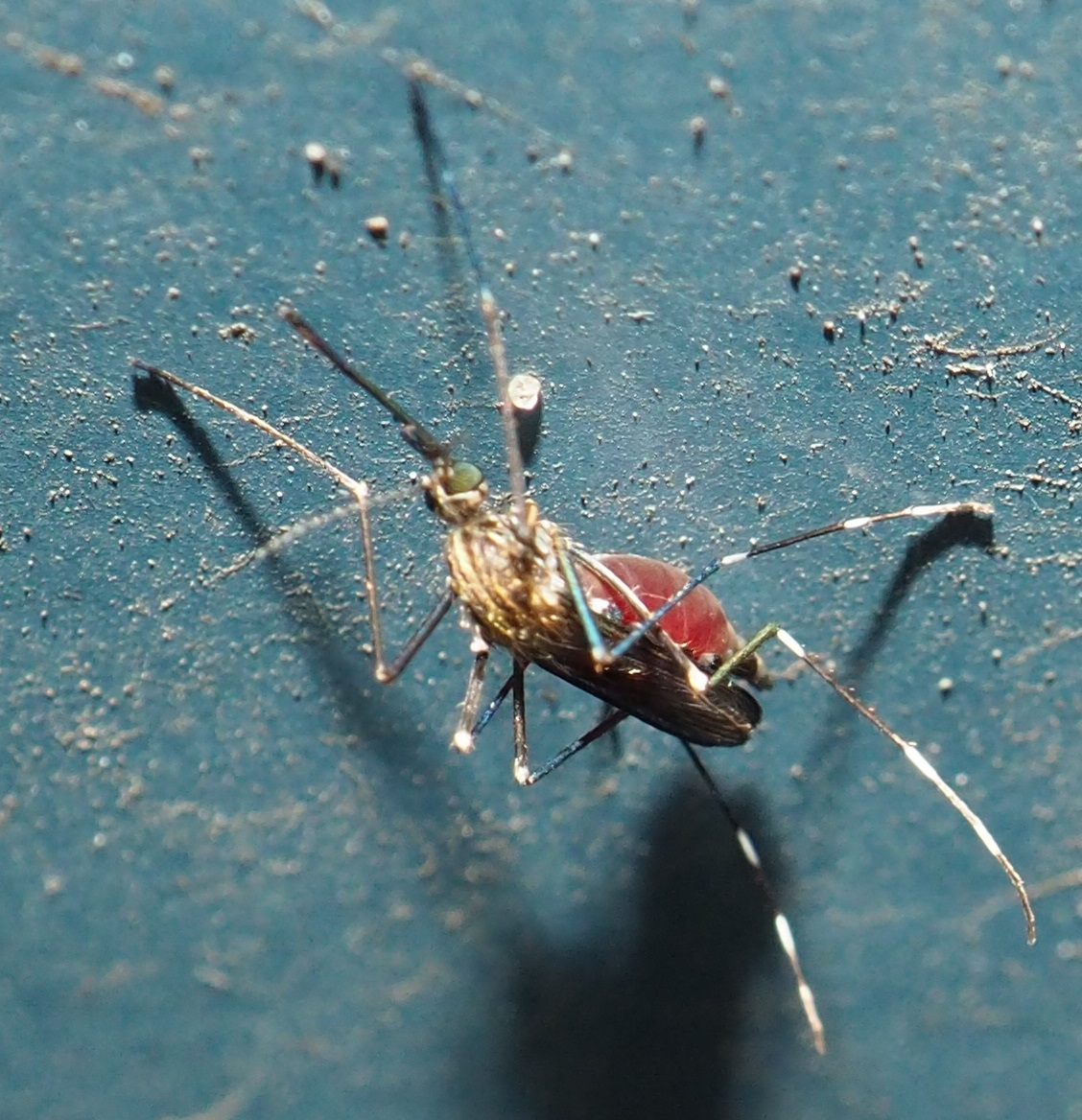
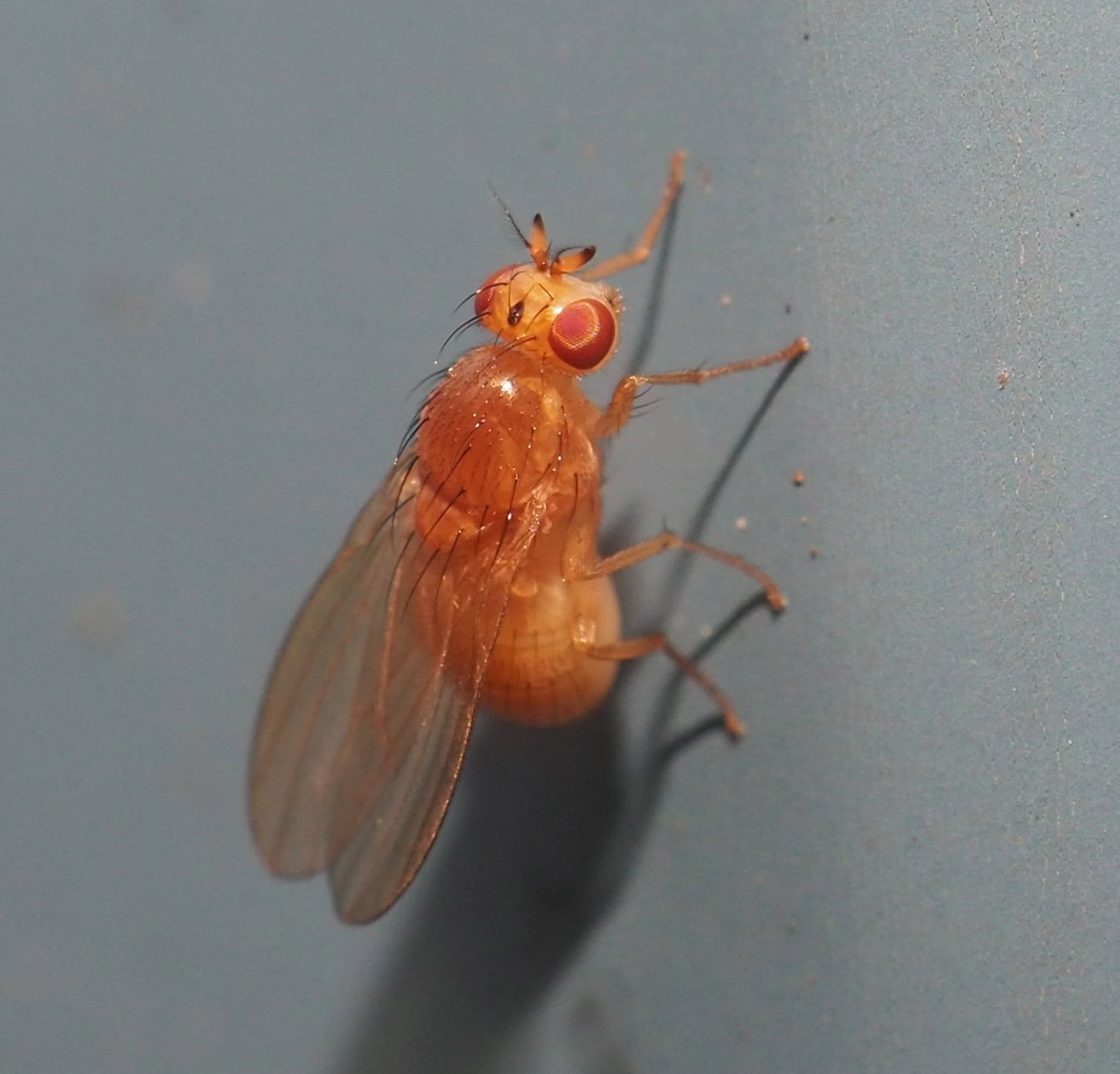
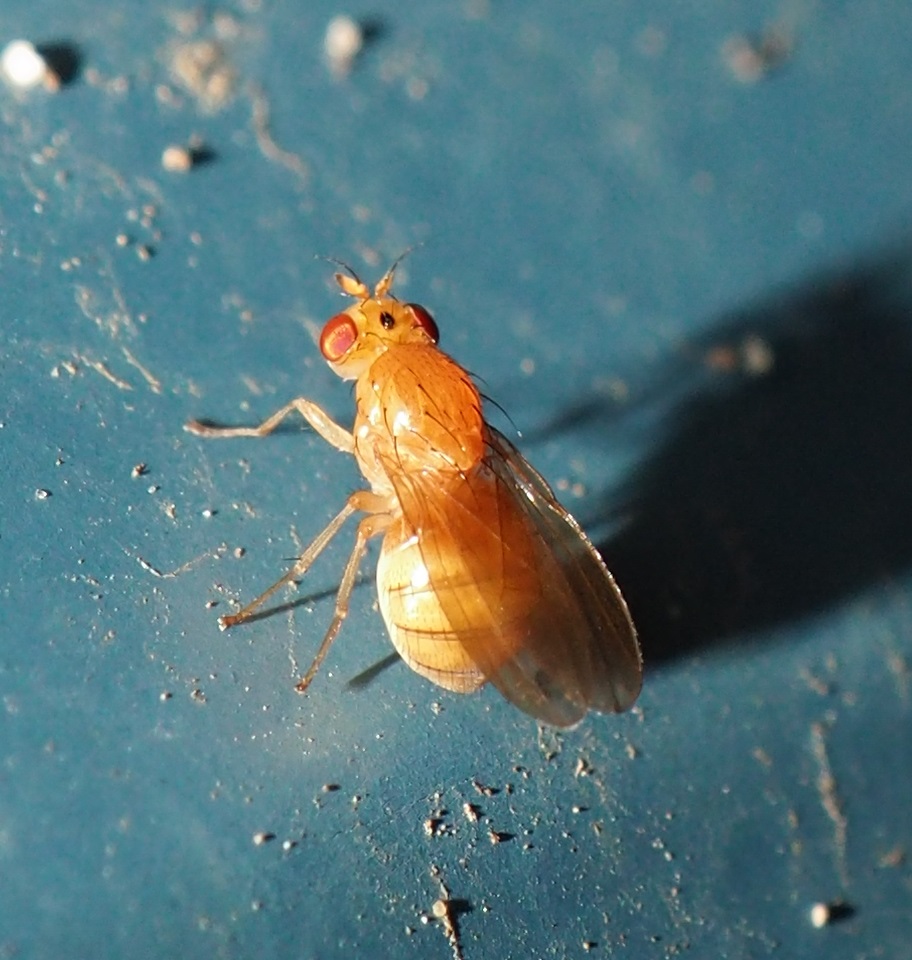
Here is an orange fly with darker or spotted wings. The second fly (the one with spots directly on the abdomen) seems to be looking for something. In fact in the last image, it seems to be approaching a second fly of the same kind. The eyes on the approacher look like the eyes of a male fly.
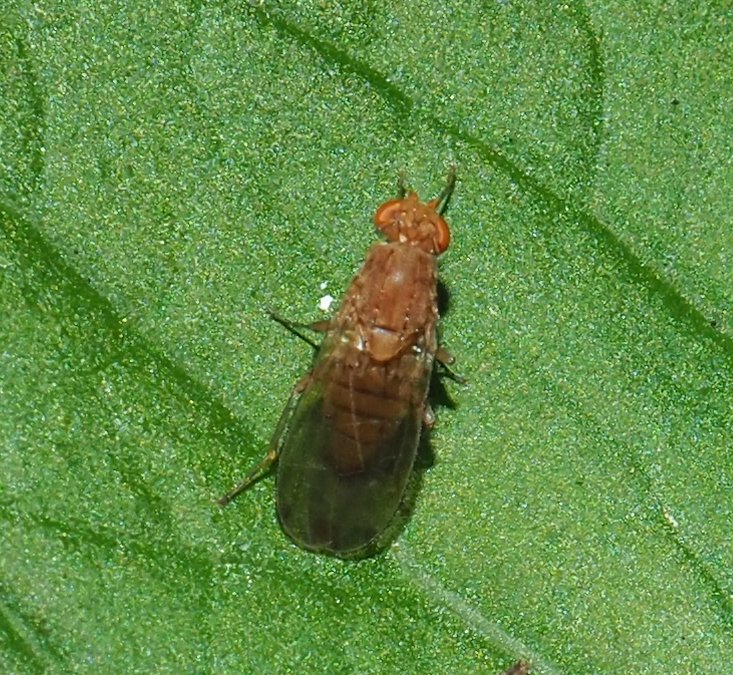
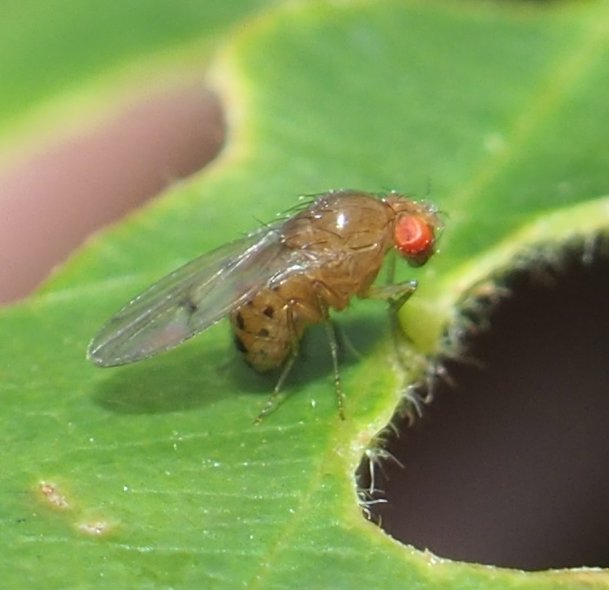
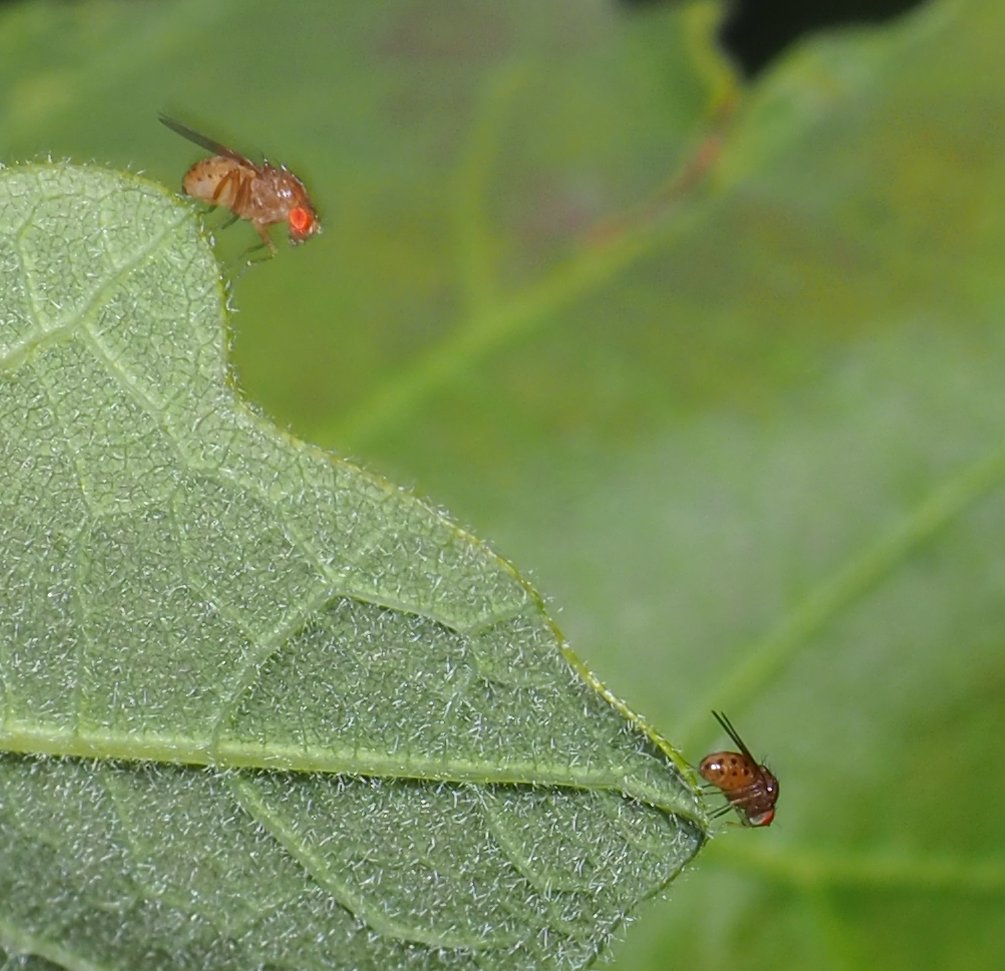
This fly was a total surprise. I did NOT see the colors in the eyes when I was taking these pictures. Nice Surprise!
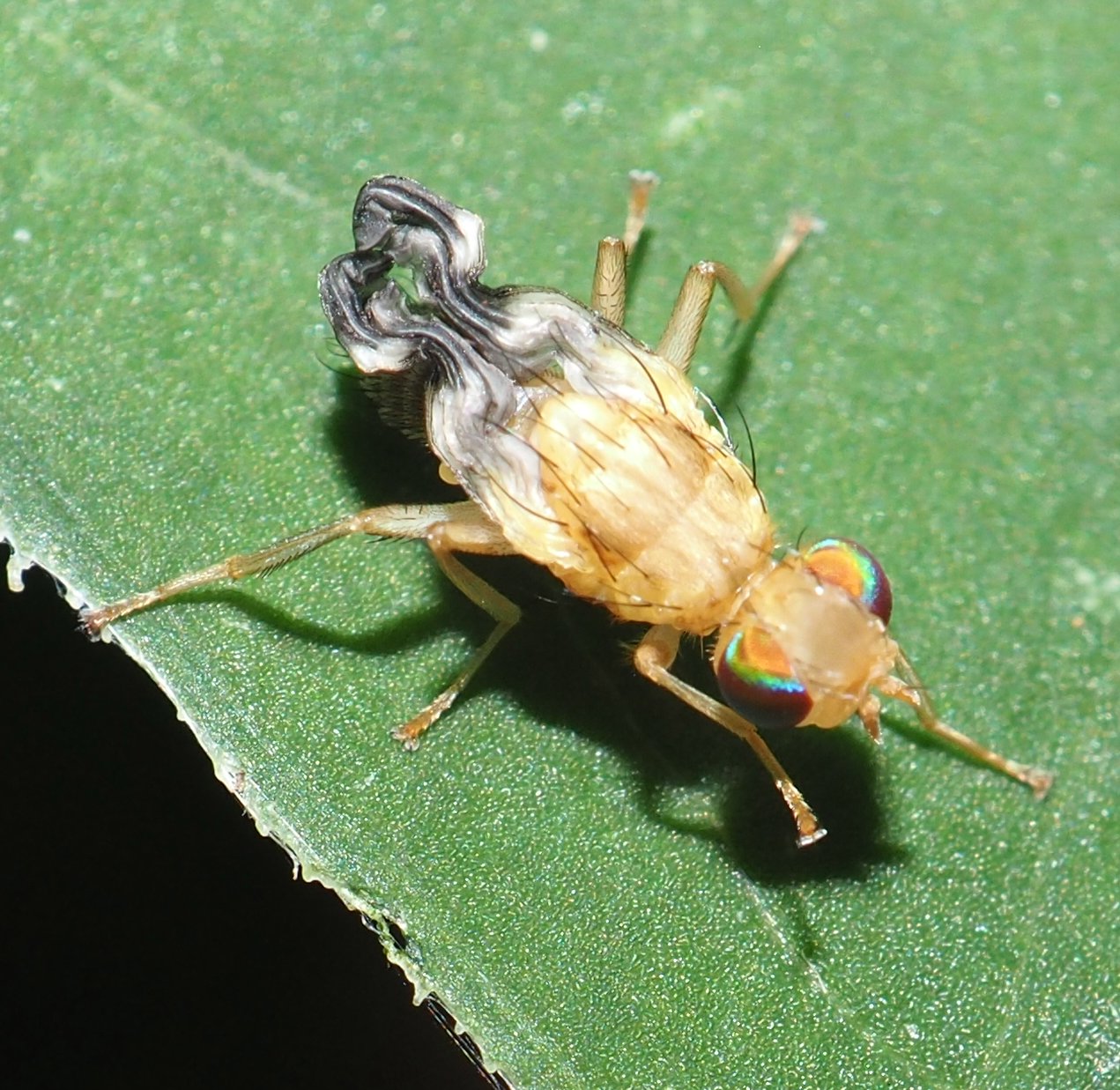
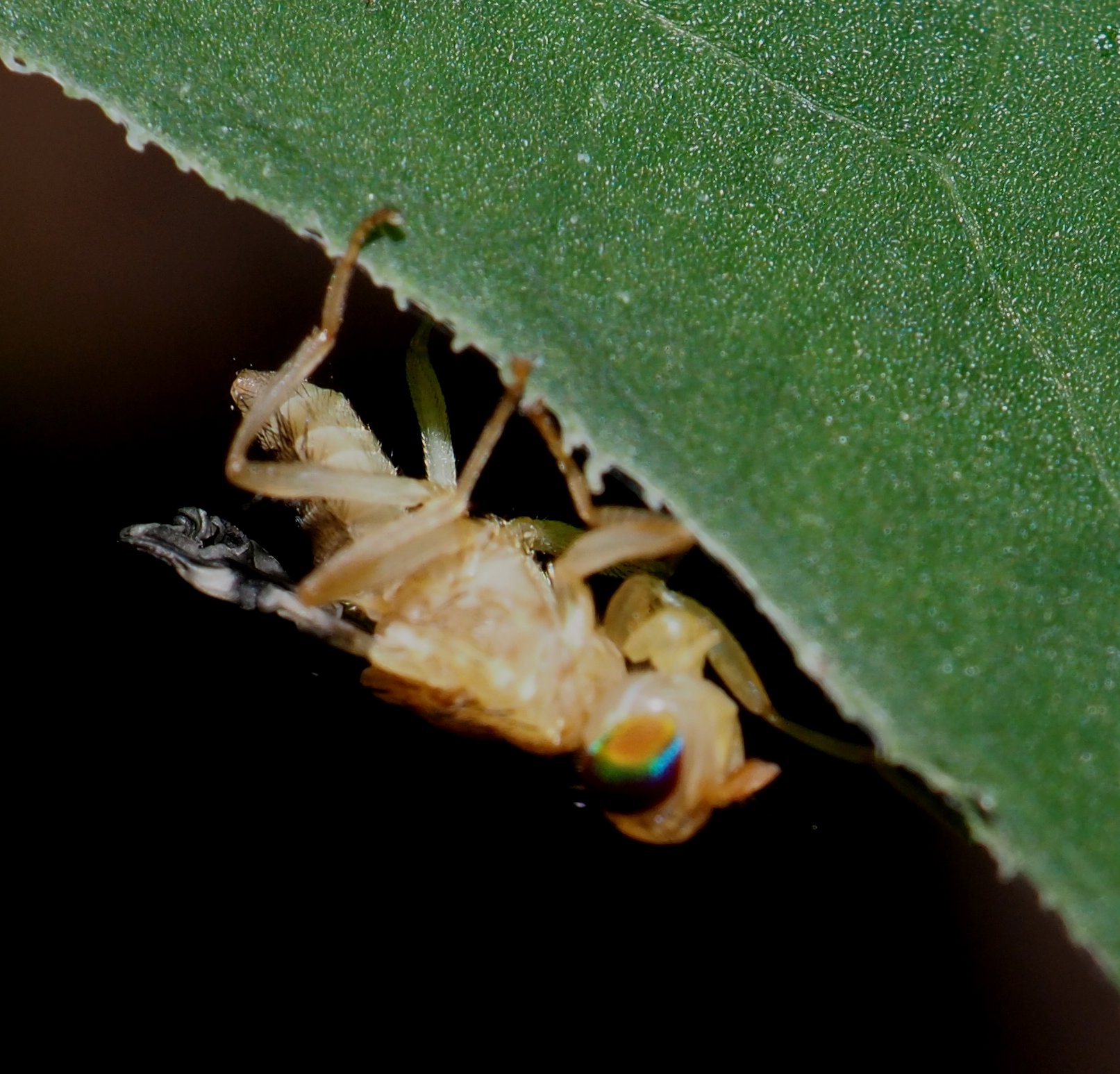
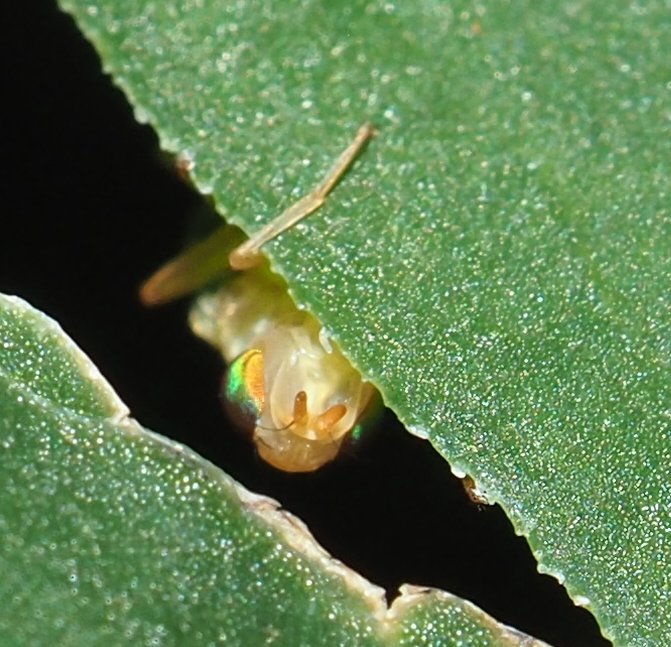
Some more interesting flies.
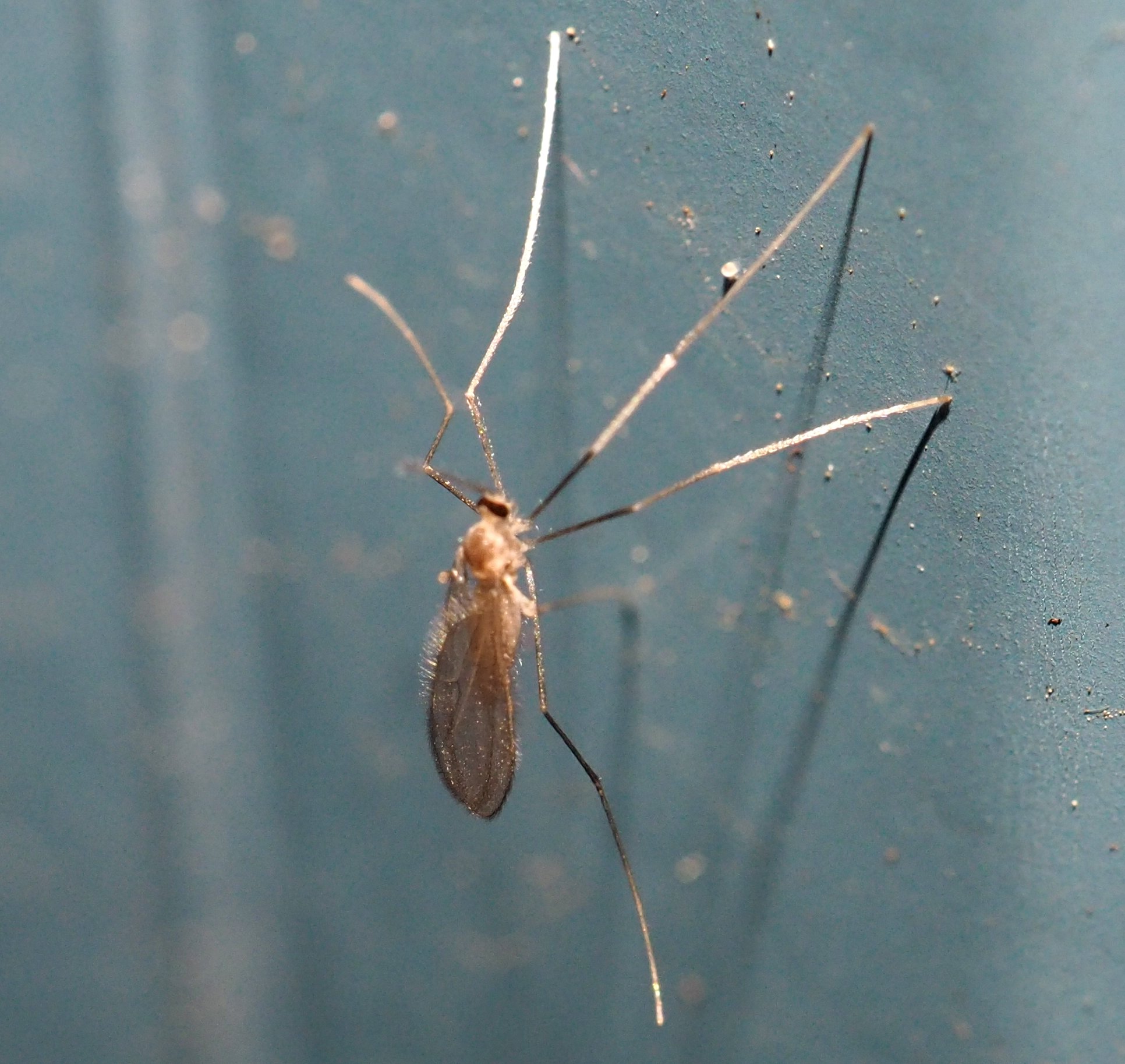
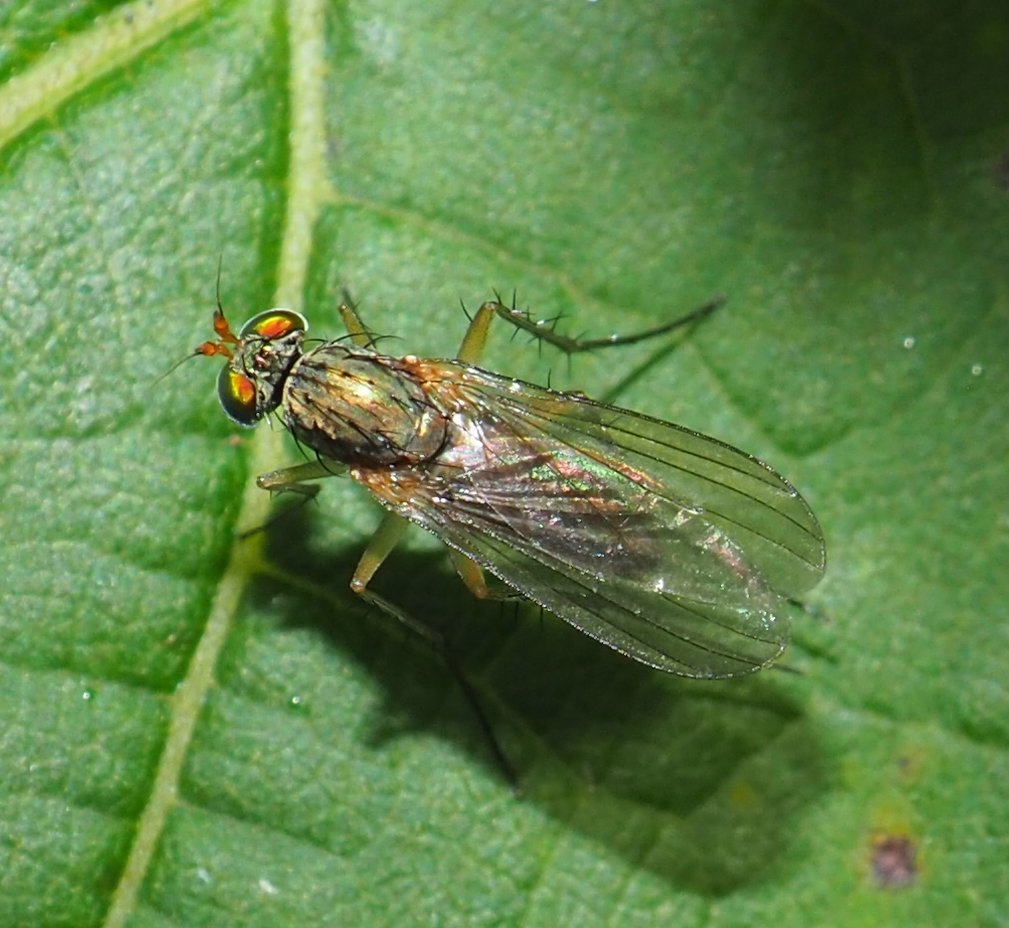
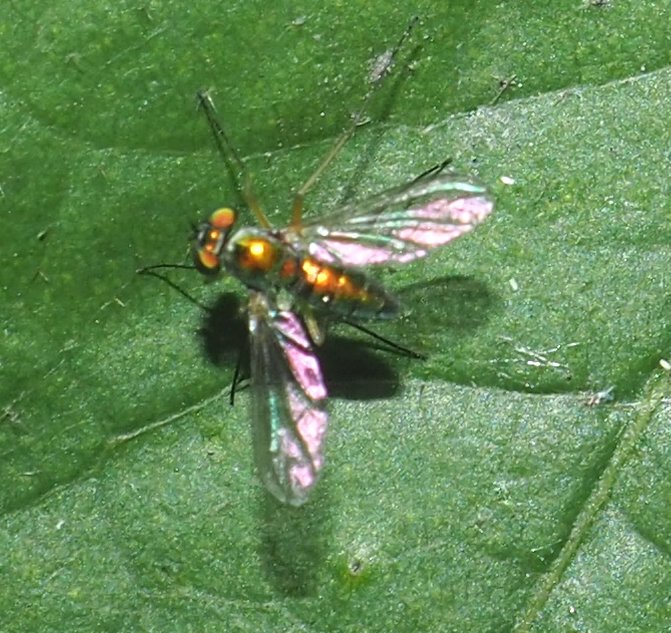
Harvestmen.
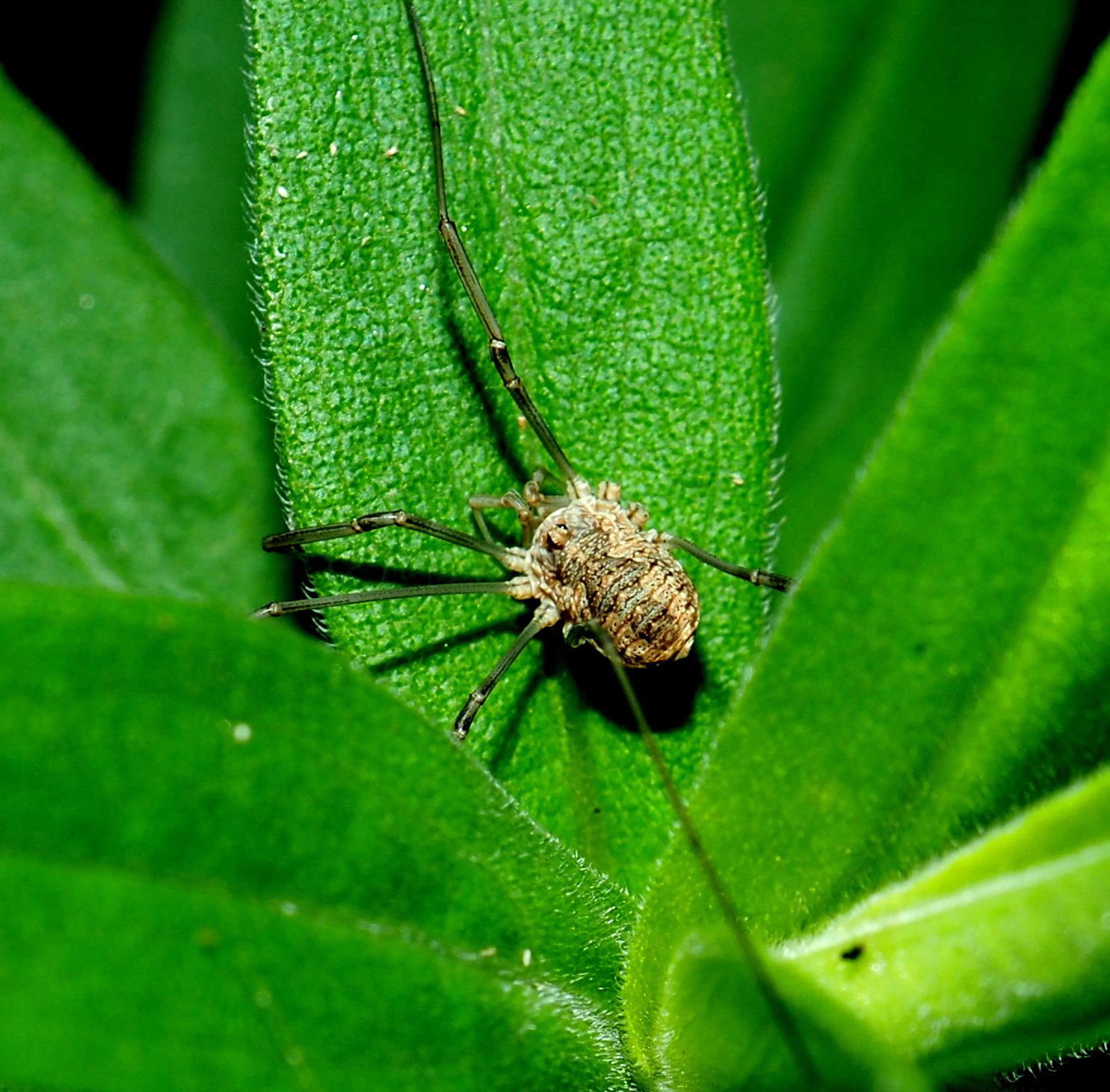

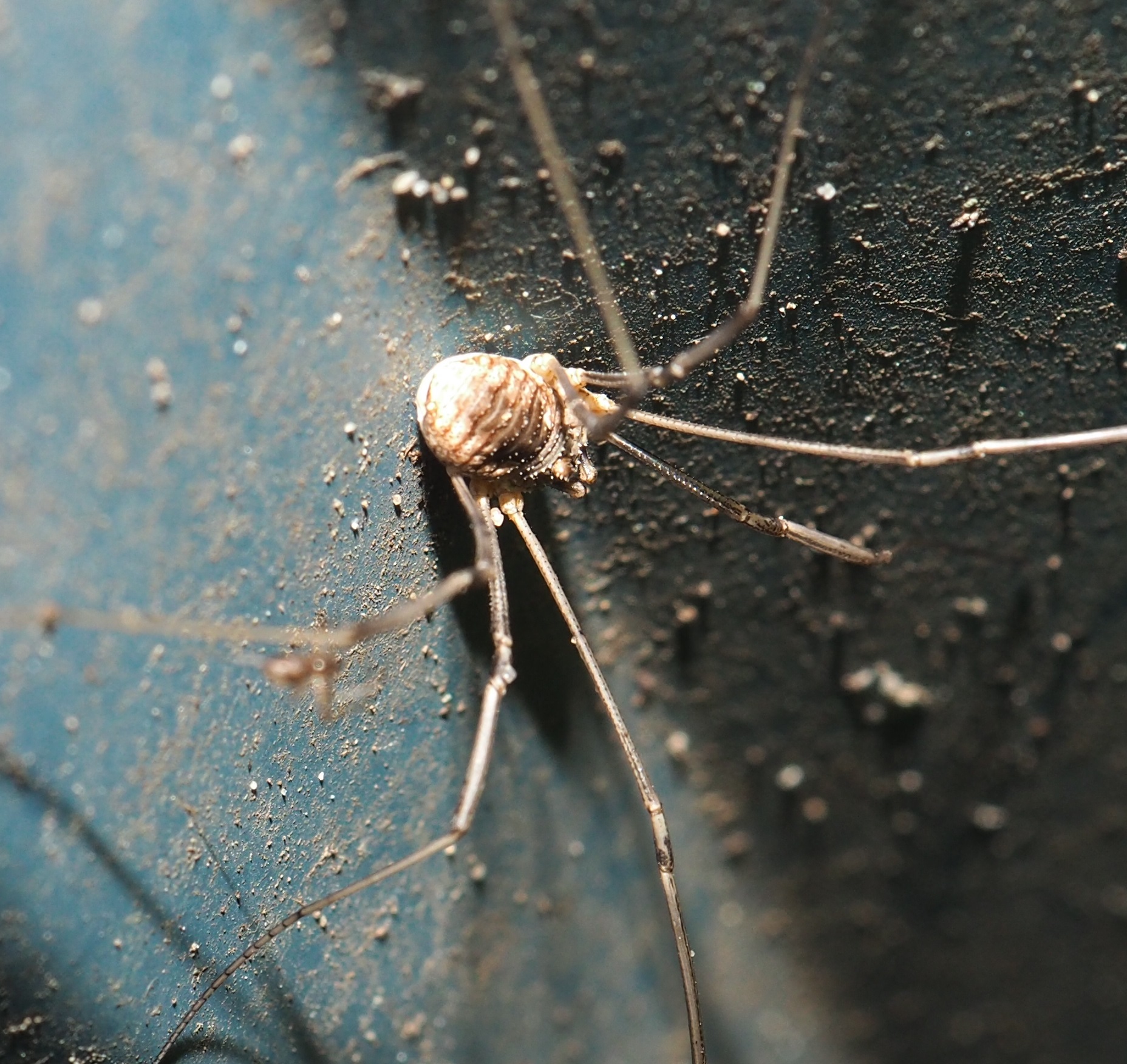
Here are a very light-colored green lacewing and two mystery moths. Oh -- and also a Hickory Tussock Moth caterpillar.
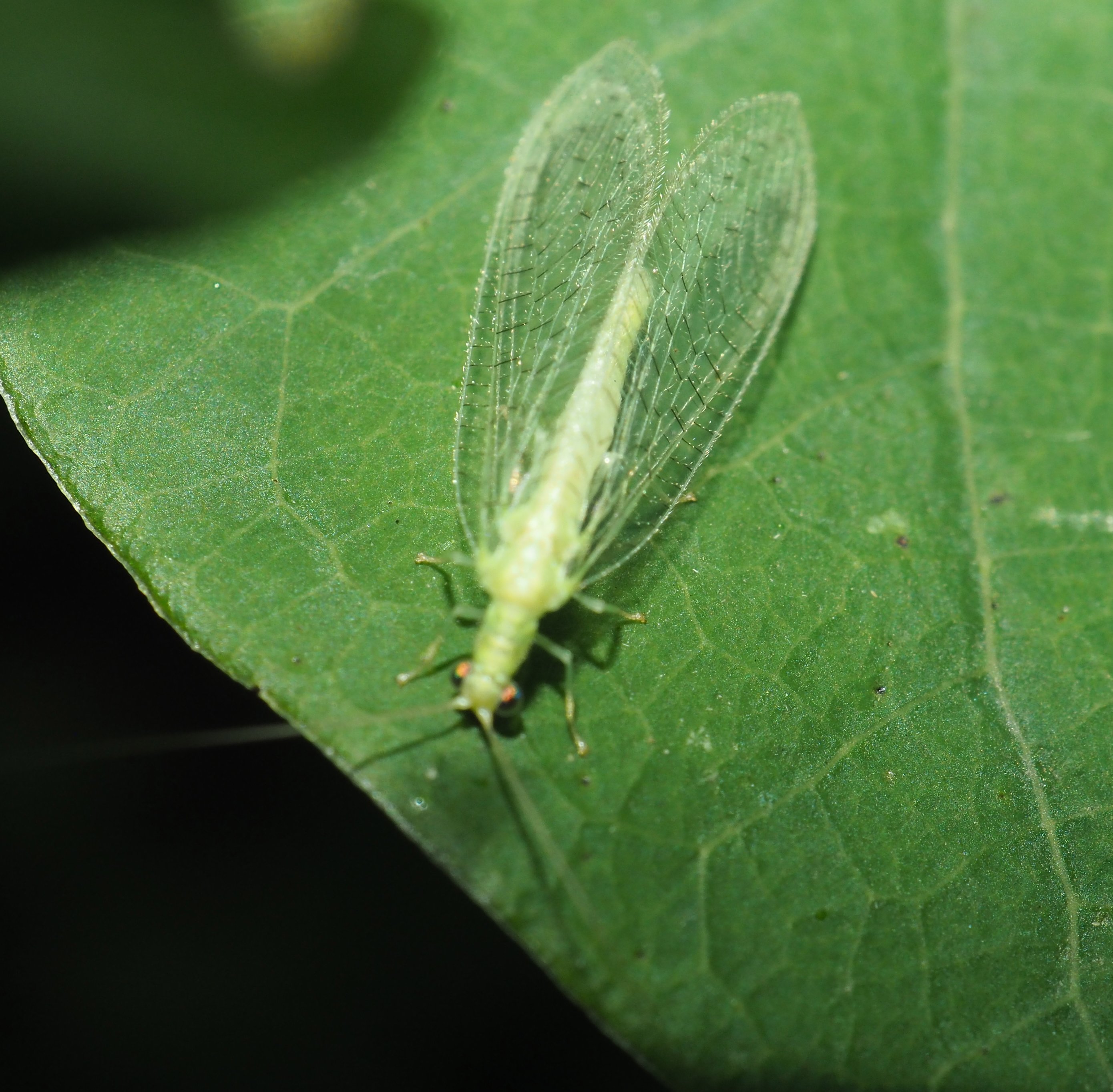
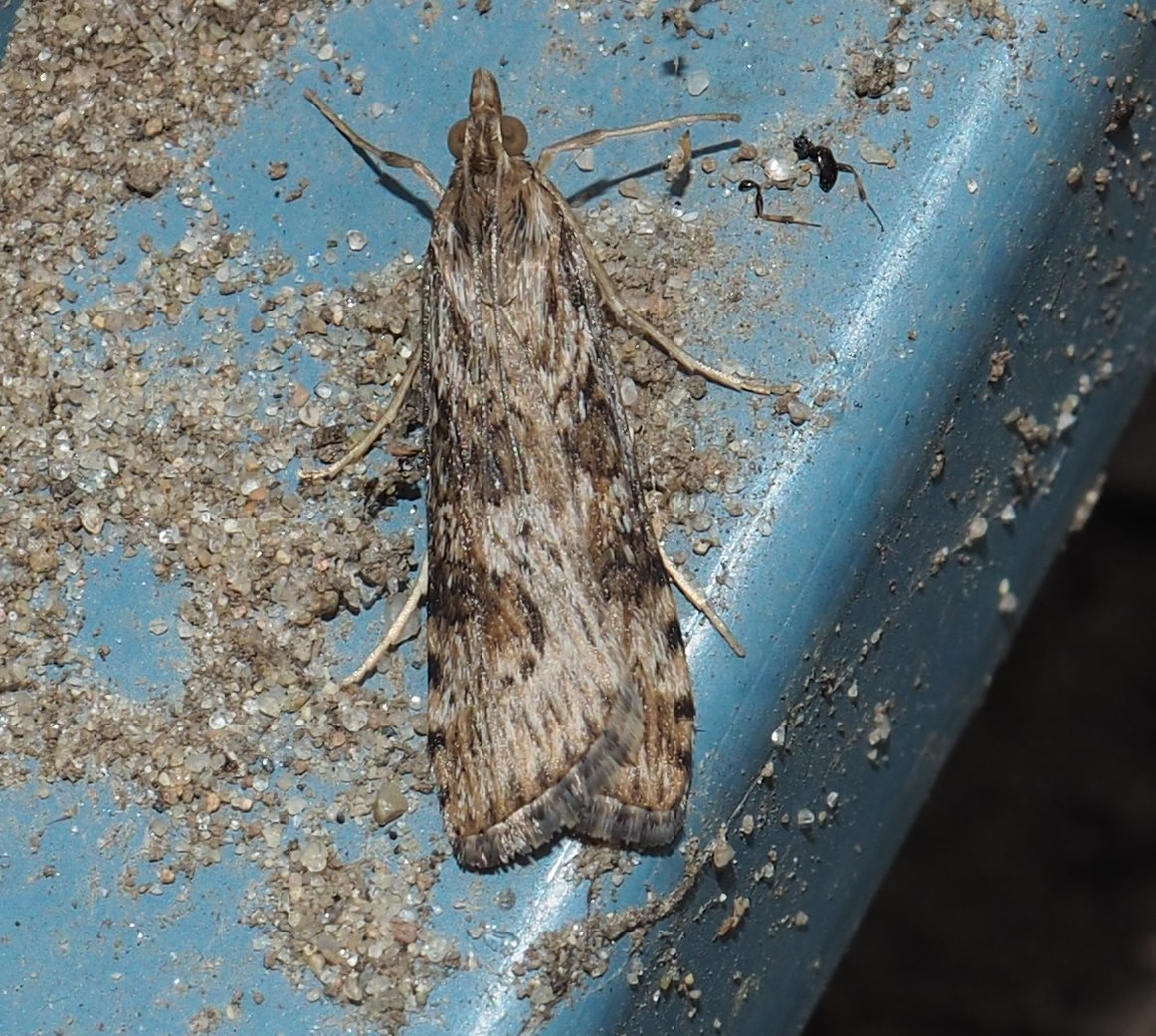
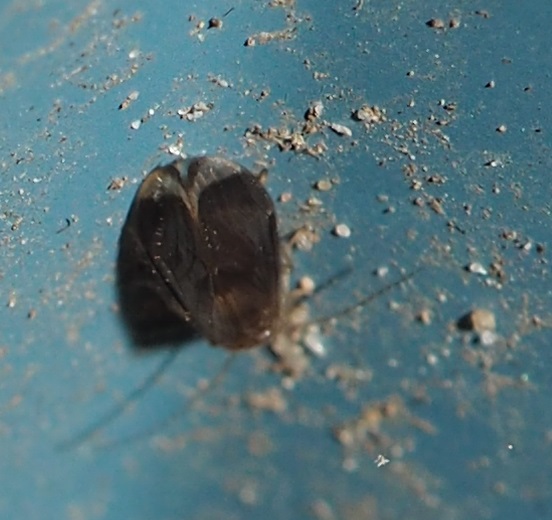
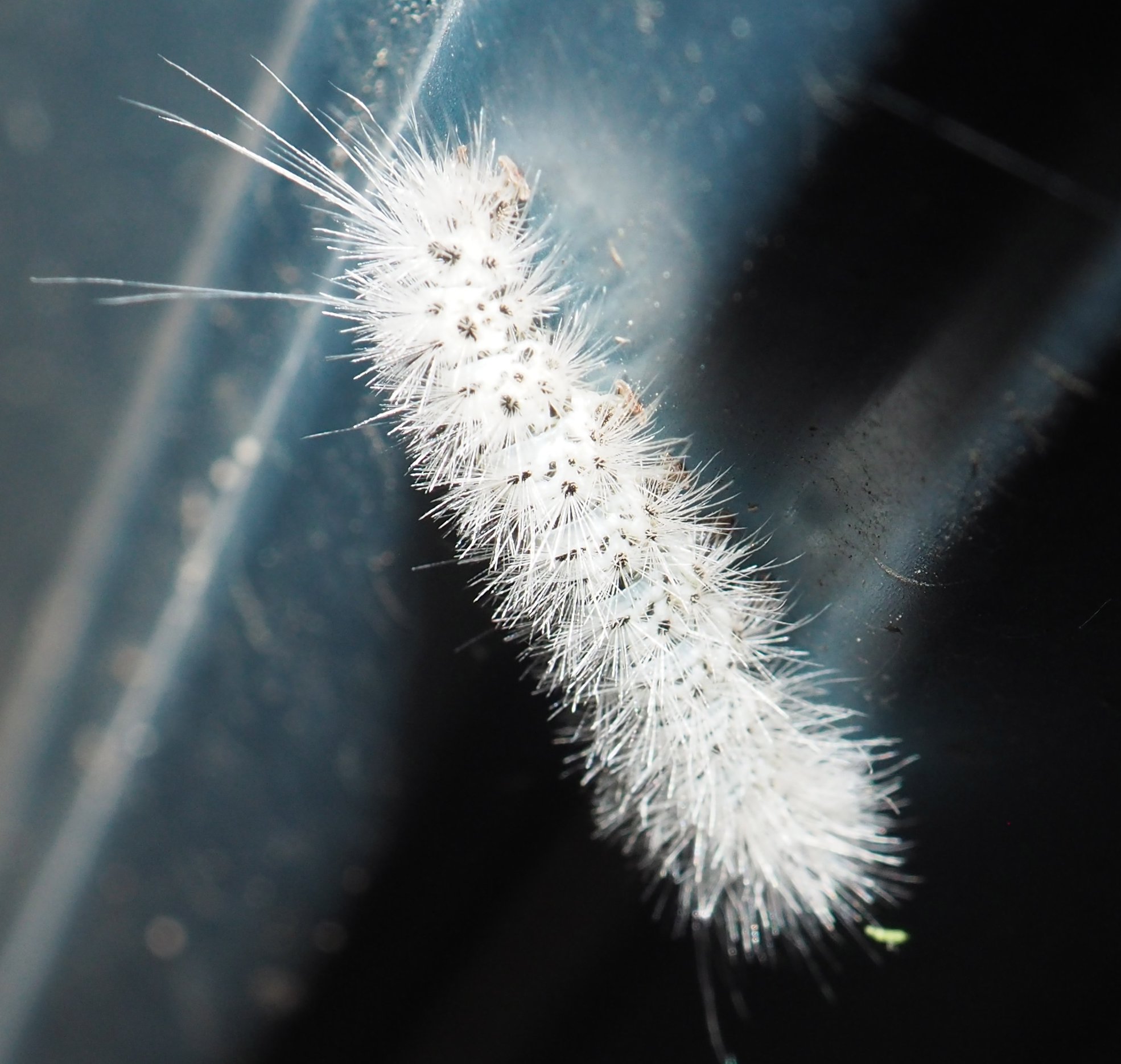
All those crickets we had last week? I think we've run into a dry spell. Let's hope they're back soon. I also miss the Ambush Bugs. But on the other hand the goldenrod still hasn't bloomed at all.

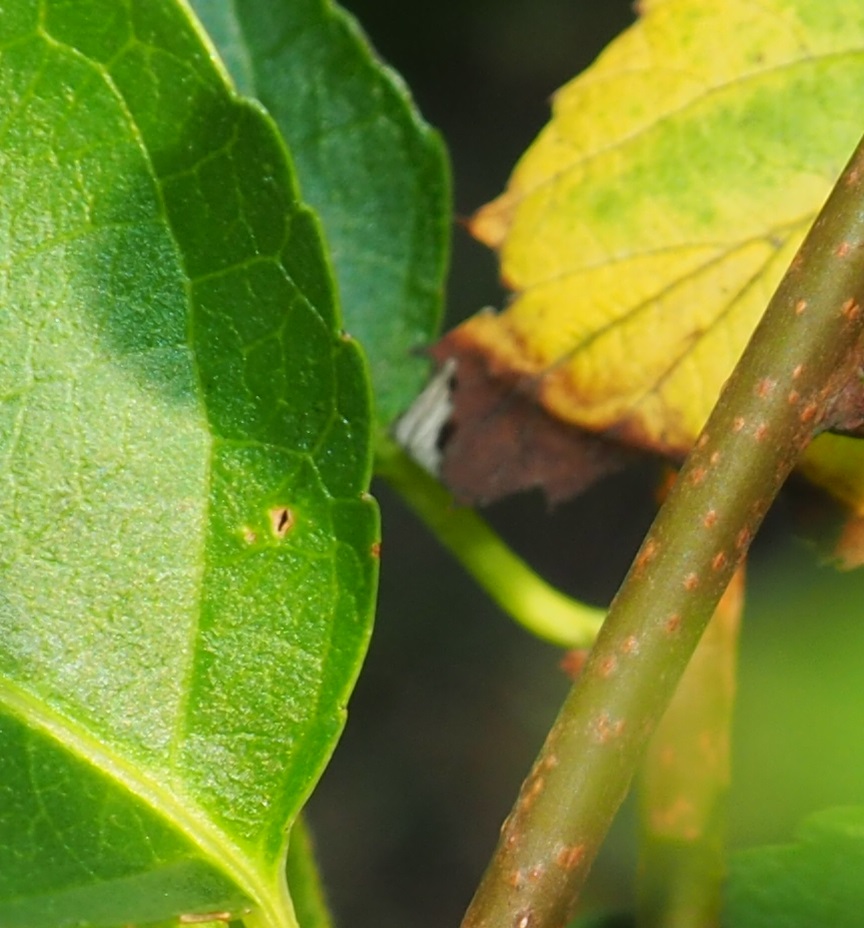
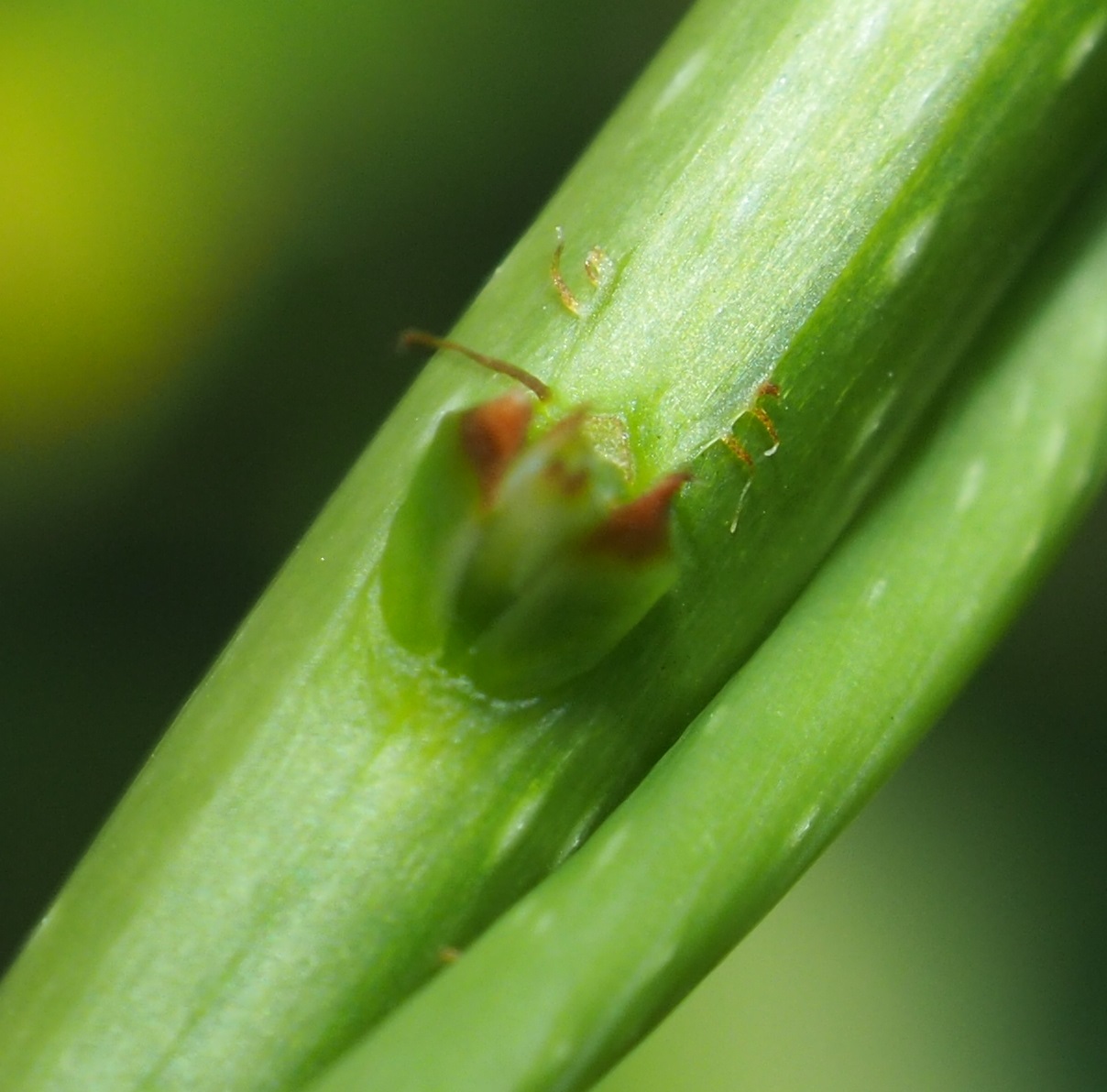
There were quite a lot of different spiders, many of those new. I saw this first one many times on a particular spot next to one of the bolt-nuts on one corner of the shop wall. Second seems to be a picture of it, moulting its former shell. This last one was so tiny yet so pretty I couldn't not show it first. Besides the brilliance of the red head, look at the delicacy of those eight legs. It seems to be a much-miniaturized version of the first two. The second's abdomen was a really lovely pattern of orange and white.
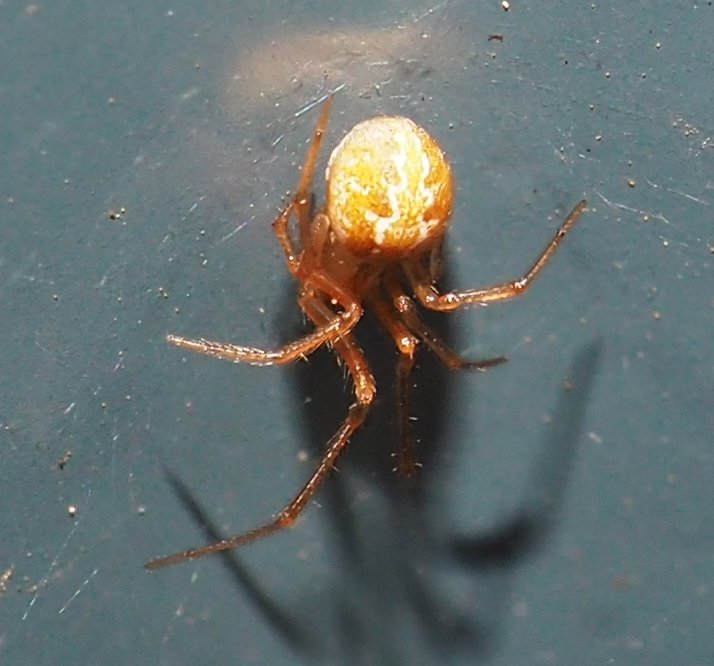
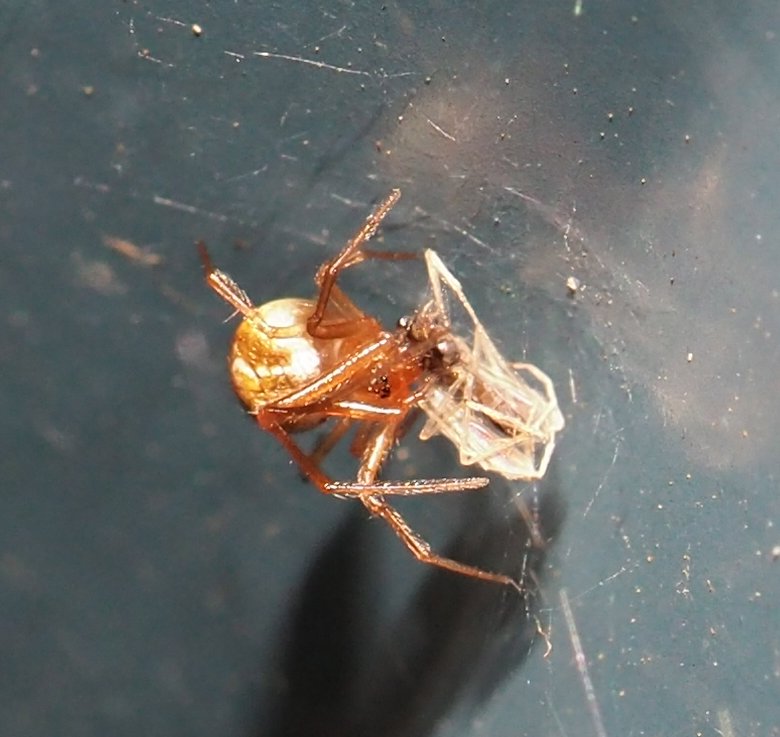
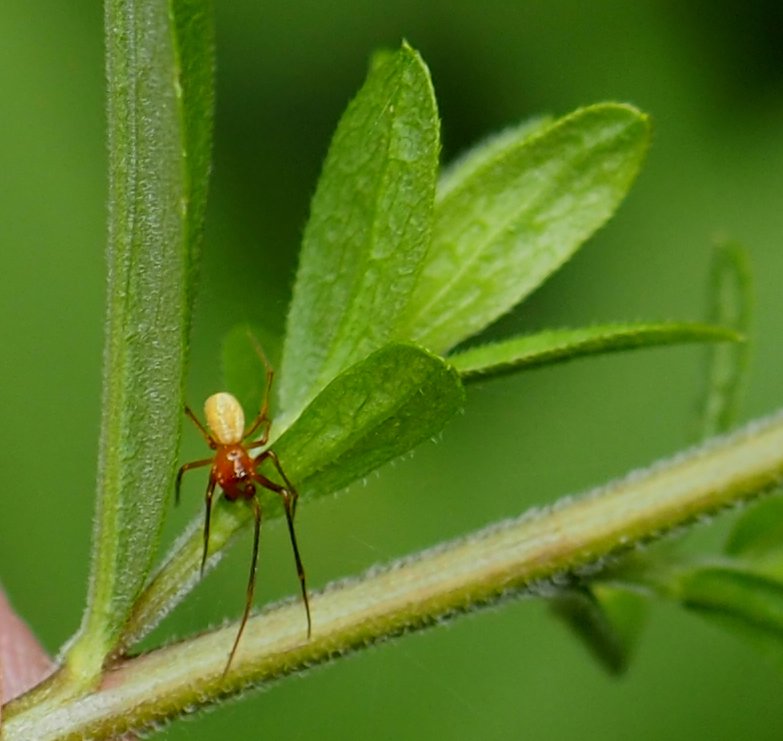
First and second are a tiny crab spider, lying on its back (to frighten us, maybe?), then disappearing but with one pair of crab legs showing, as if it didn't really want to miss something. The third reminded me of some of the jumping spiders, but wouldn't show its wide-eyed face.
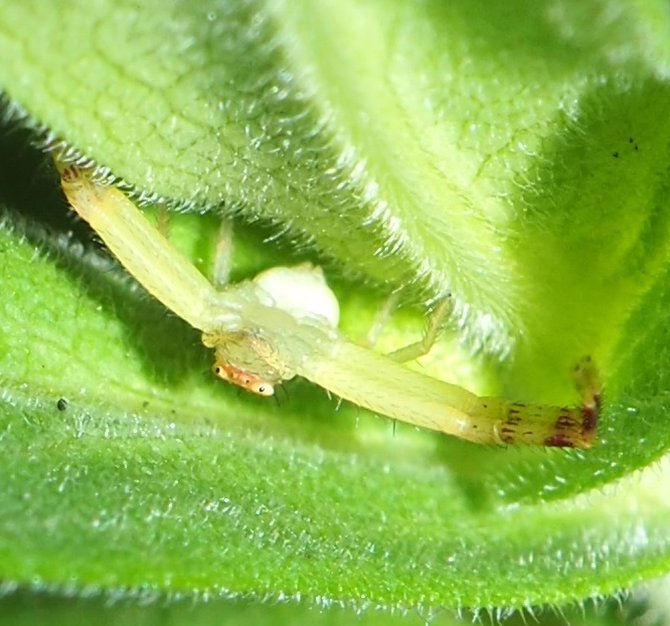
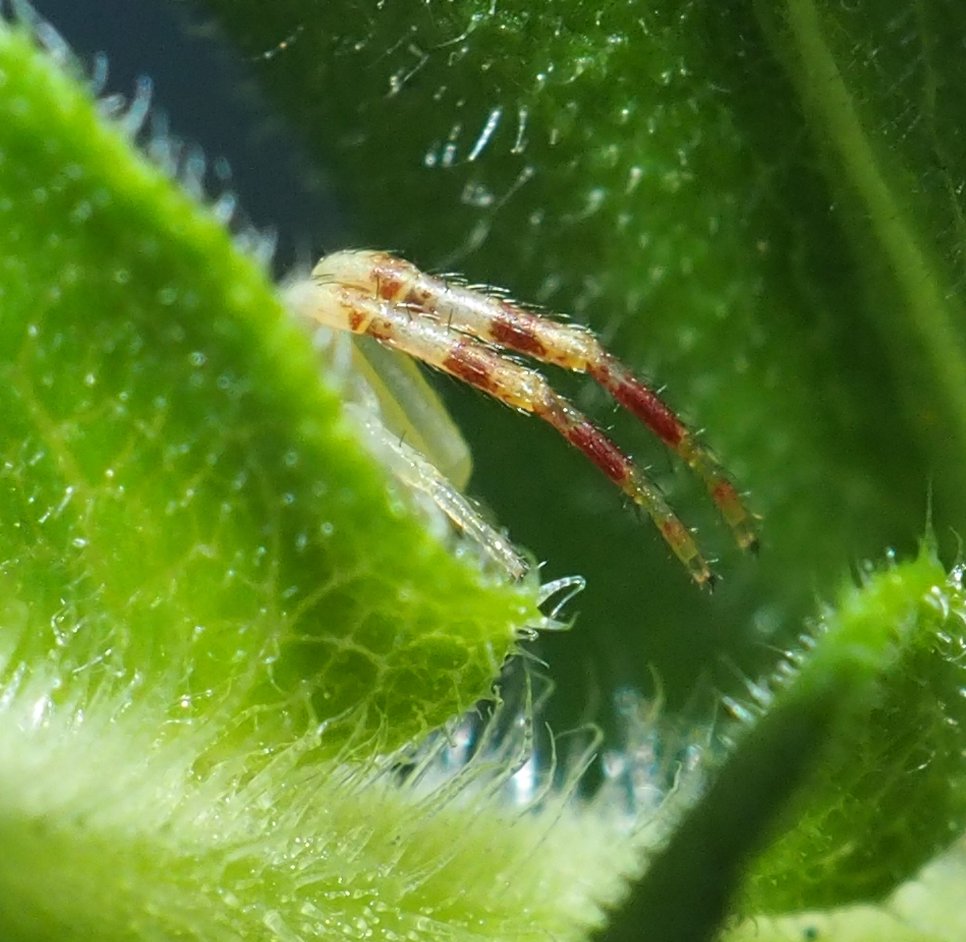
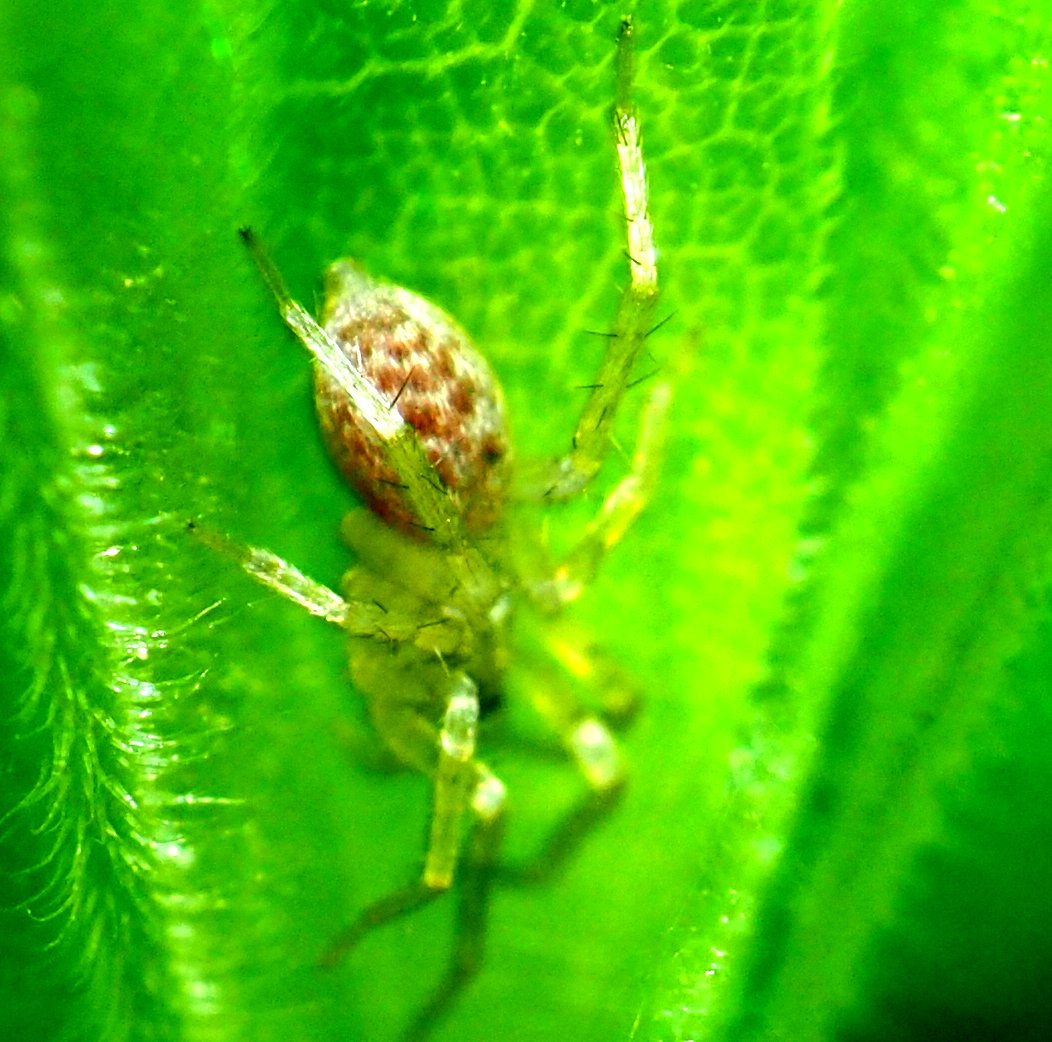
This first spider had a very subtle taffeta texture on its abdomen but was in a hurry to escape the paparazzi. The second is running through the leaves of a goldenrod or aster, likely to be on the lam from another paparazzo/a.
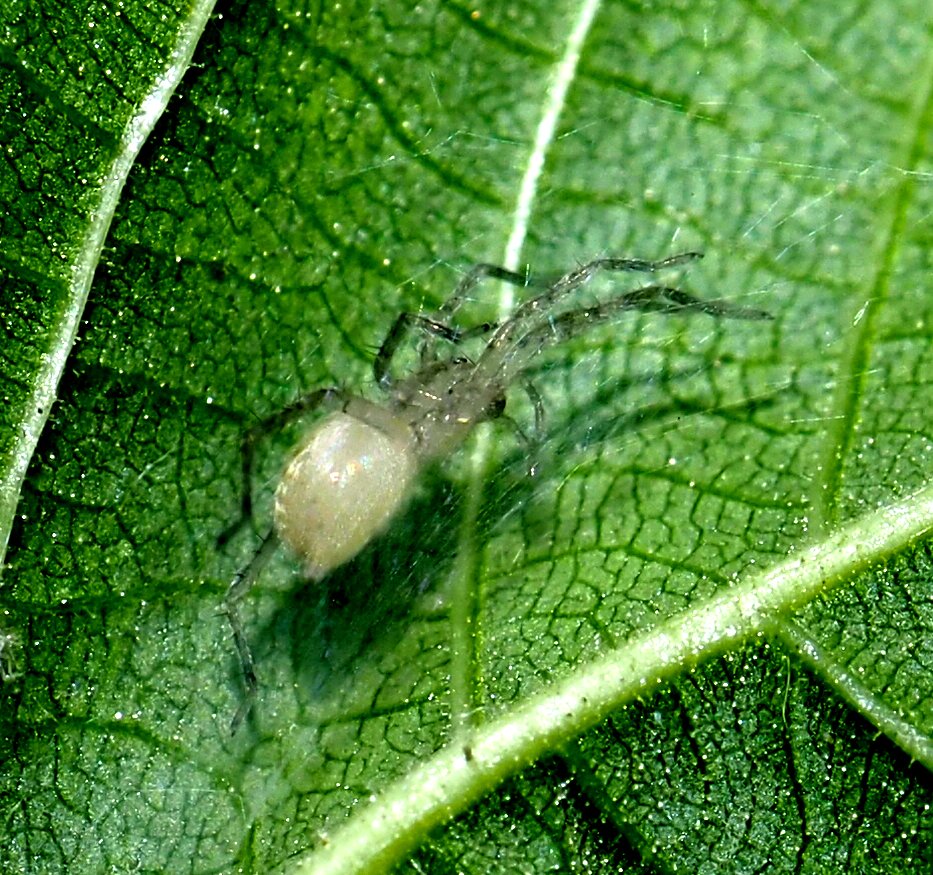
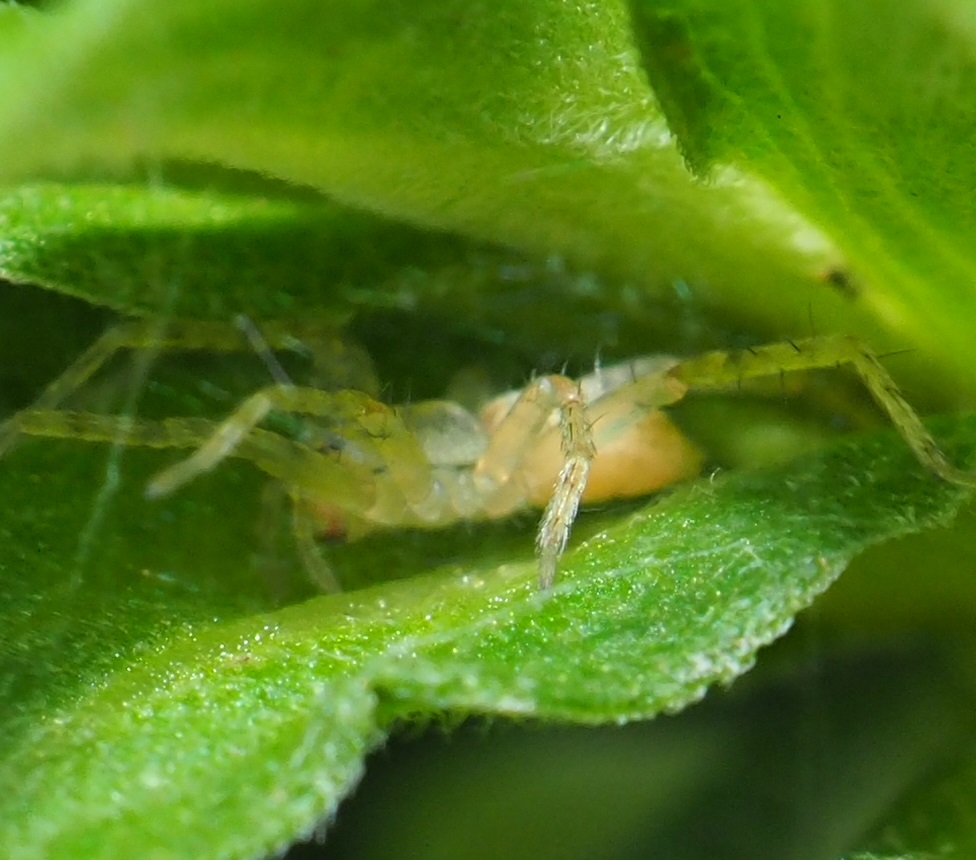
I can't quite make out this tiny spider because it is practically hidden behind the huge piece of supper. In the second picture, is that a mass of baby spiders or the leftovers of a paella? Mystery #3: is this a spider (indistinct) under that face-like yarmulke?
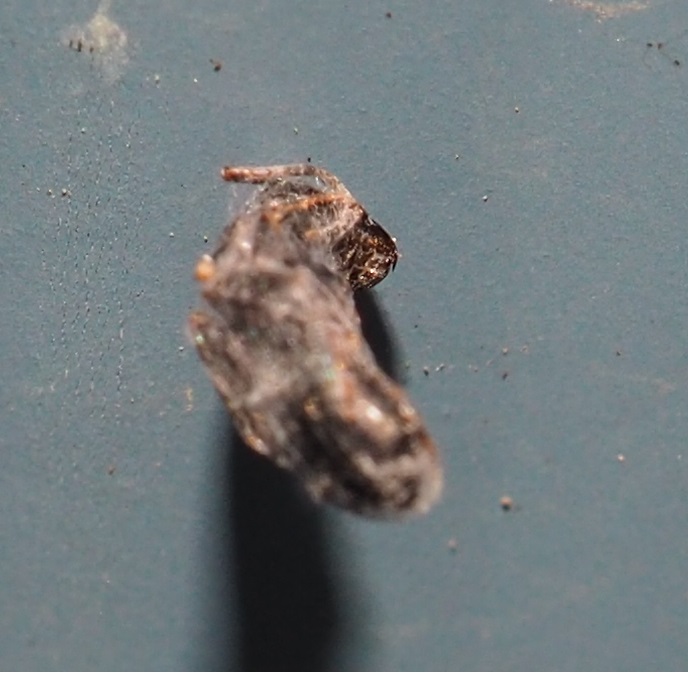
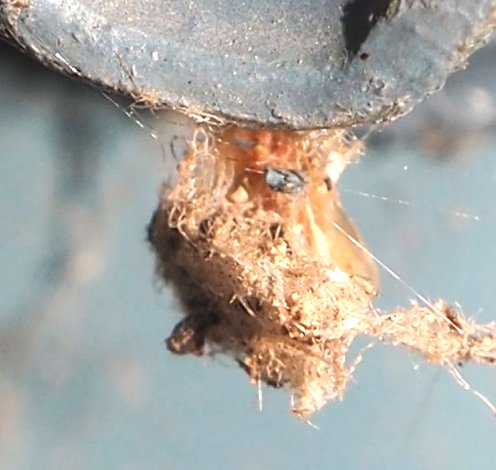
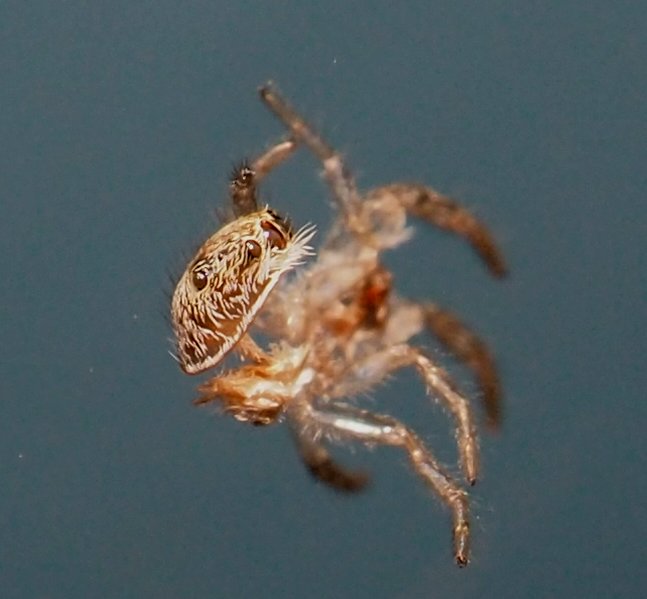
These two slugs showed up on the wall after one of our heavy rains. I've now seen a few of these tiny toads, the result of the earlier brood.
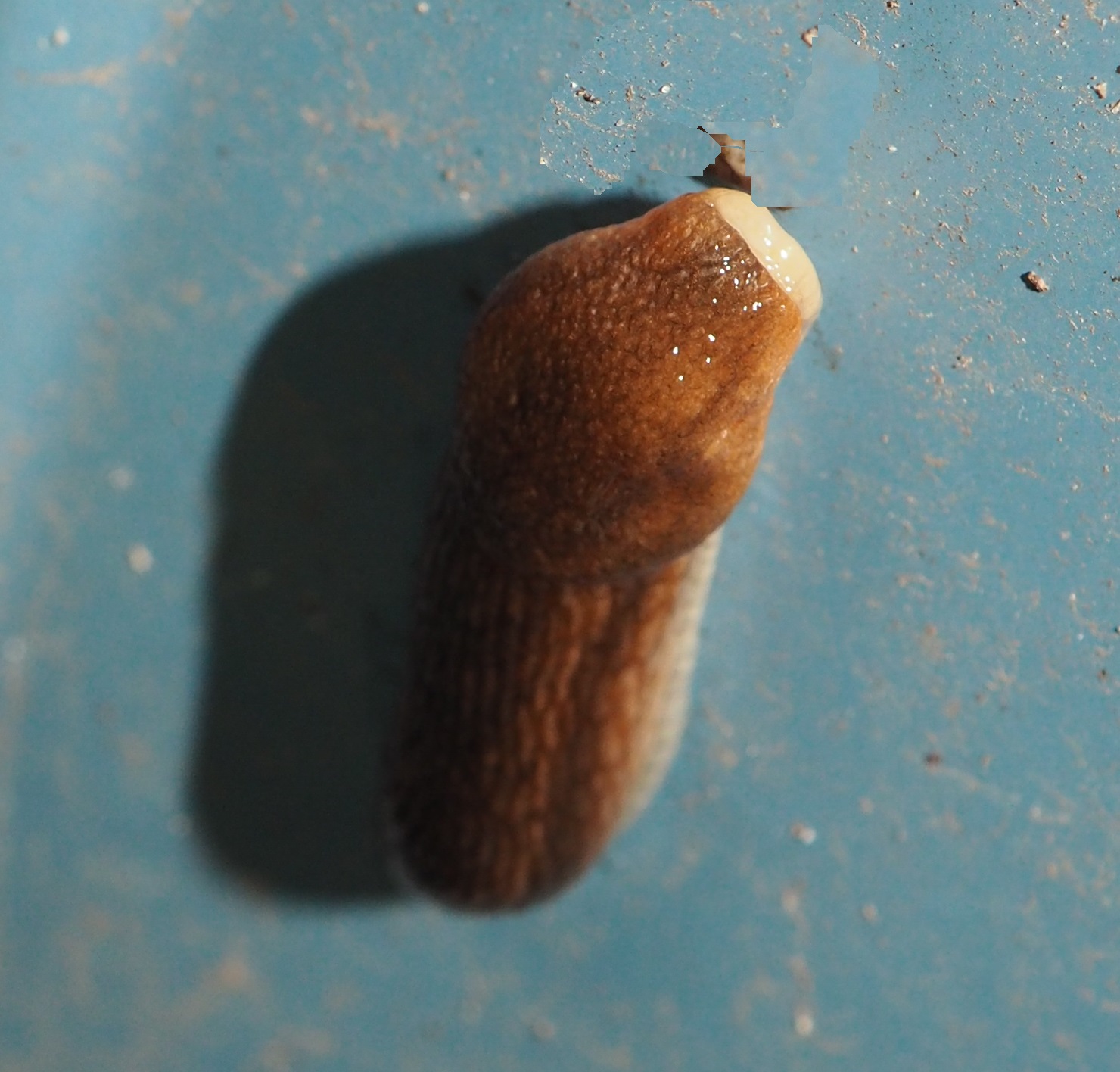
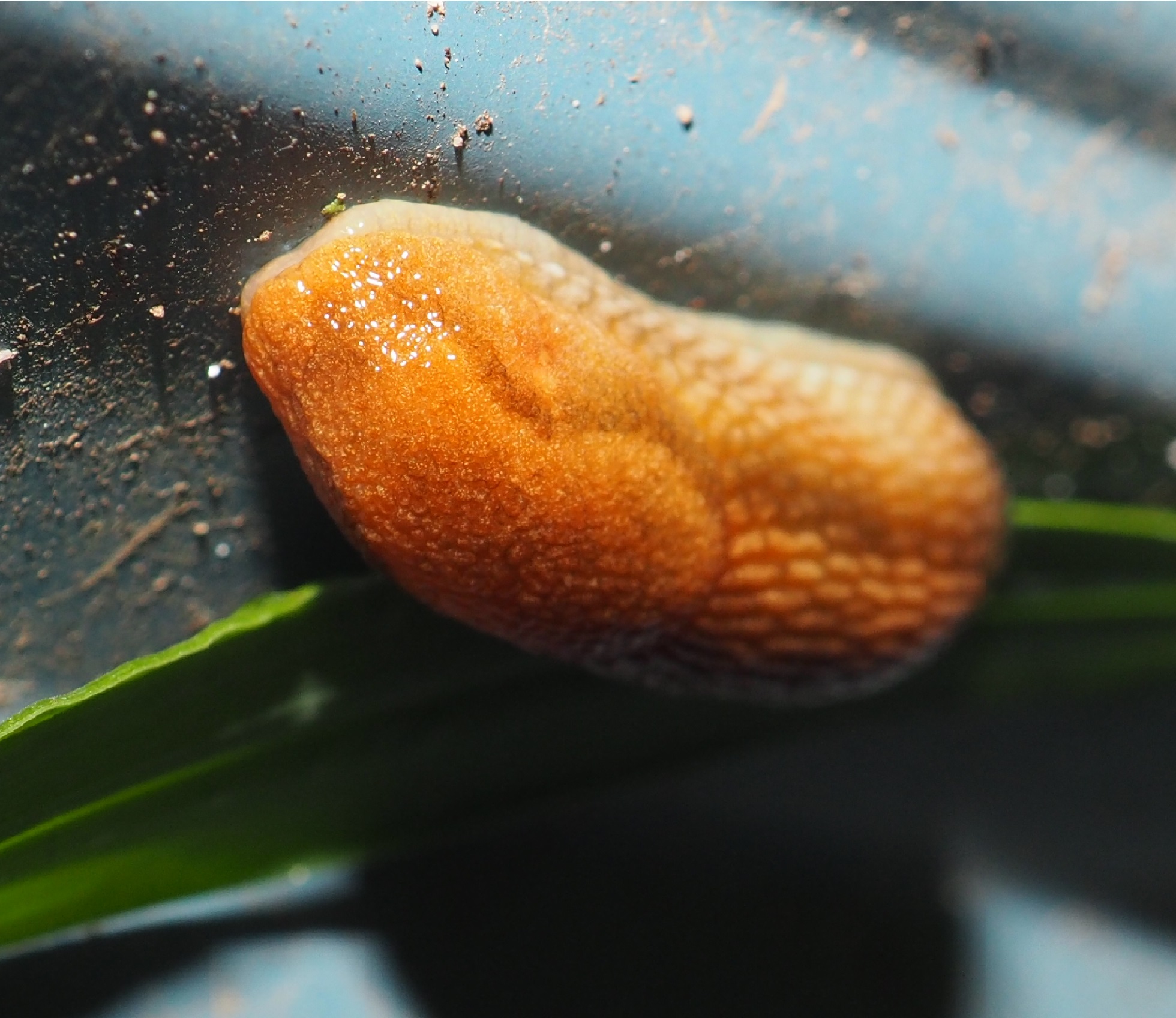

Here is some kind of wasp, but I don't know much about it. The ichneumon is one of our earlier hunts.
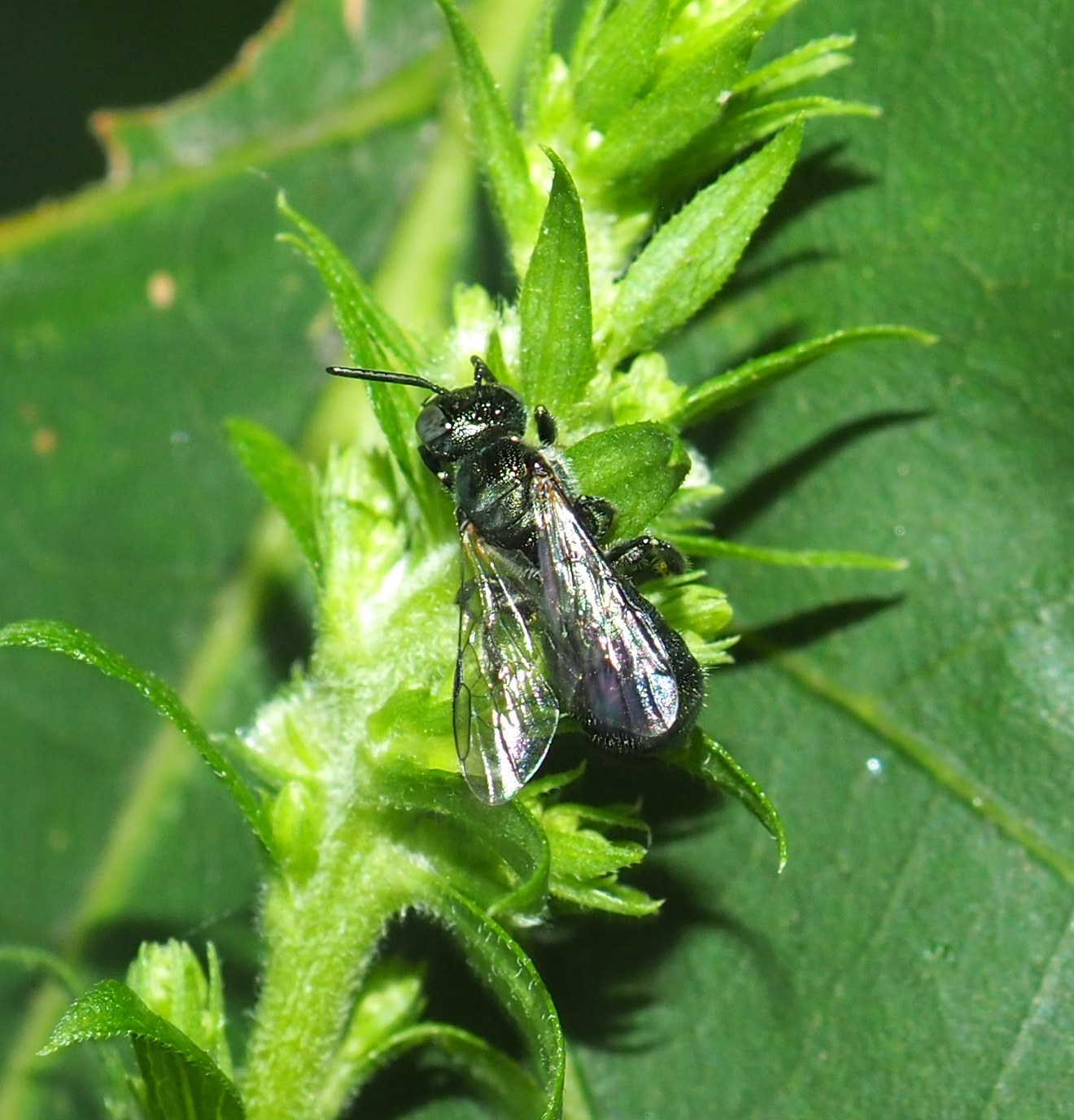
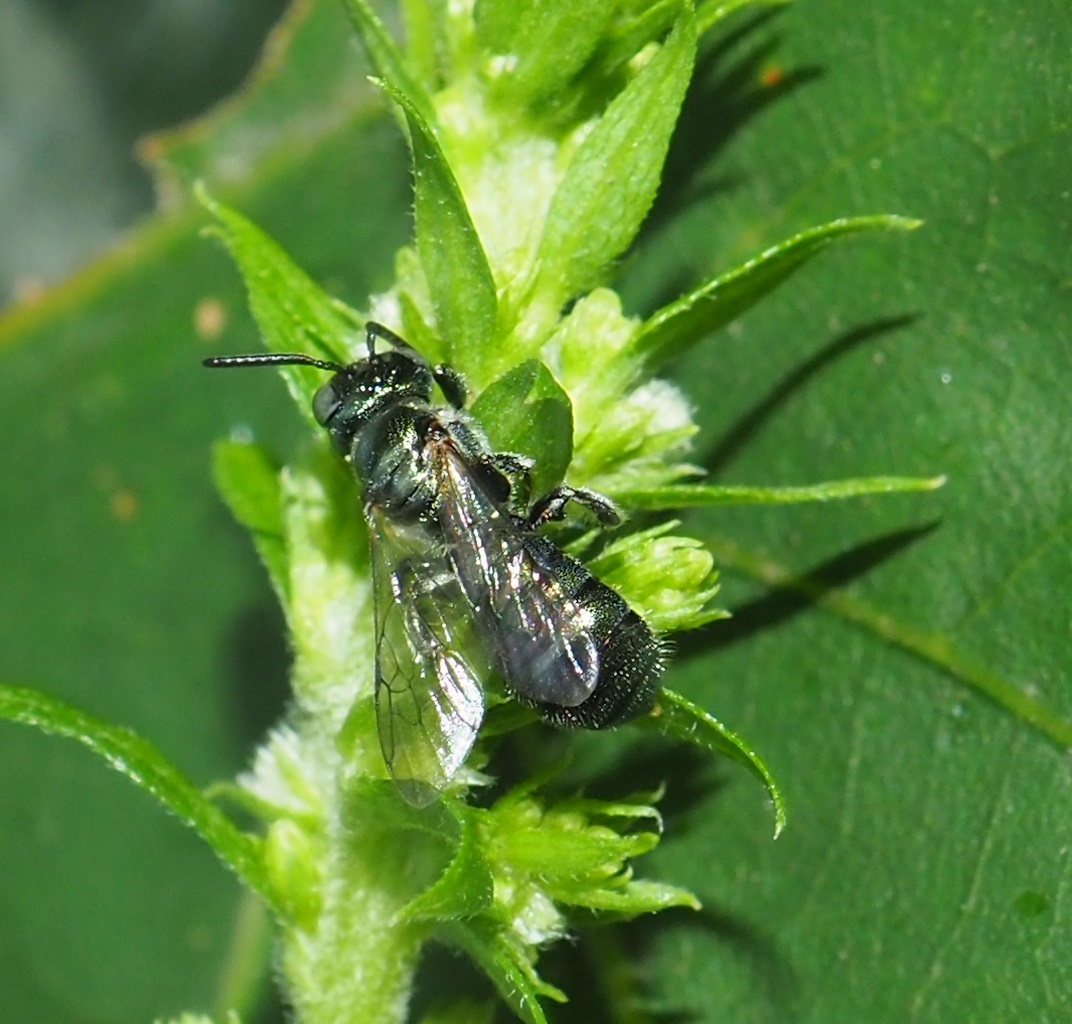
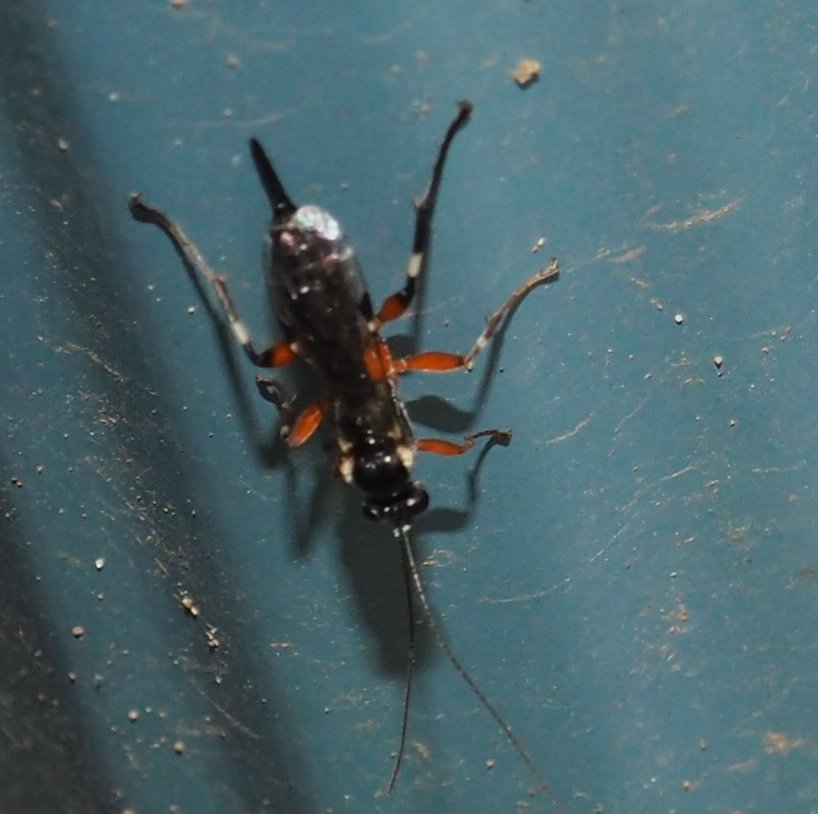
Here are more wasps and ichneumon wasps. They are lovely to watch as they seem to twinkle, moving their bodies as if in keeping alert.
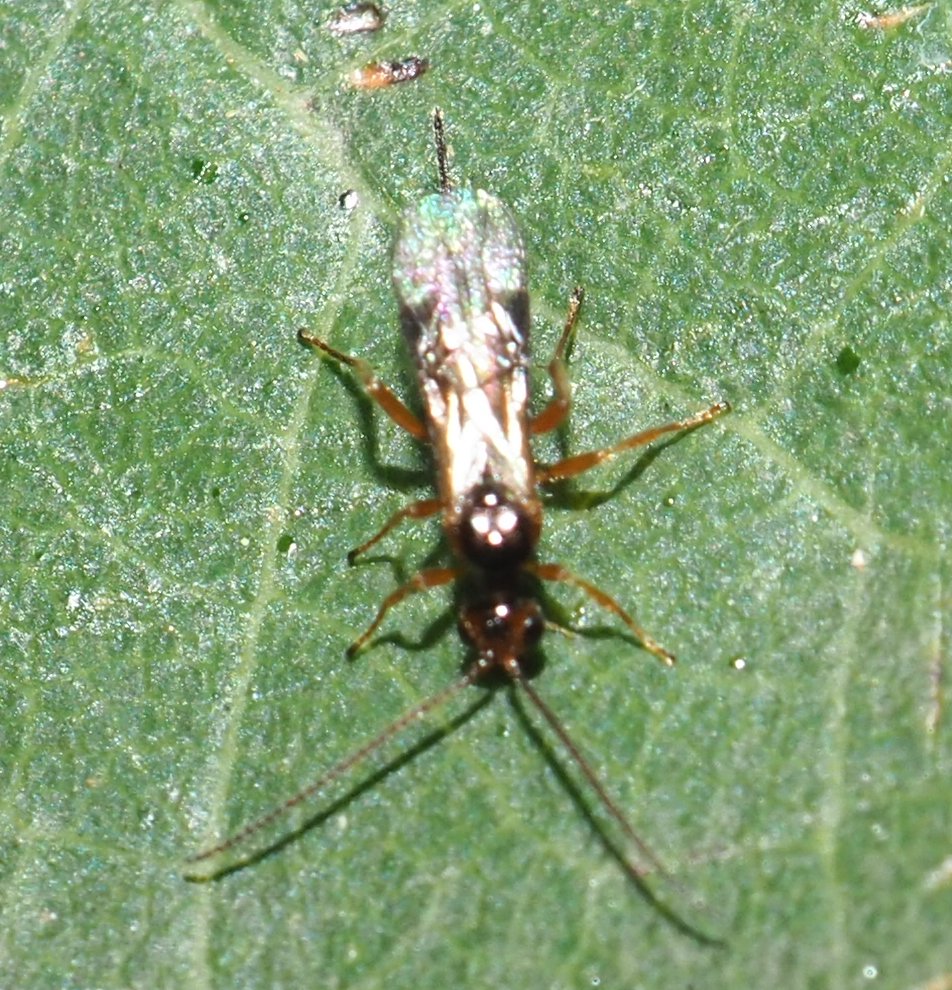
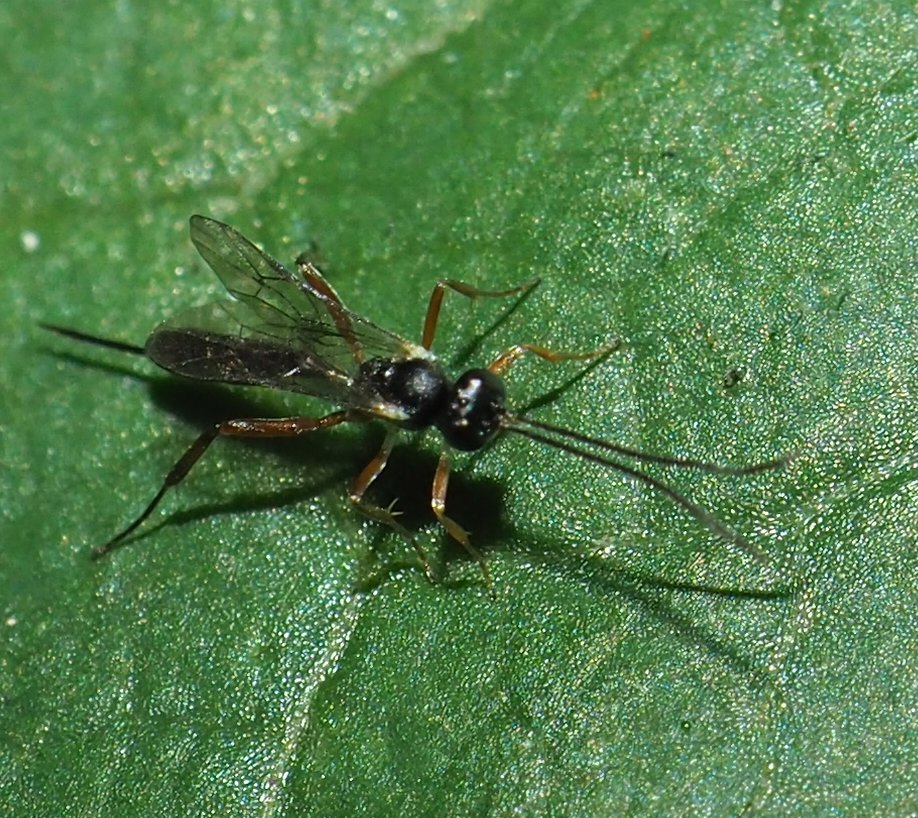
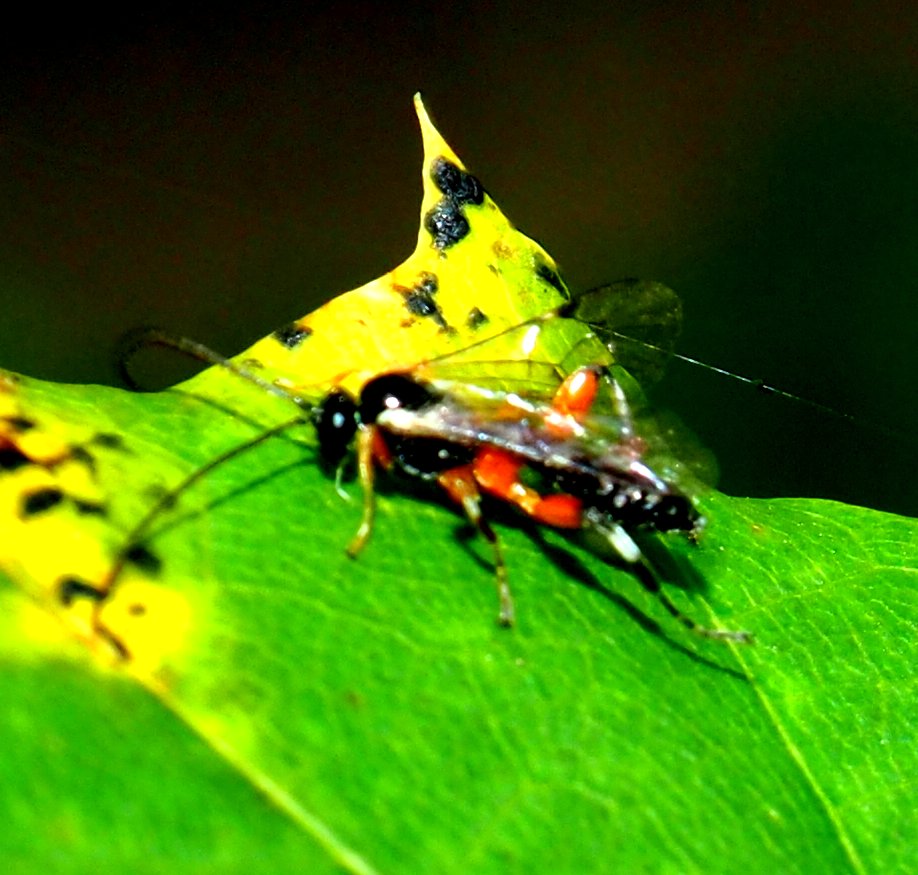
This is the same wasp as the last two just above. But it is now in flight - I like to think it's a comic character. The second image is of some unknown small creature! Finally, here's an earthworm, a big fat one scrambing past me.
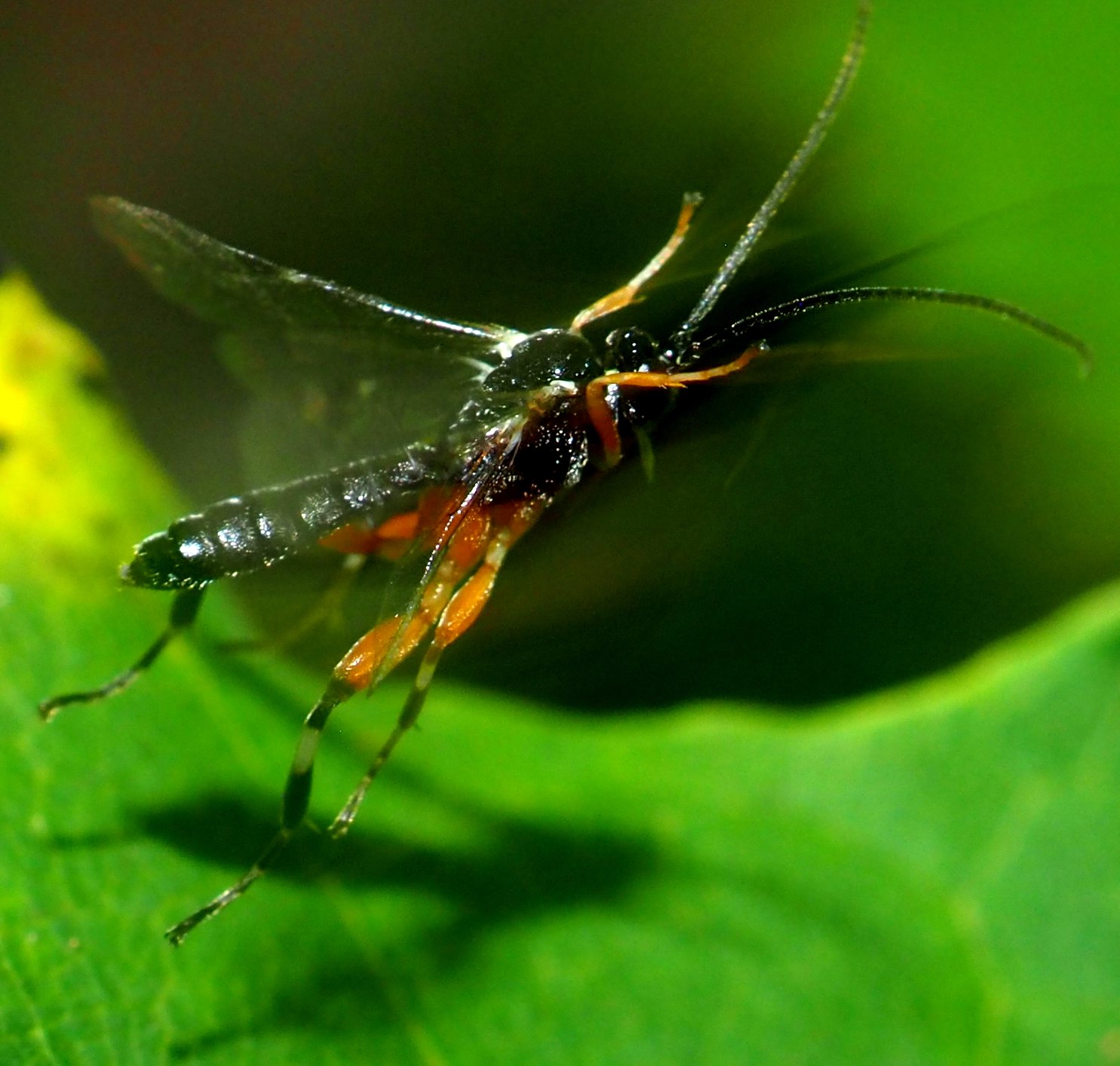
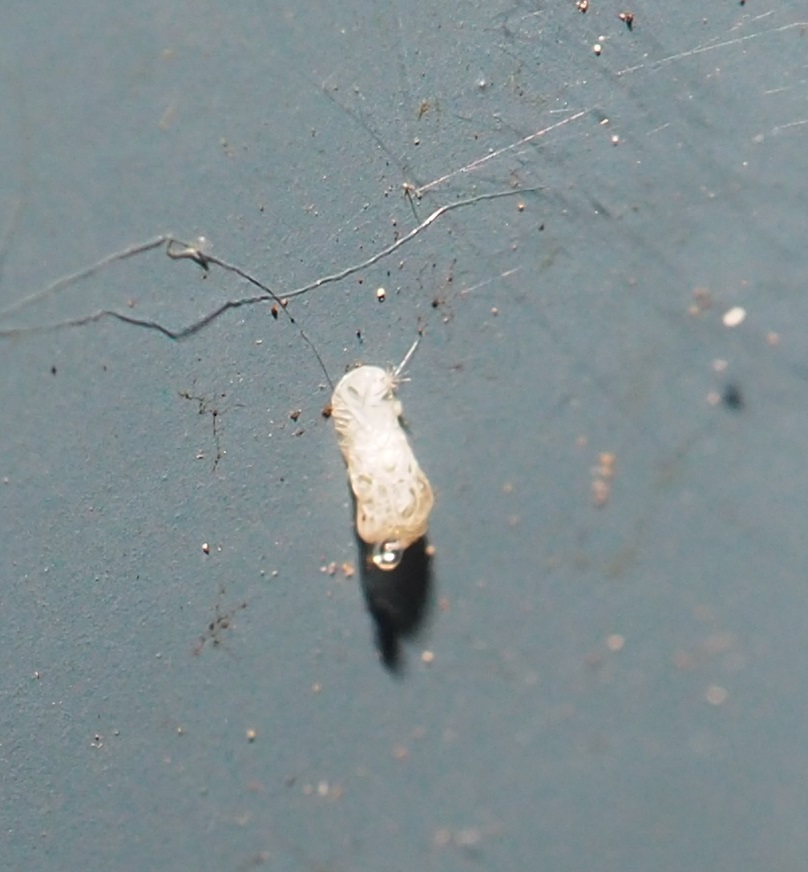
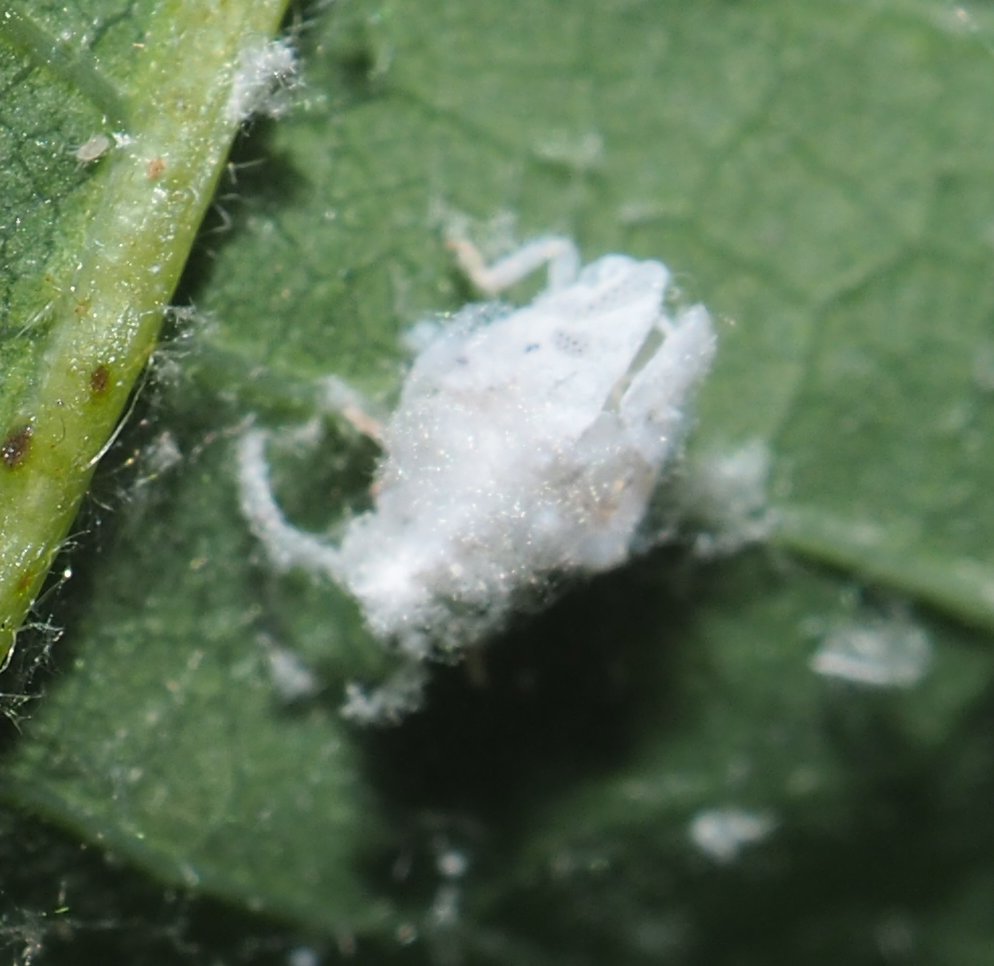
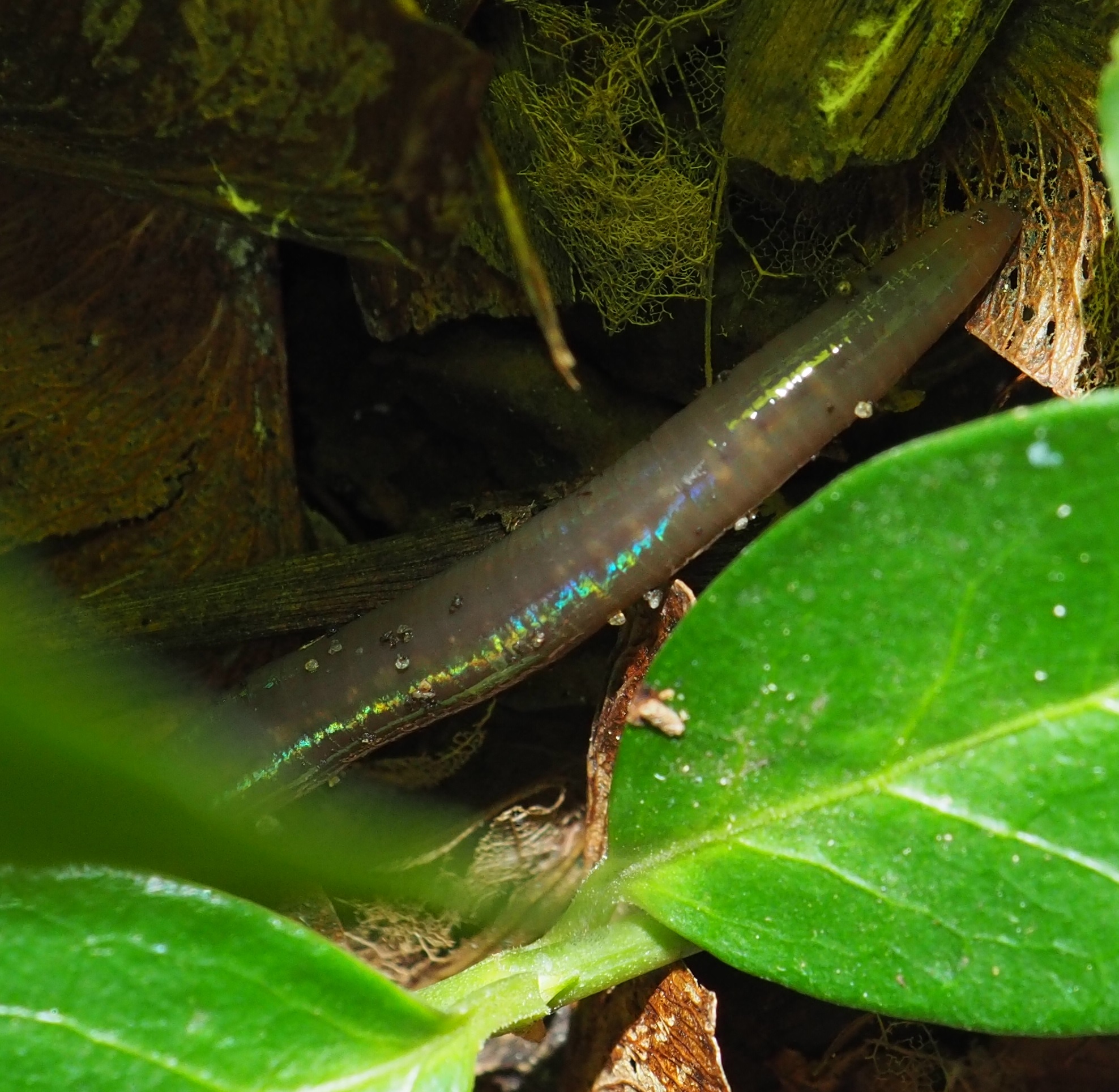



Here is some kind of wasp, but I don't know much about it. The ichneumon is from one of our earlier hunts.



Here are more wasps and ichneumon wasps. They are lovely to watch as they seem to twinkle, moving their bodies as if in keeping alert.



This is the same wasp as the last two just above. But it is now in flight - I like to think it's a comic character. The second image is of some unknown small creature! Finally, here's an earthworm, a big fat one scrambing past me.




Some tiny flower pictures: Beauty in microcosm?

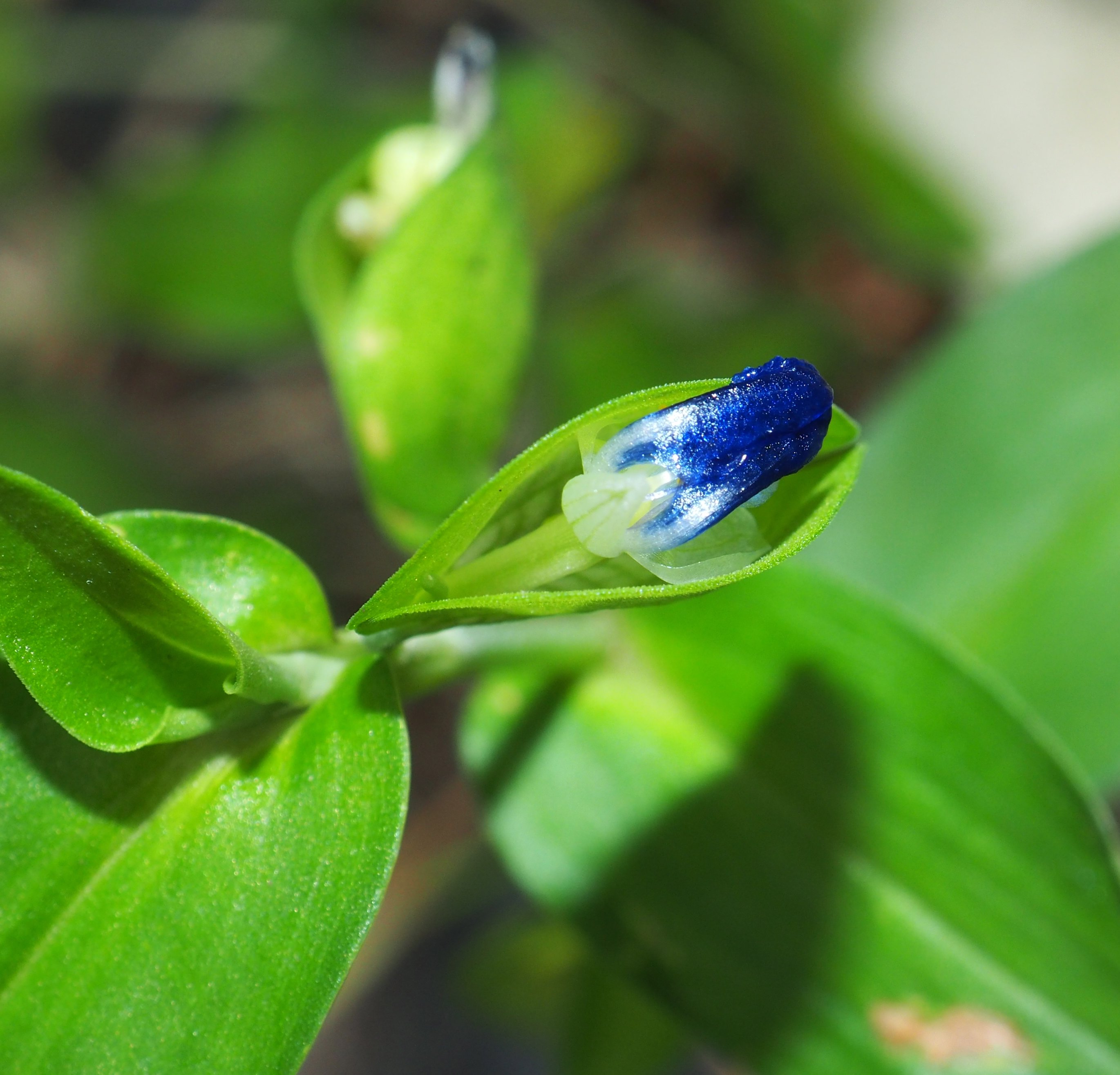
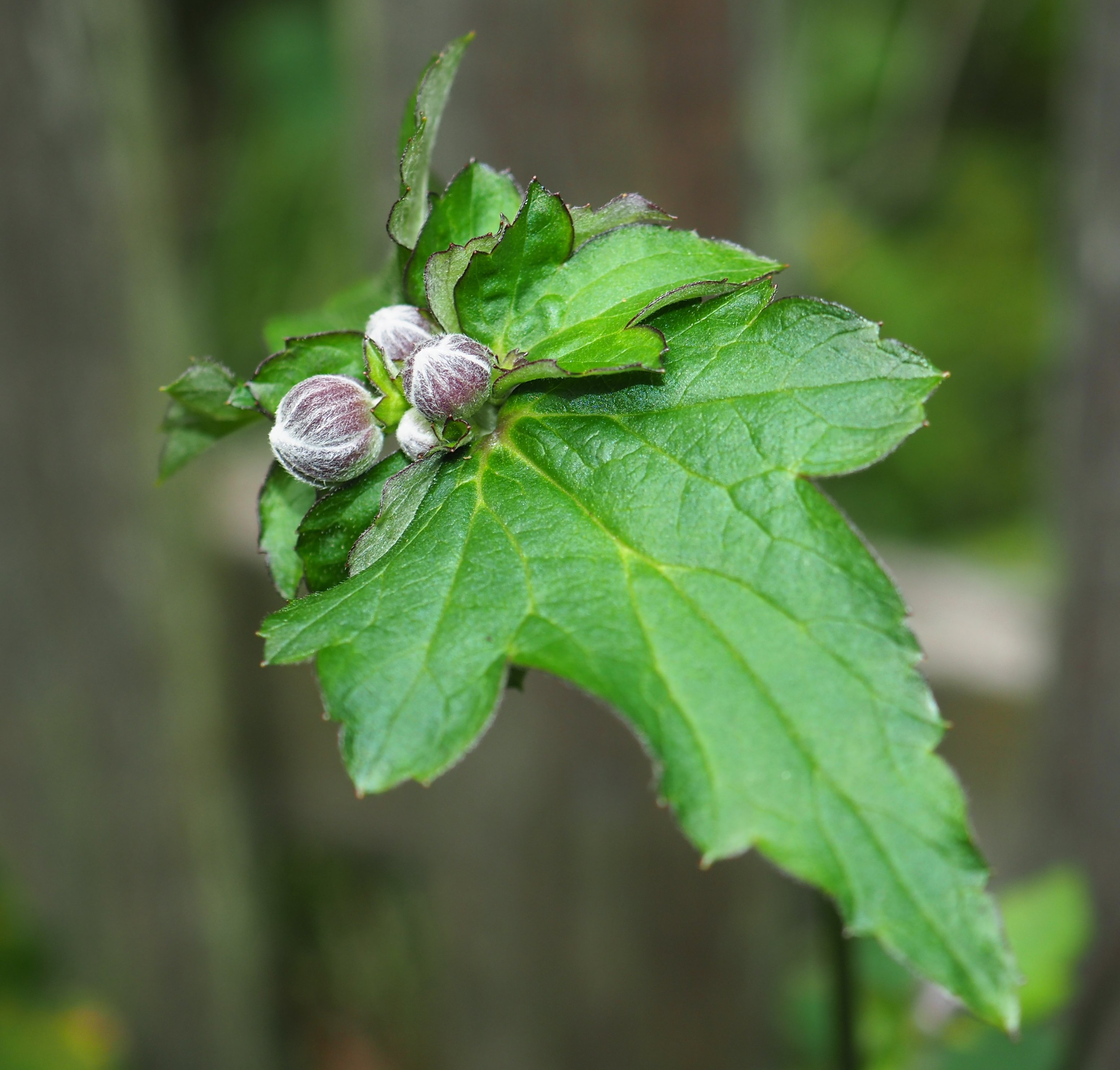
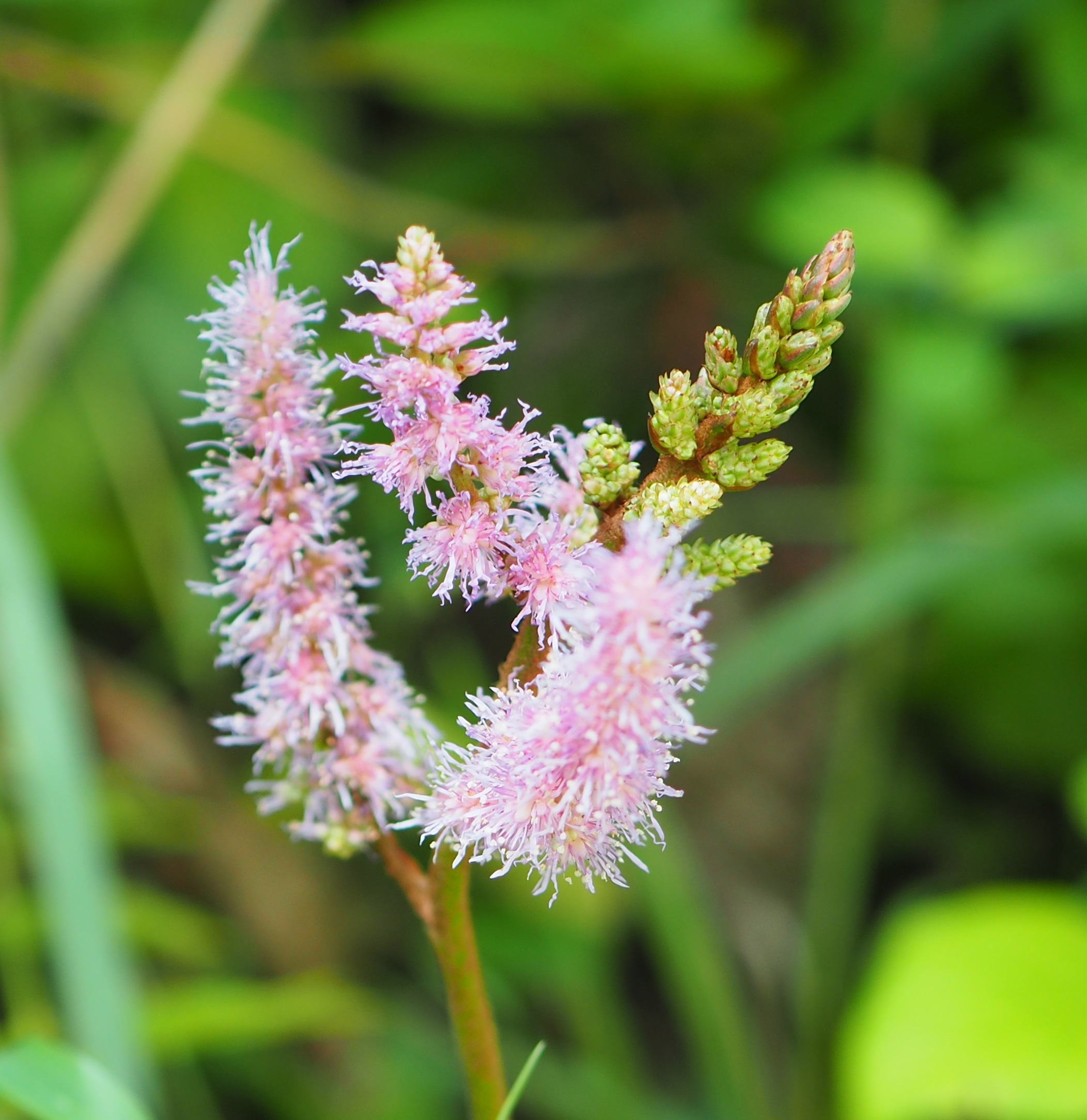
Well, I don't have many amazing words of extreme ecstasy. But better yet, there is so much wonder in small doses that it adds up to much the same!
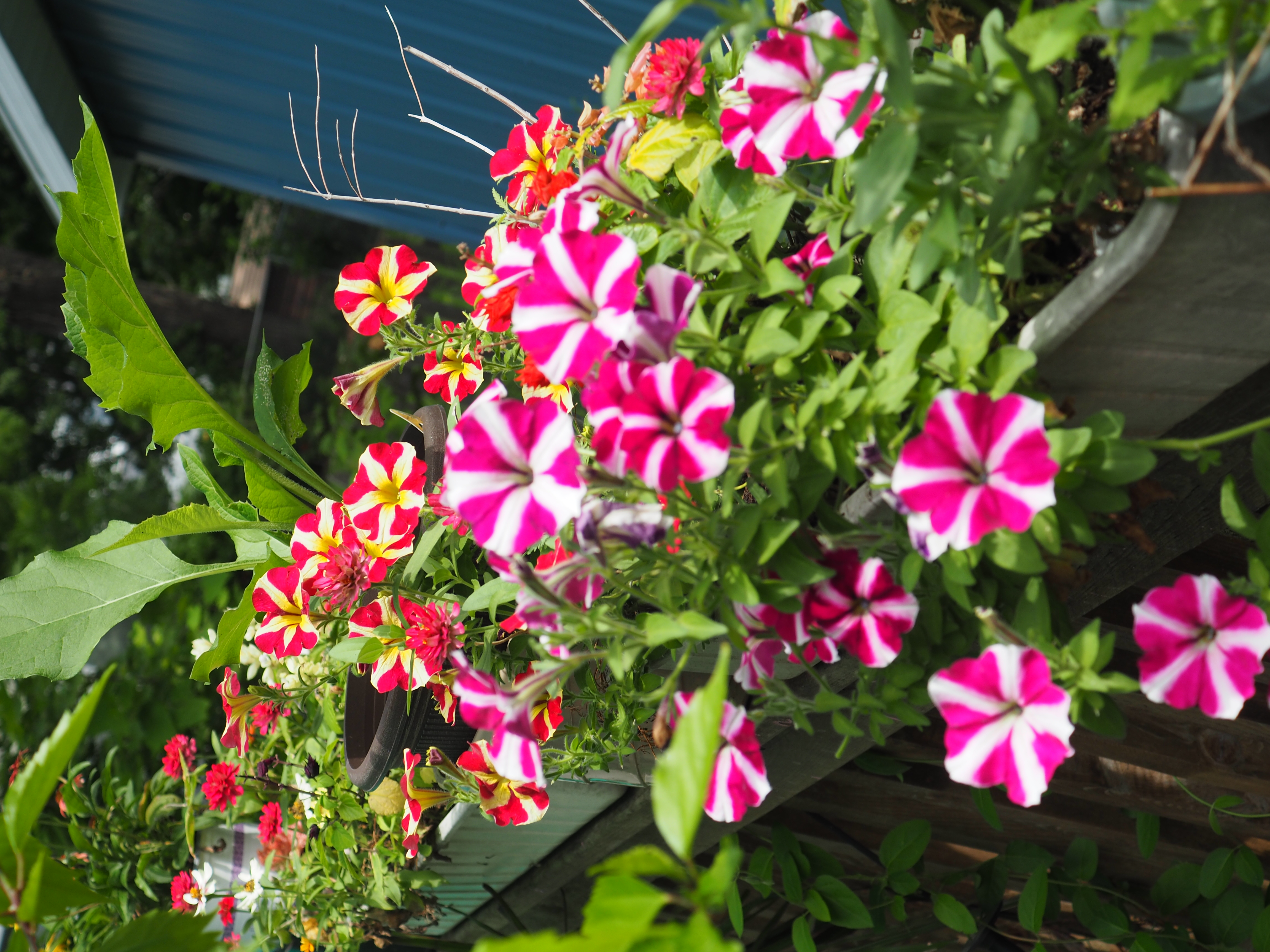
So everyone take good care of him/herself.. We don't do "theirself".
Love to everyone,
Martha
Back to July 29, 2018
Forward to August 12, 2018
Back to main menu
copyright Martha O'Kennon 2018















































































































